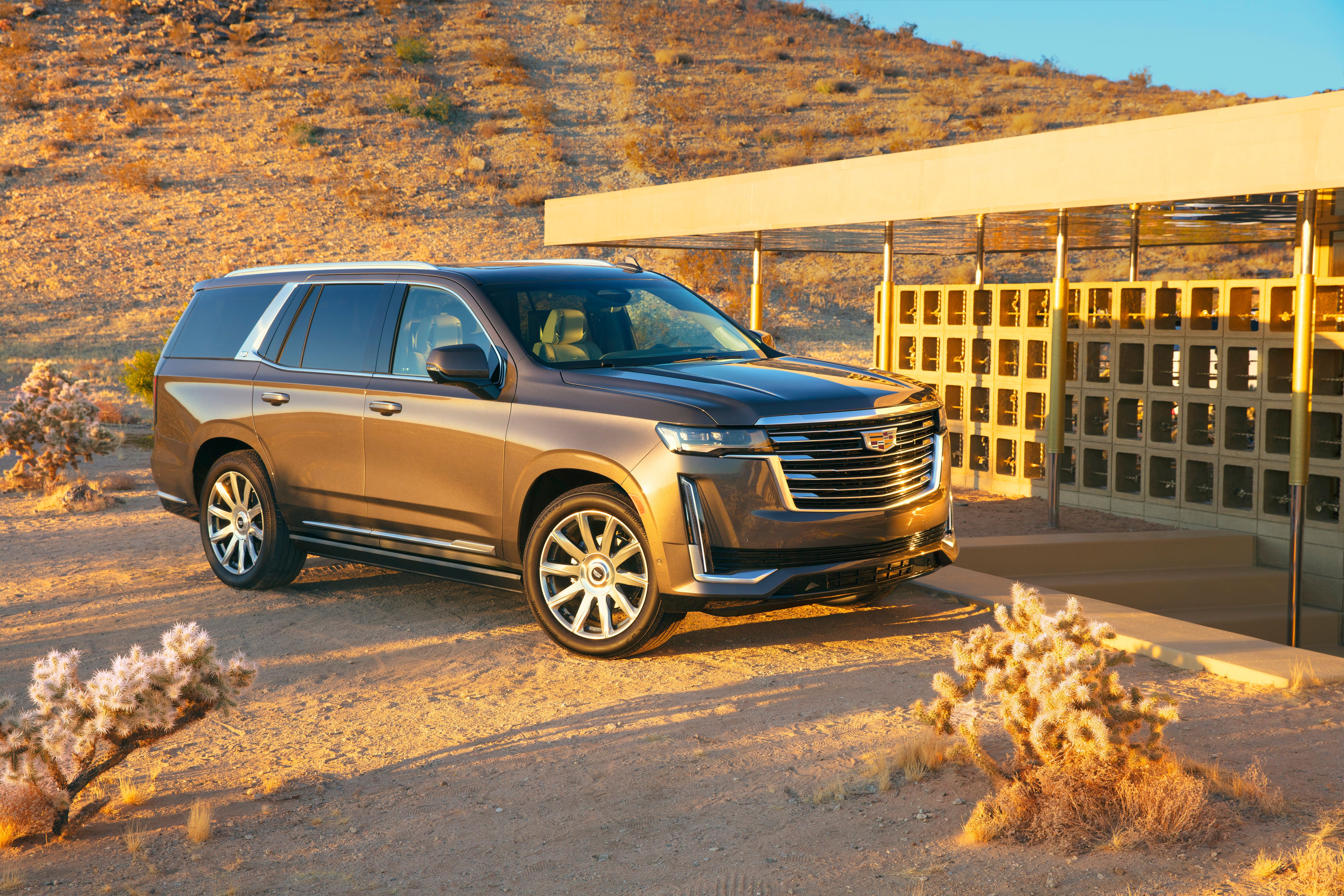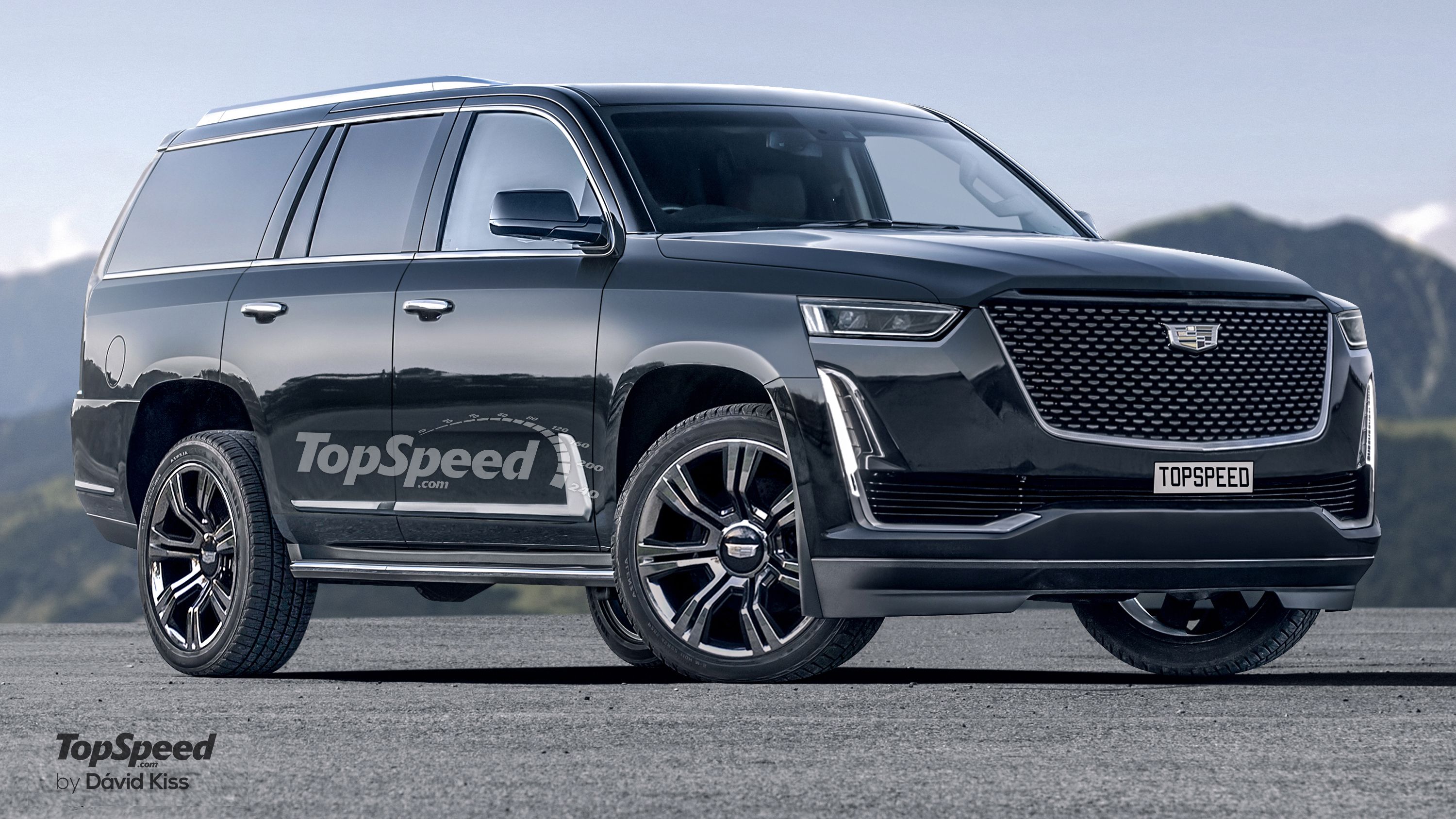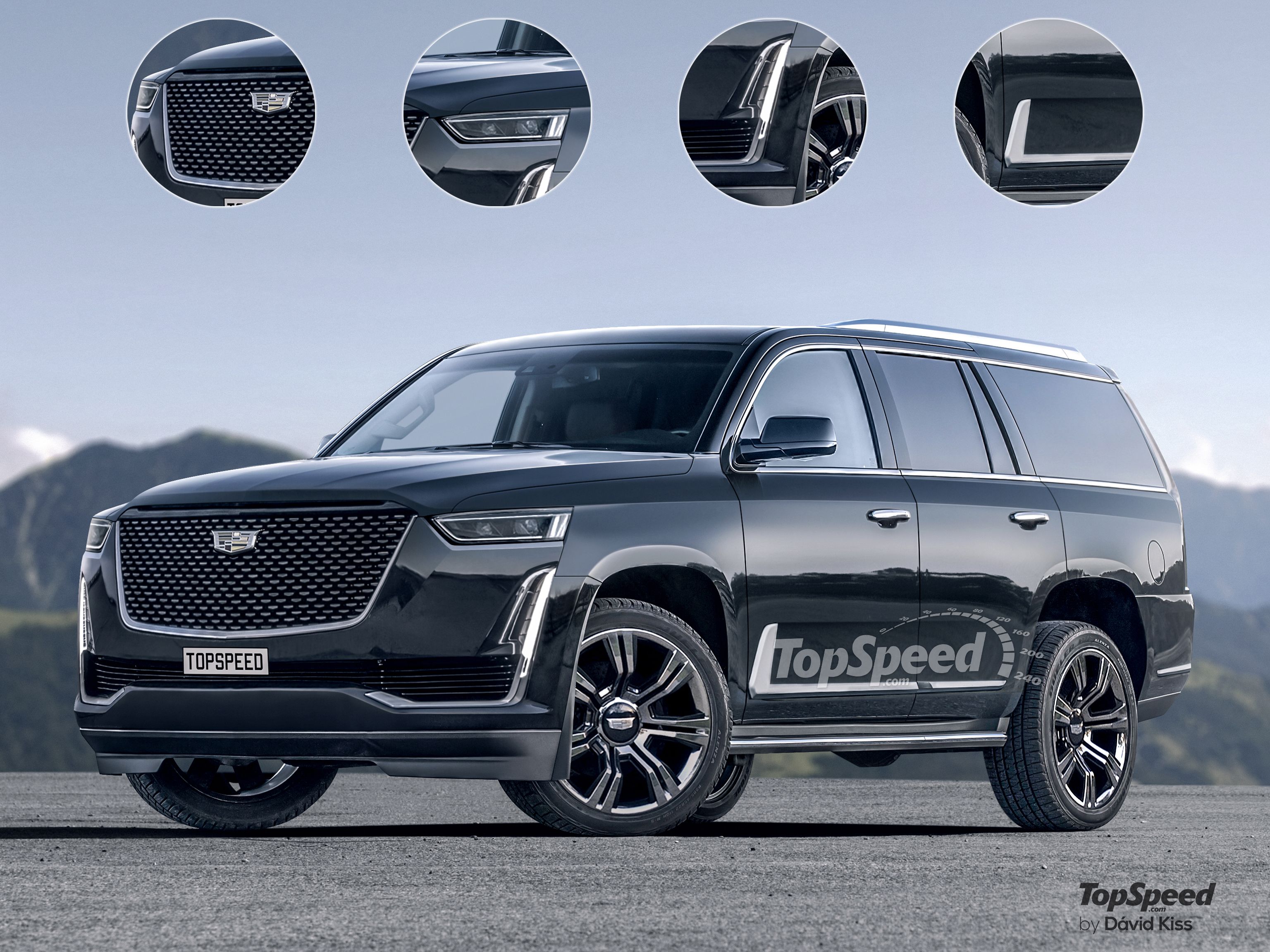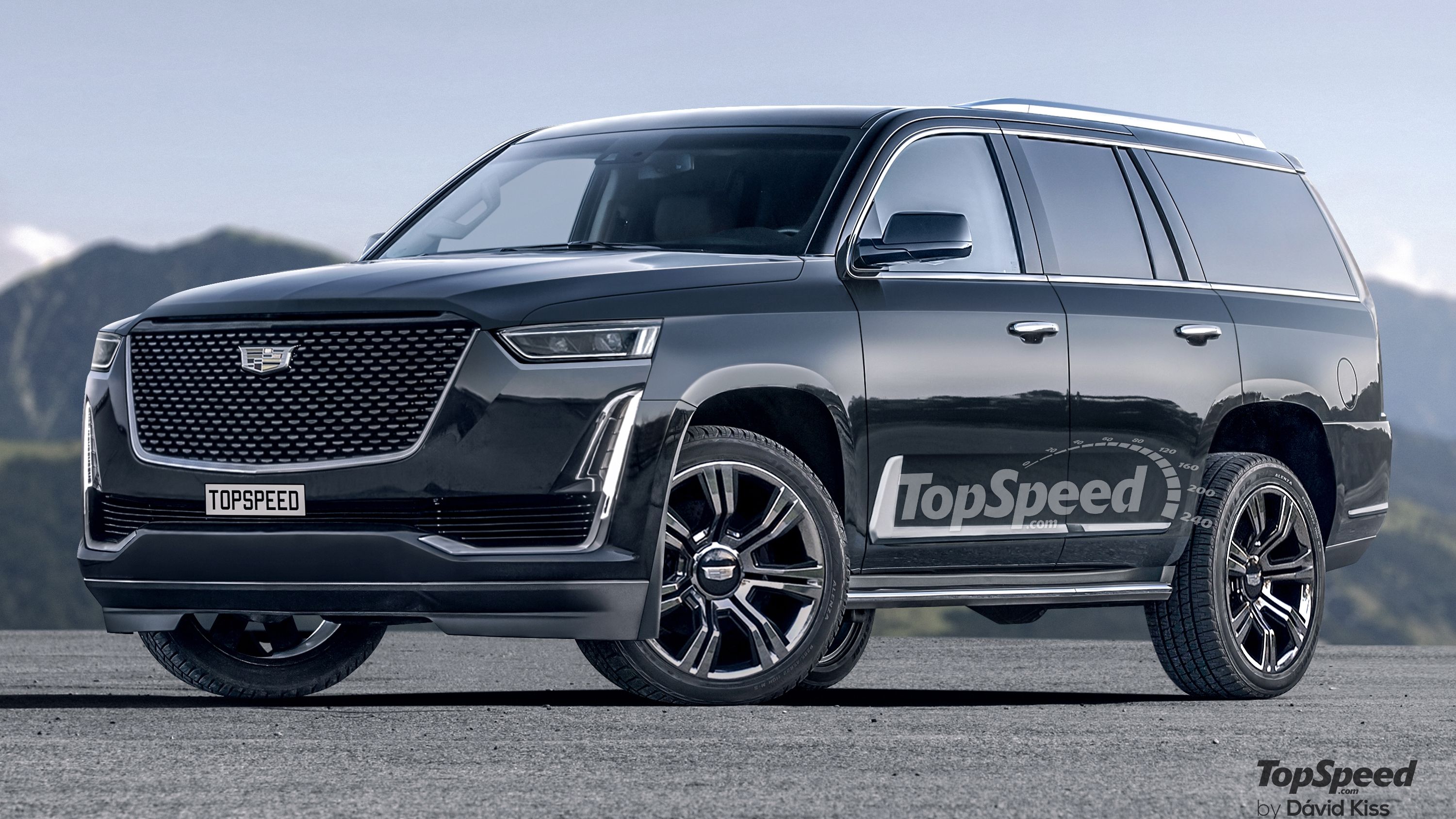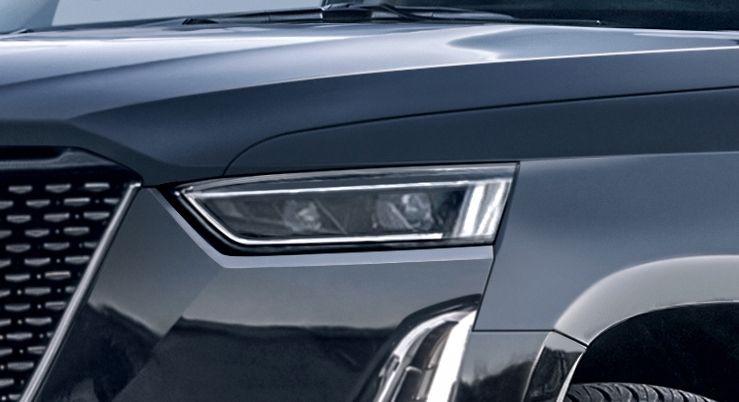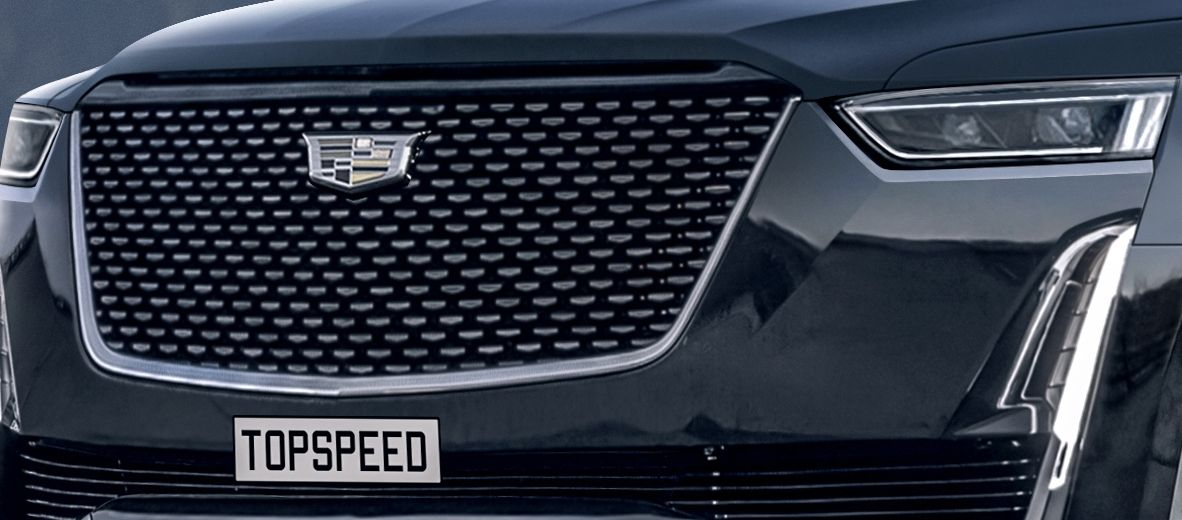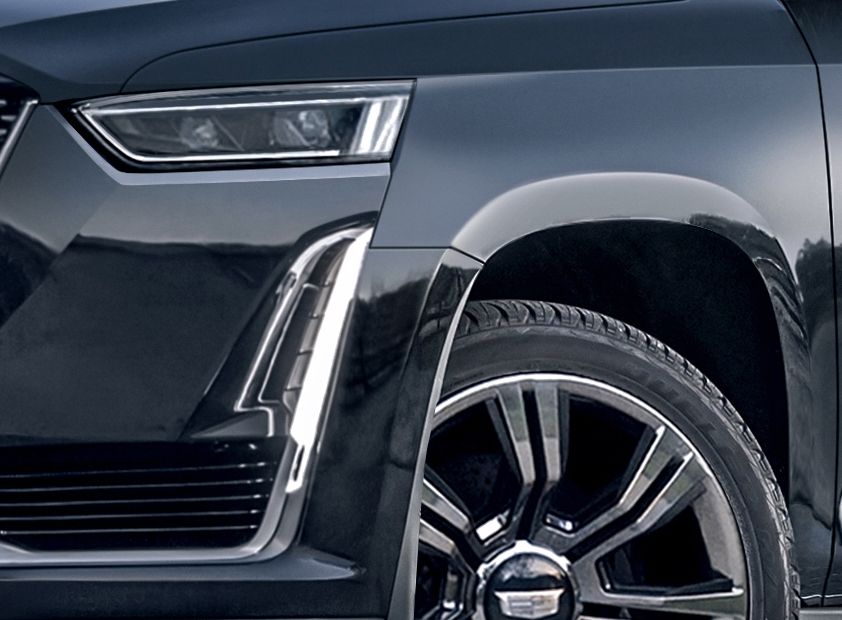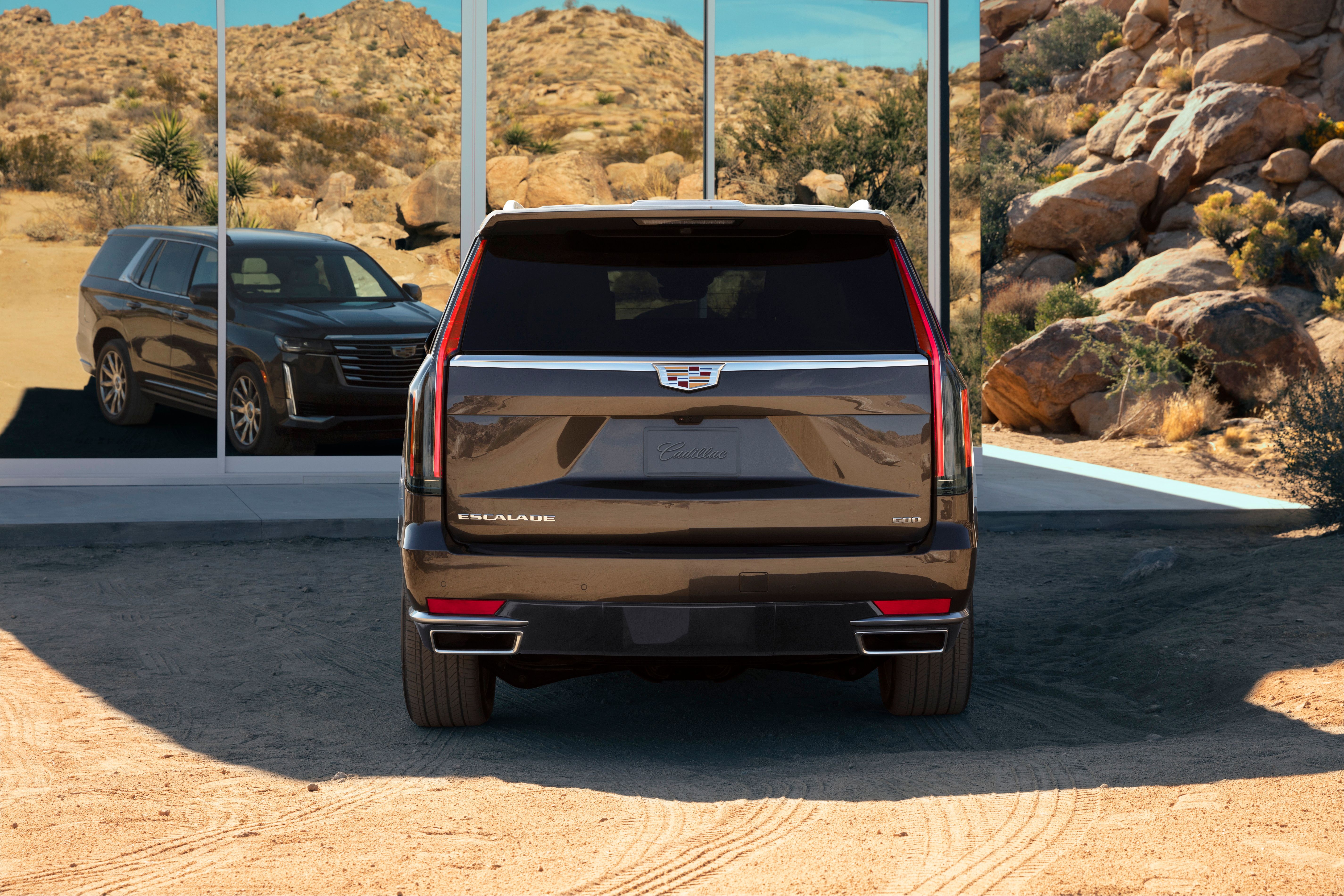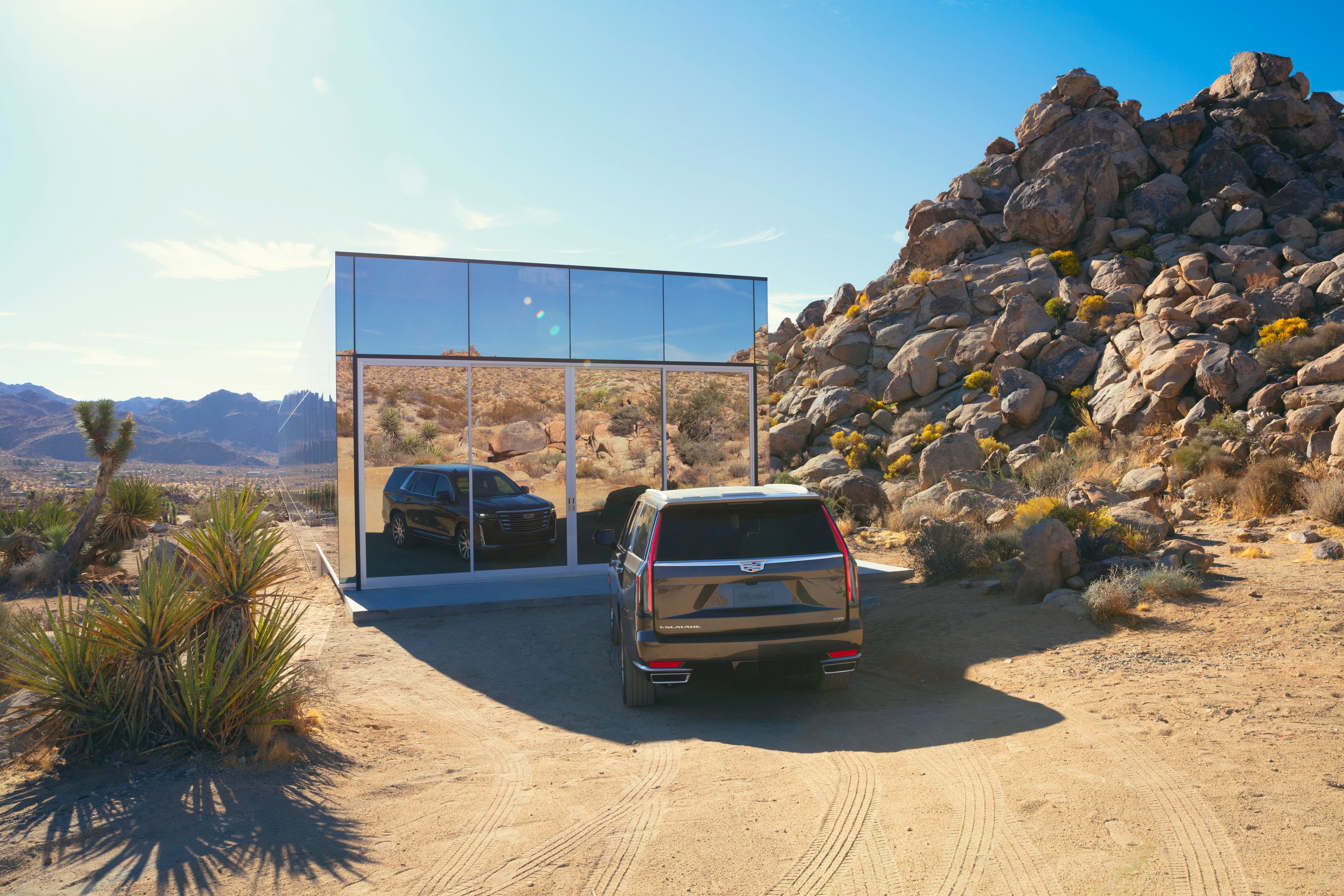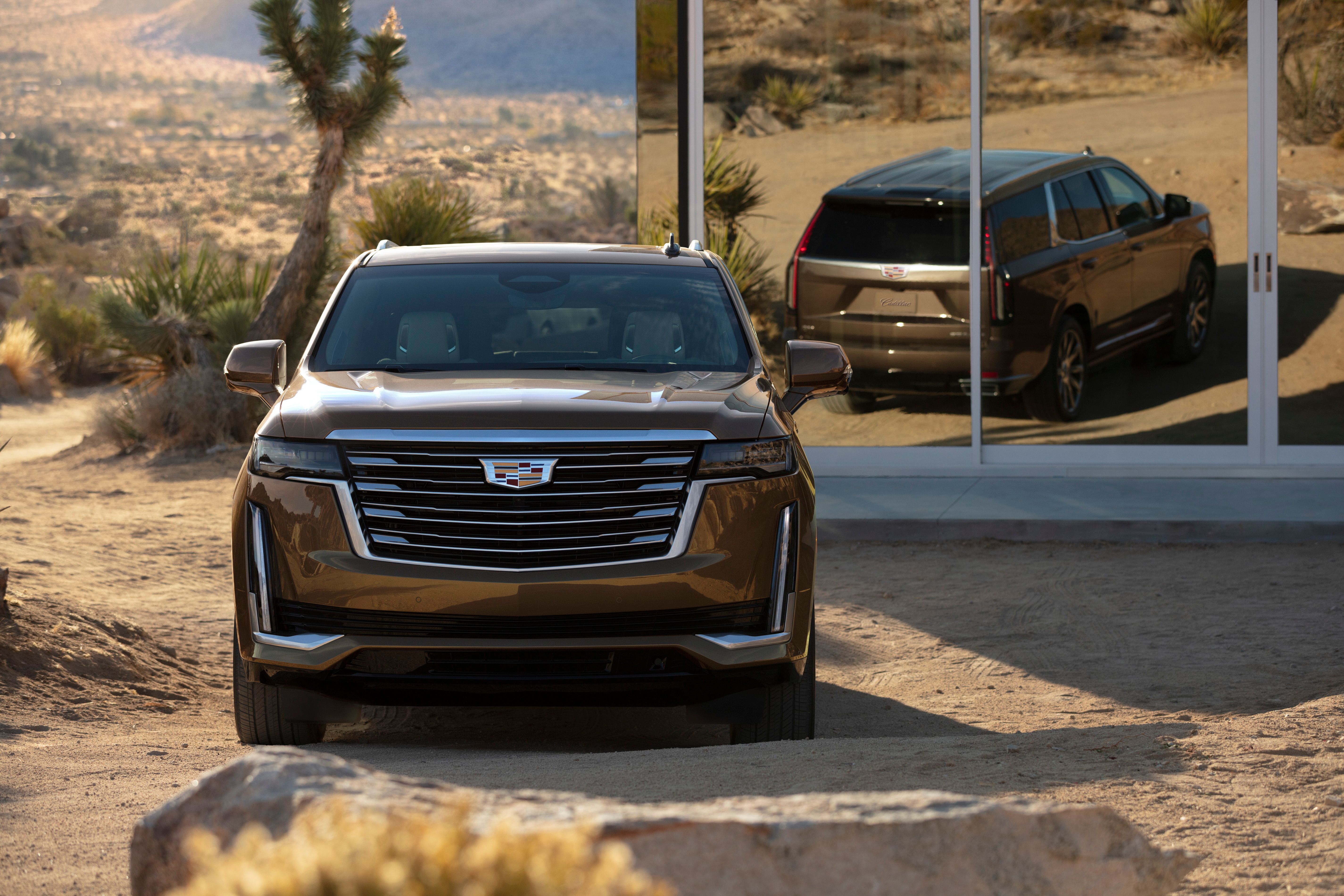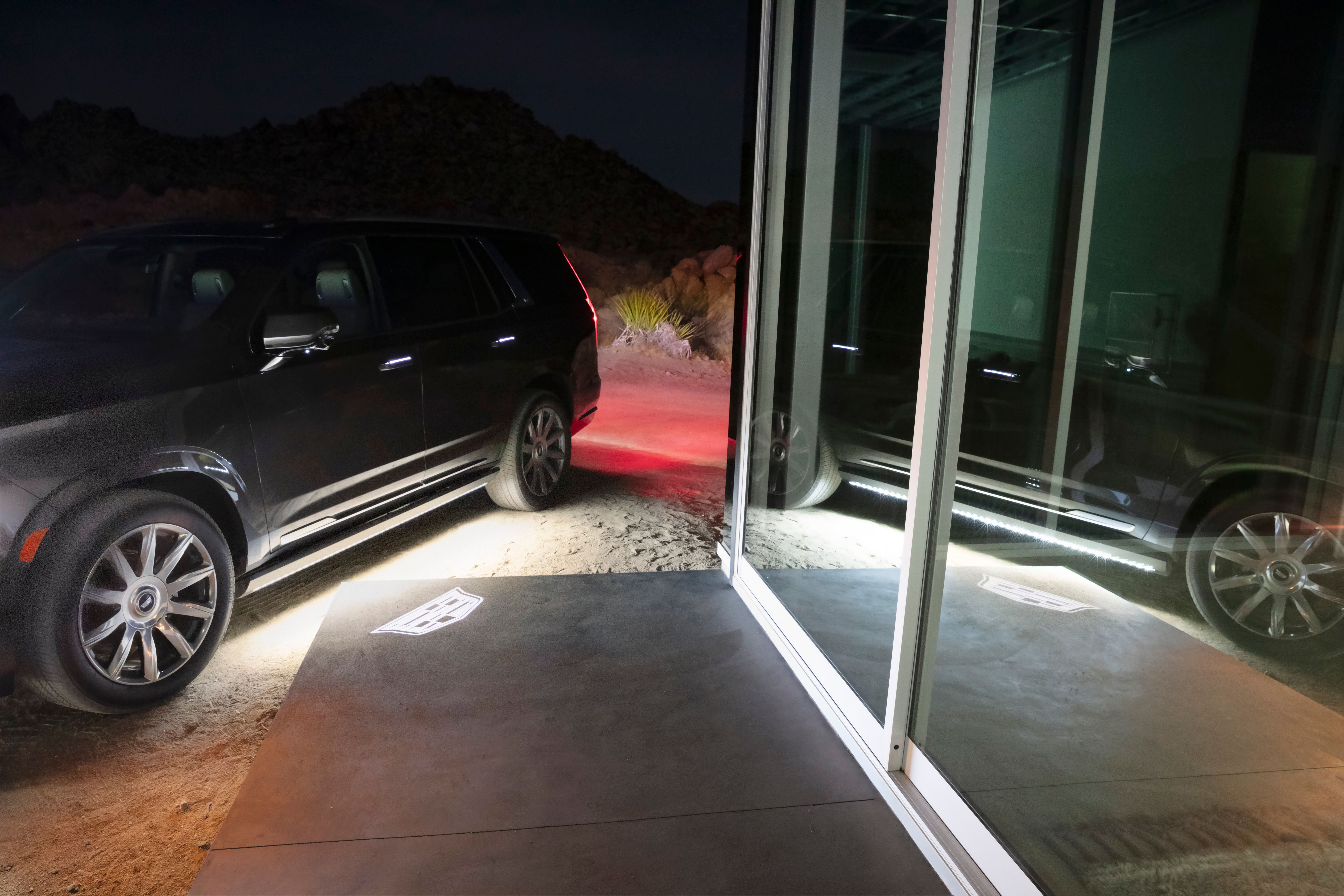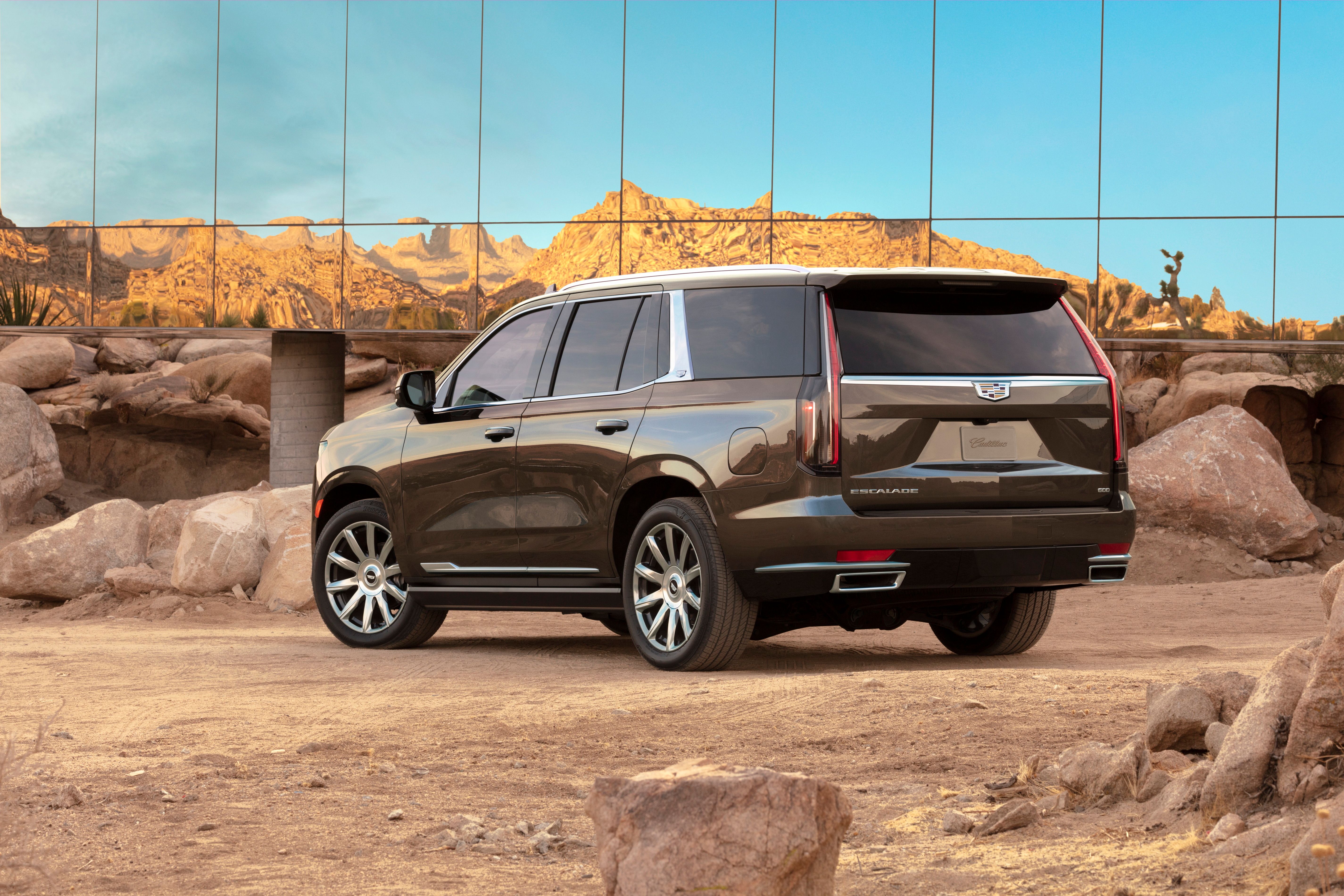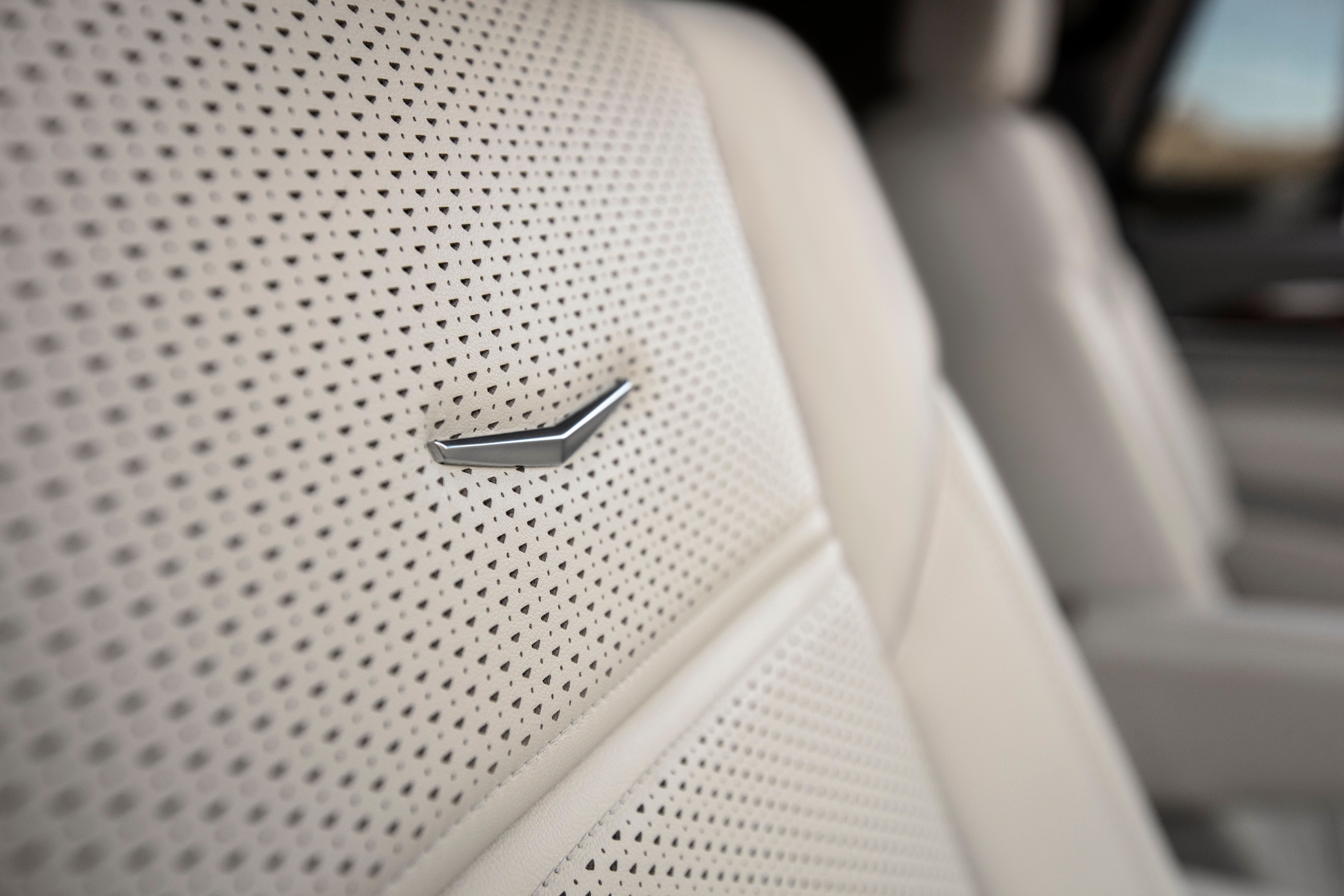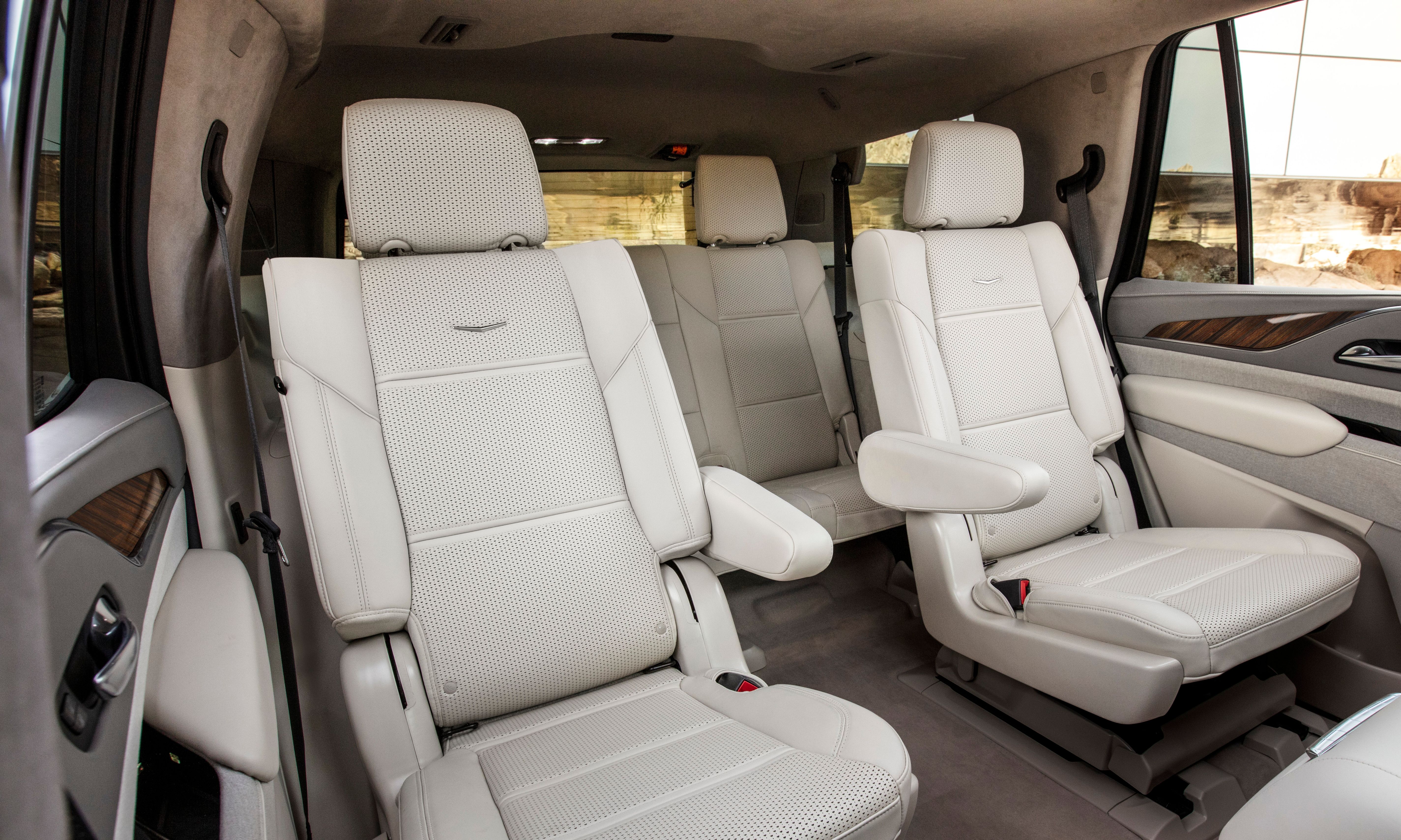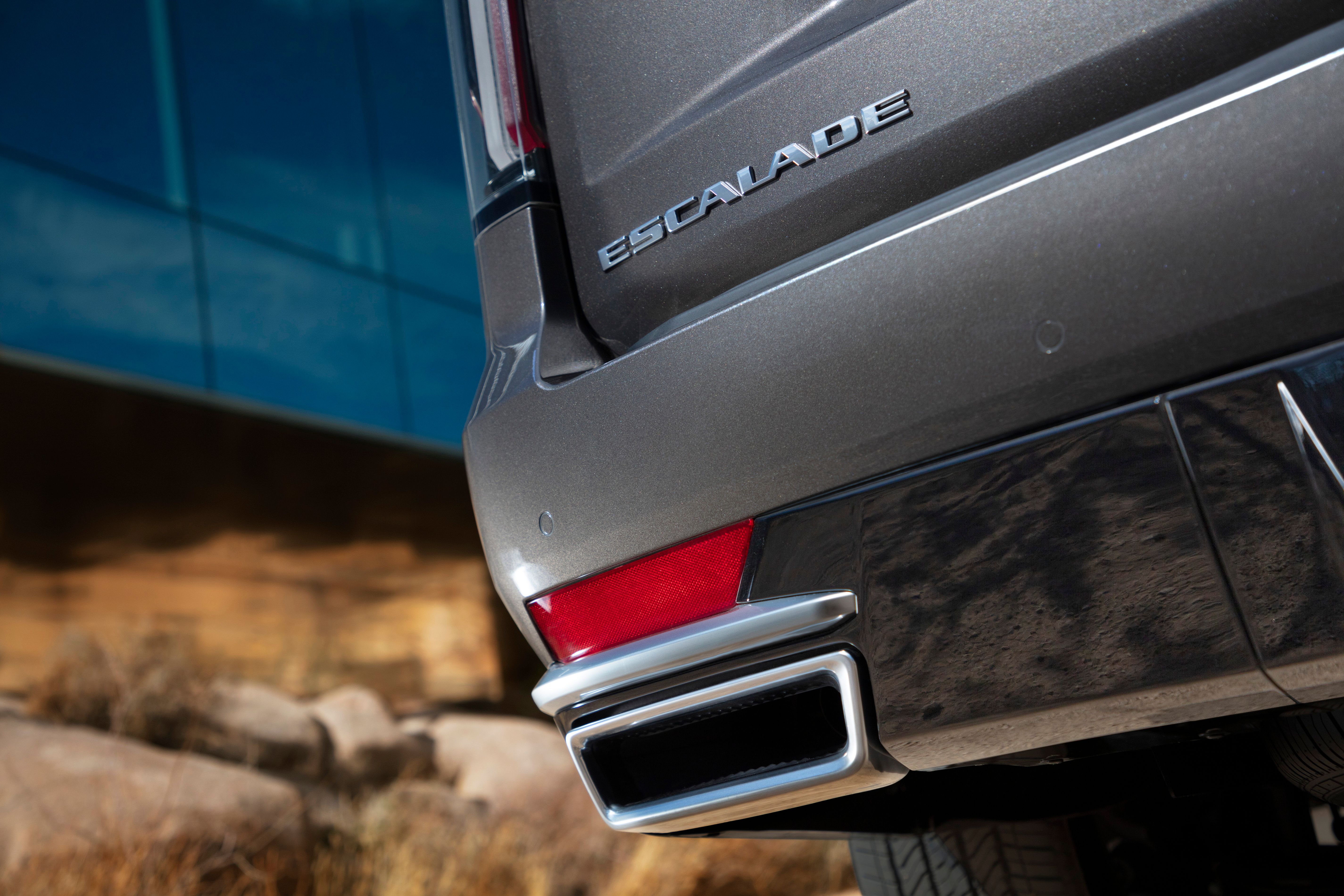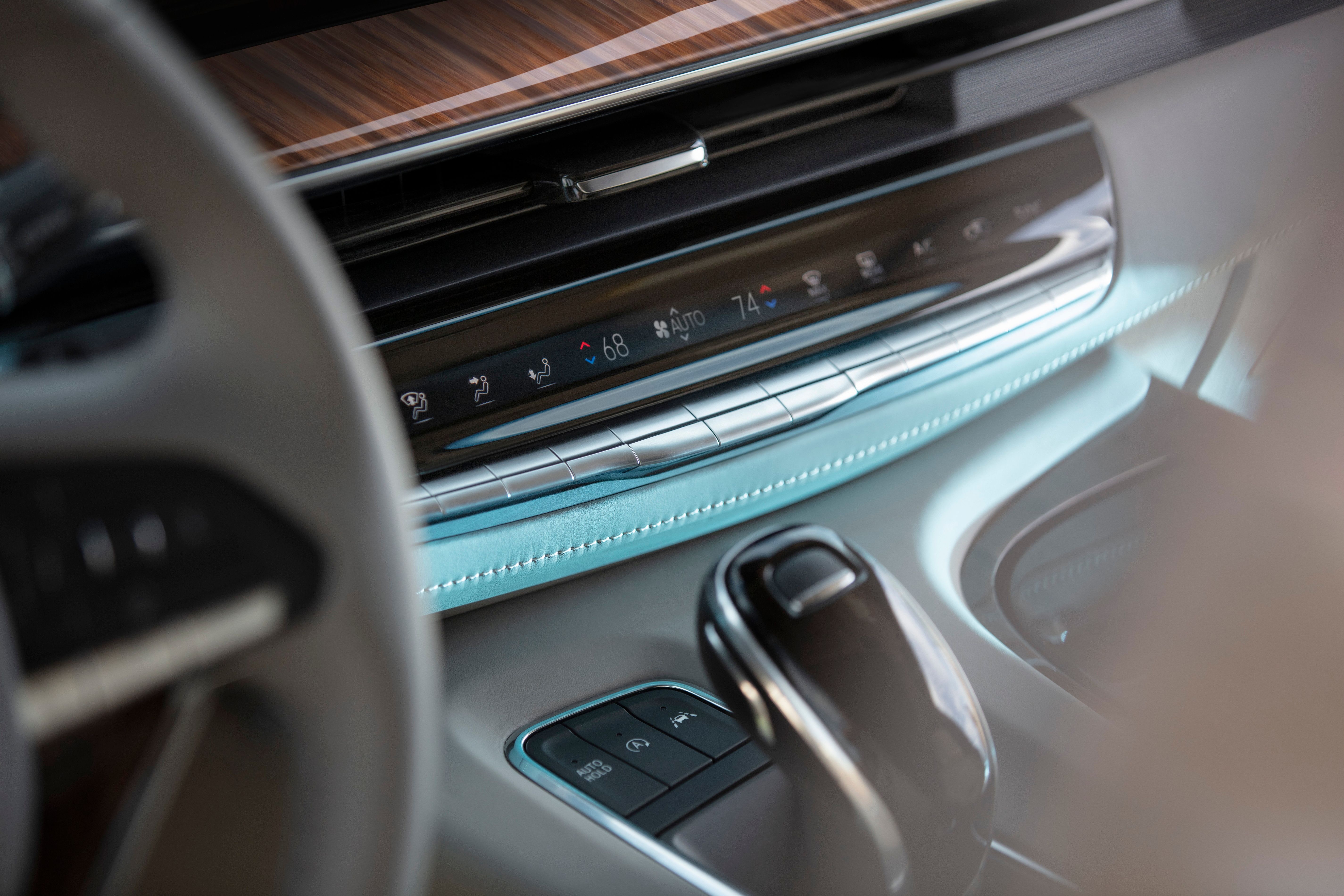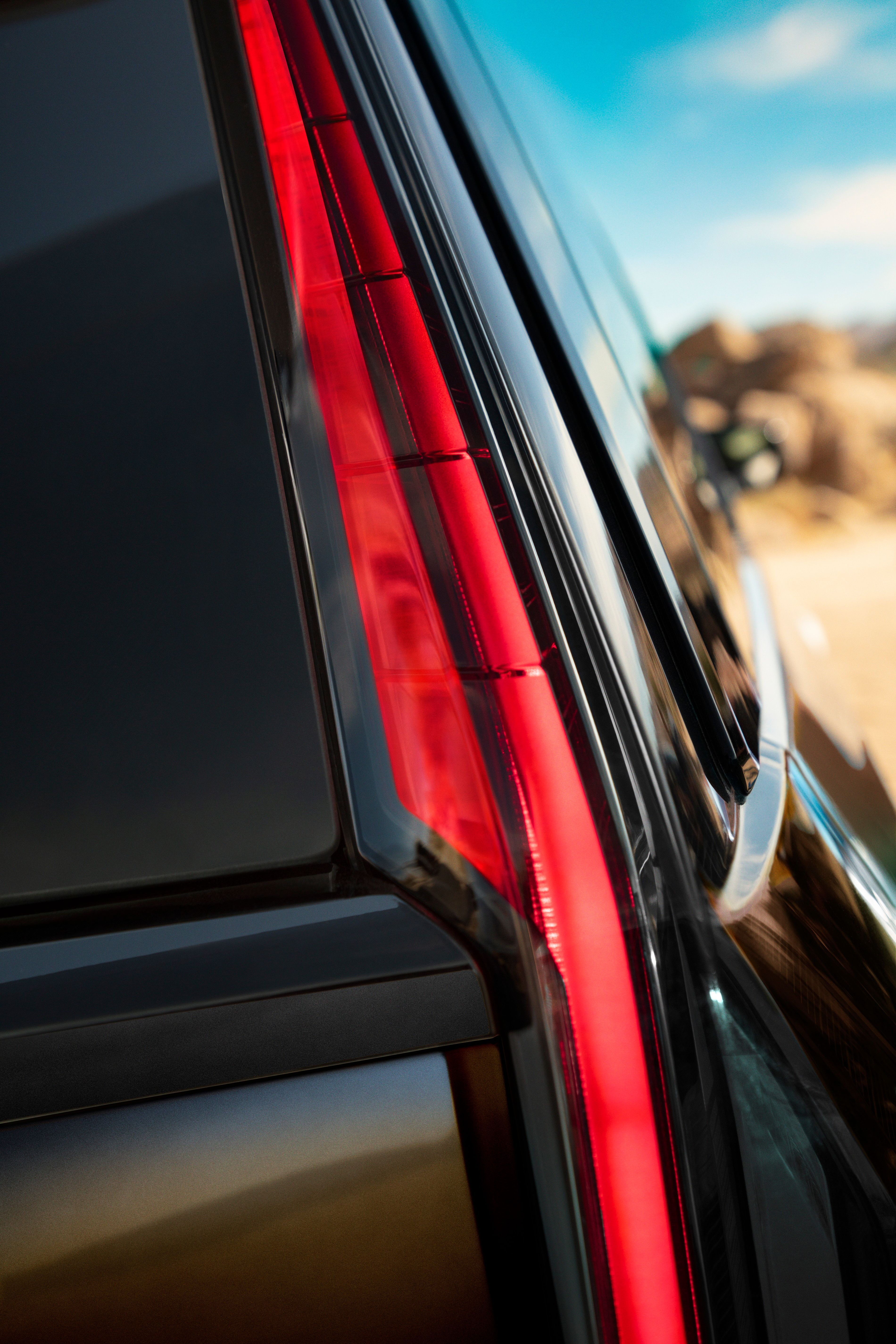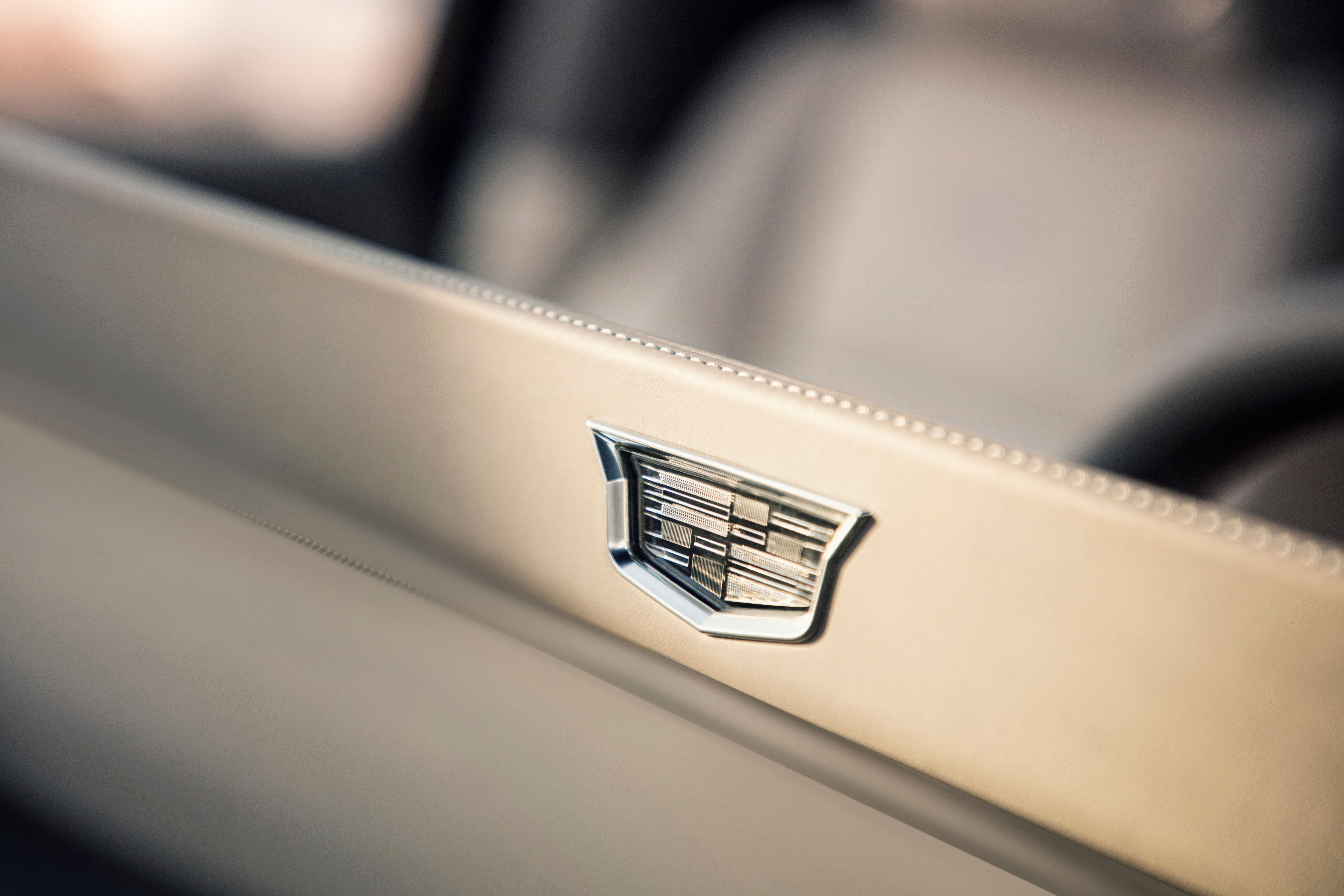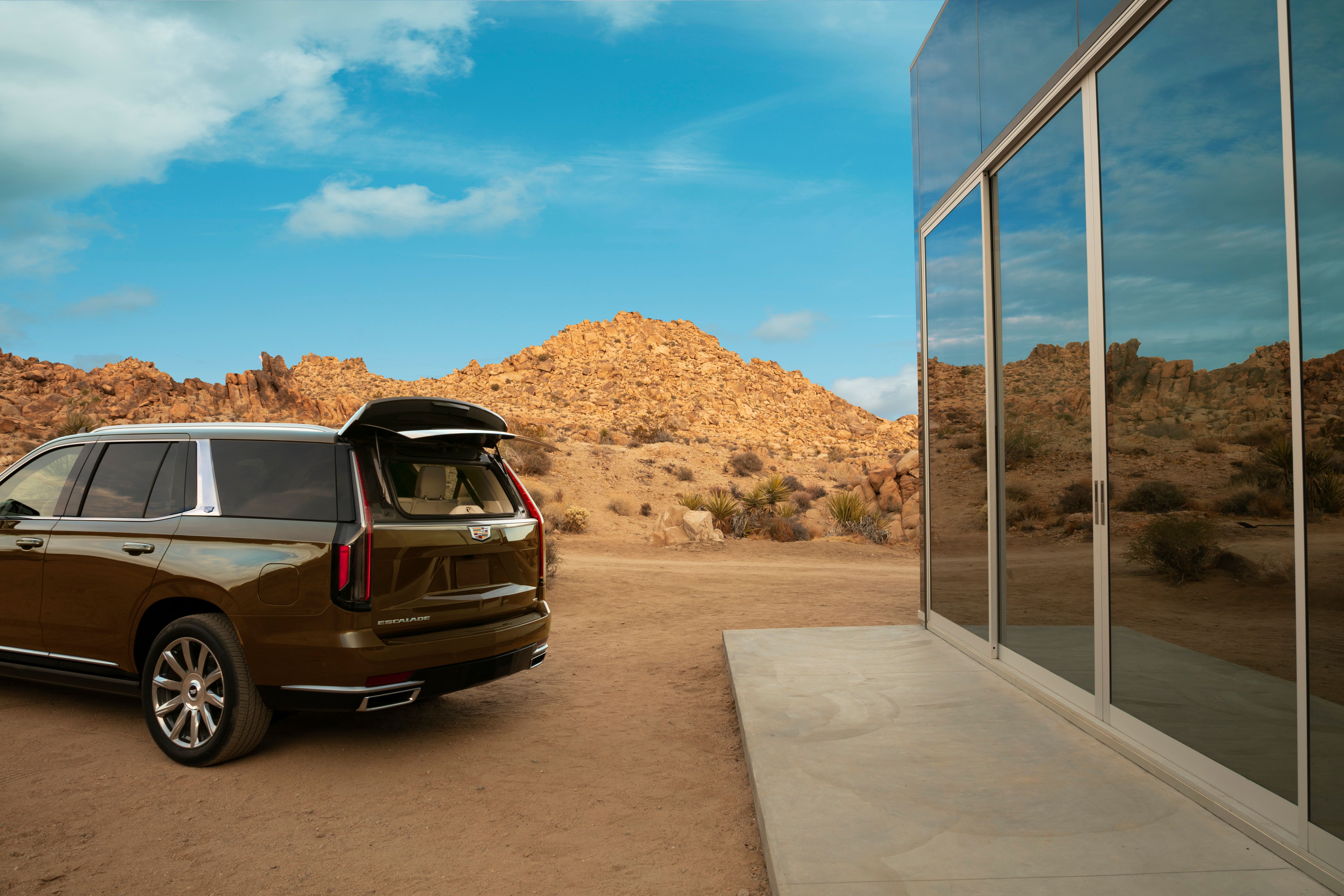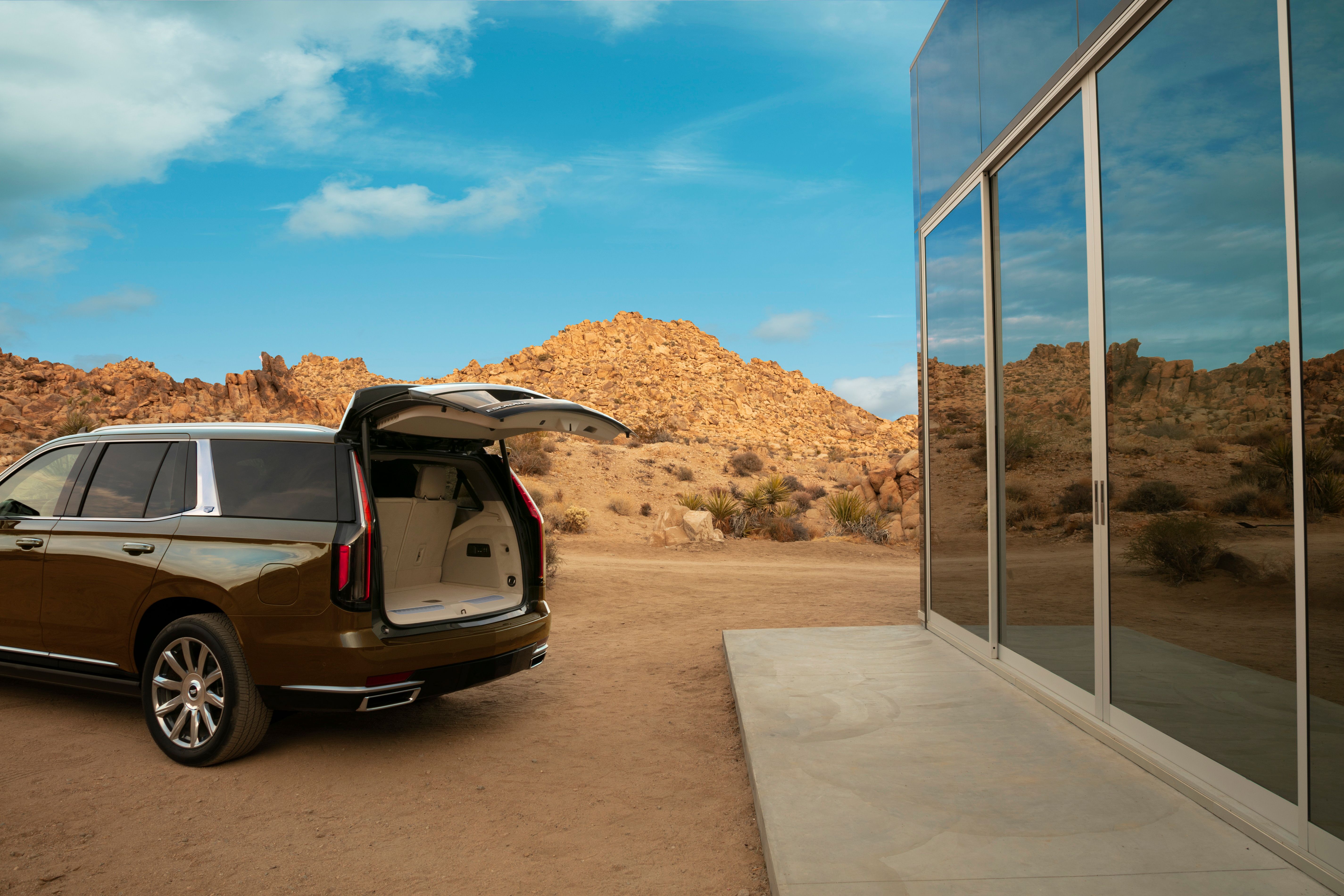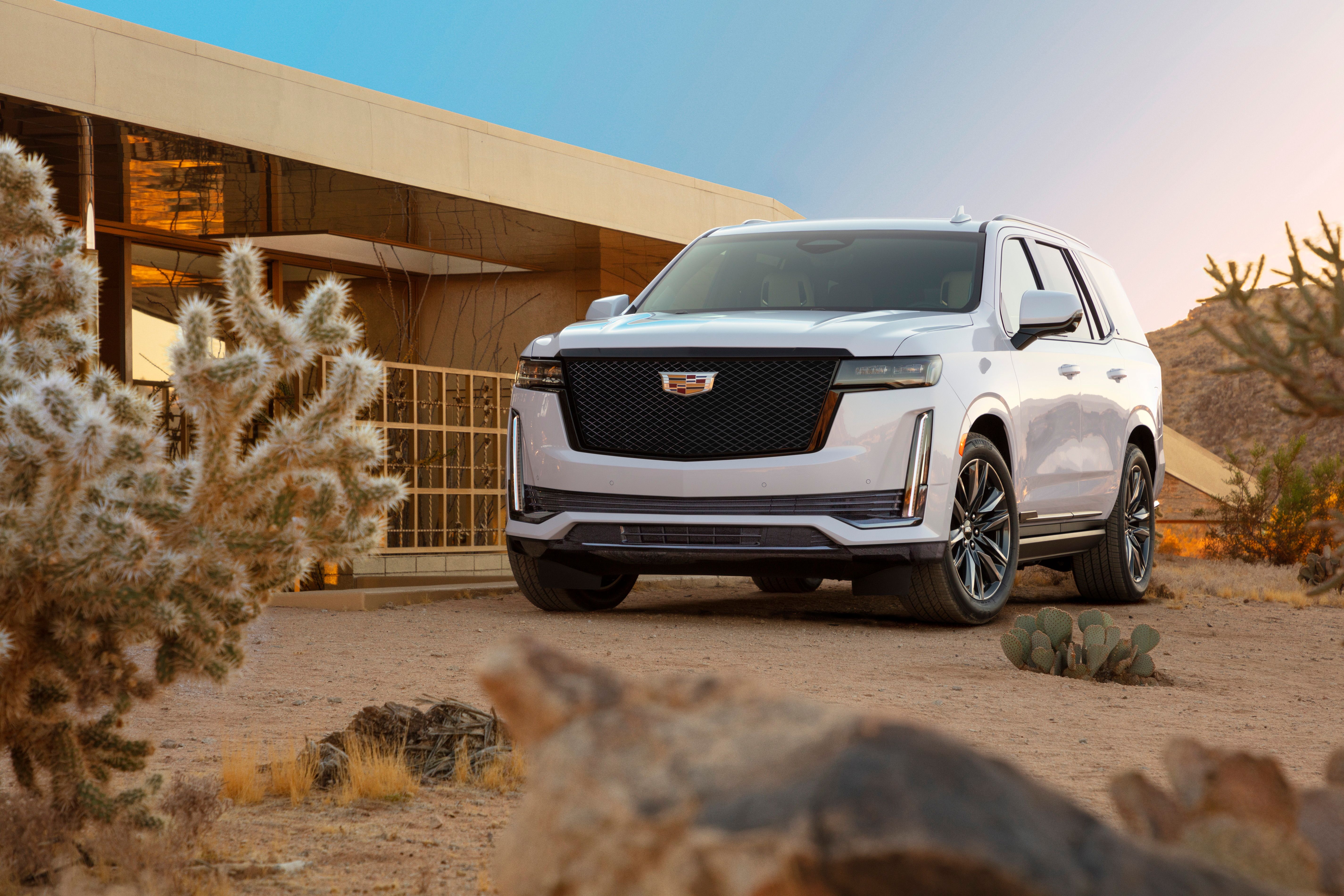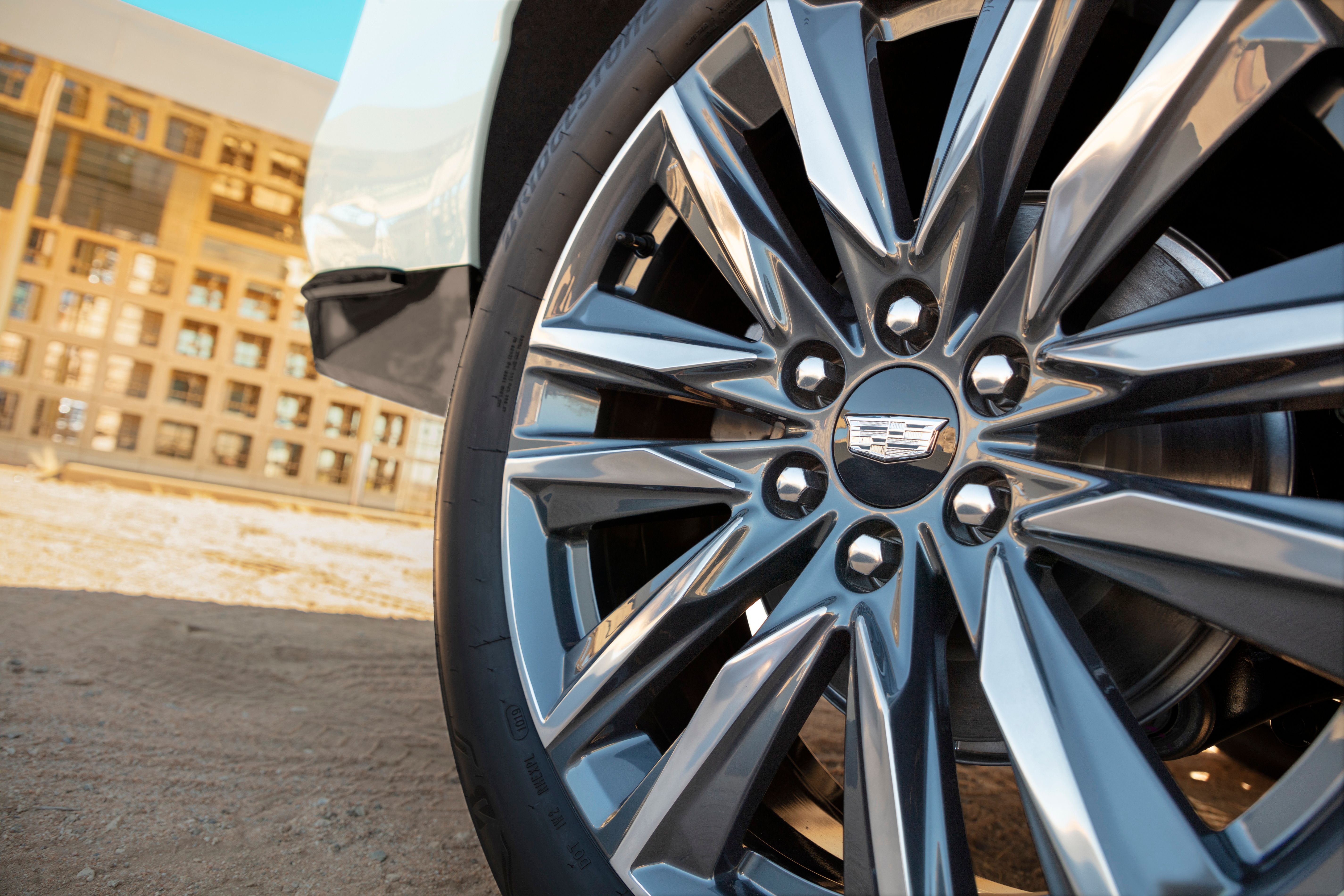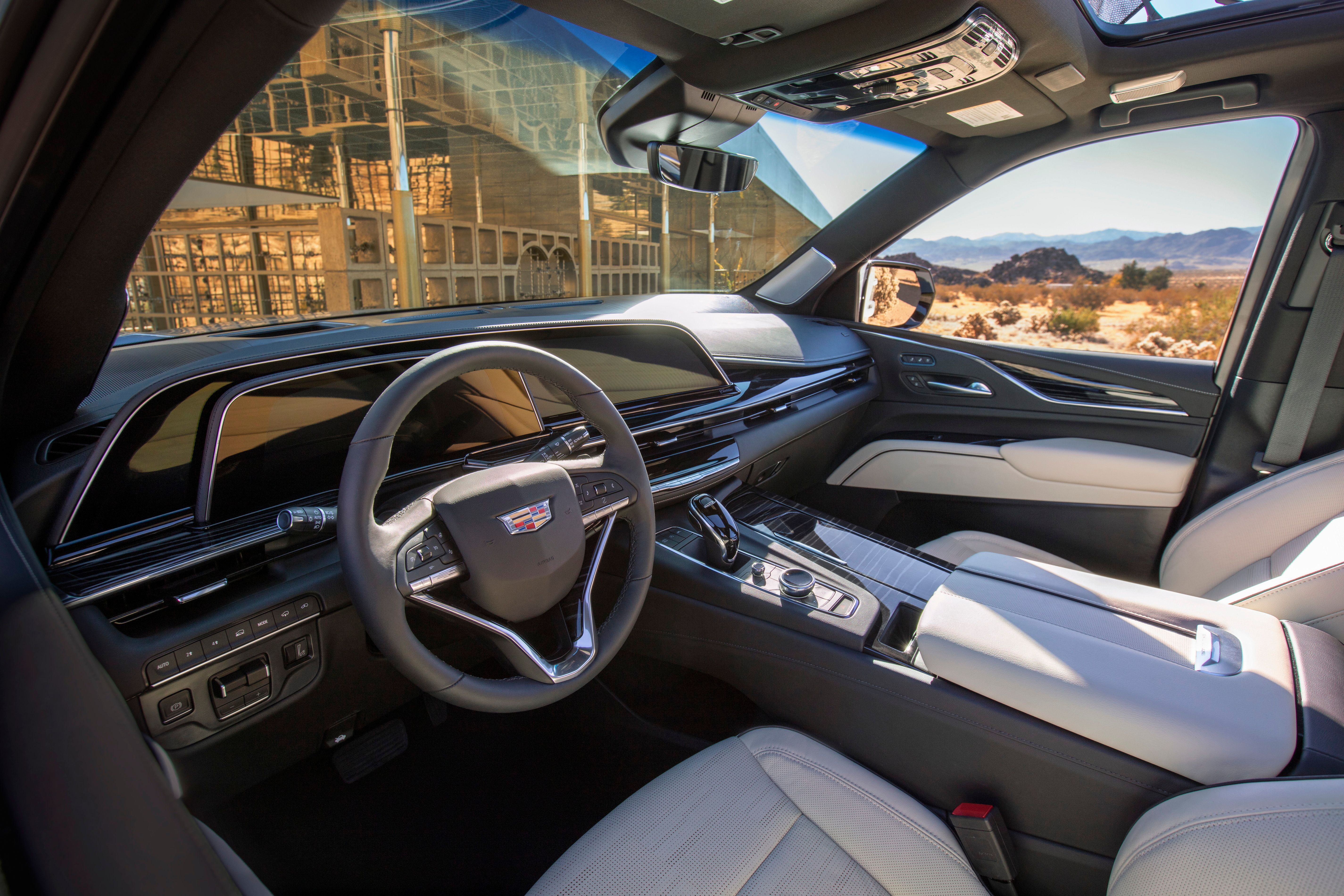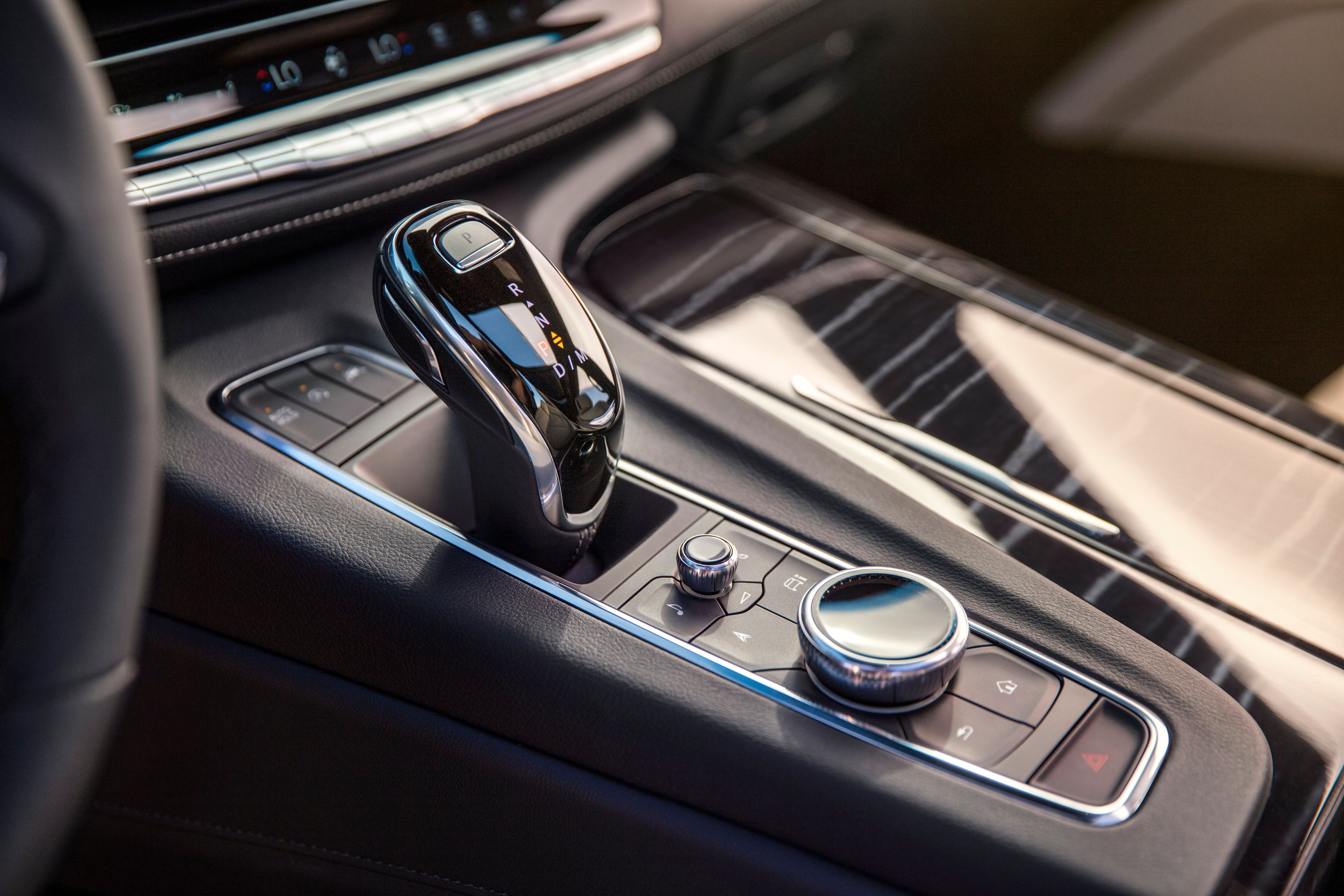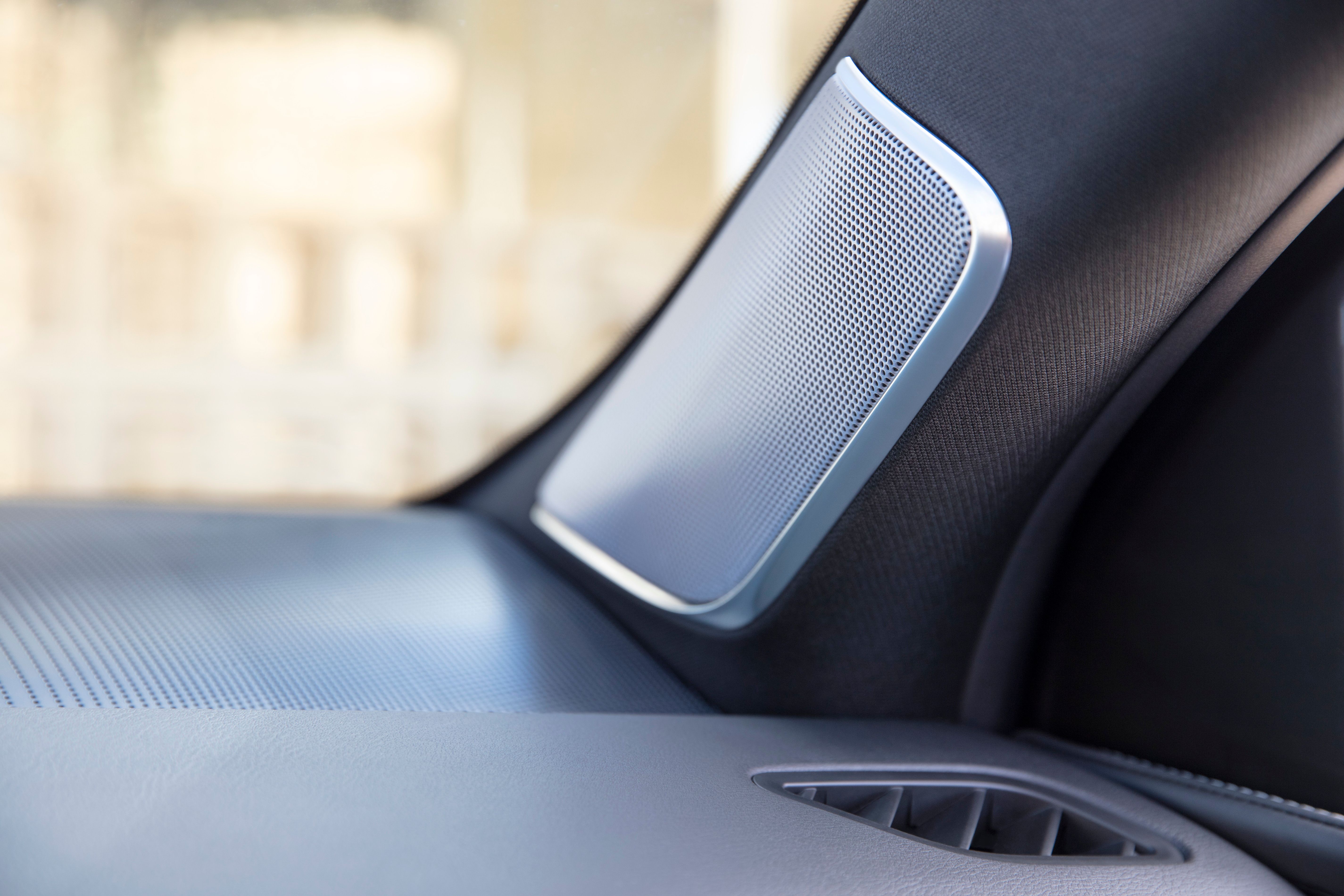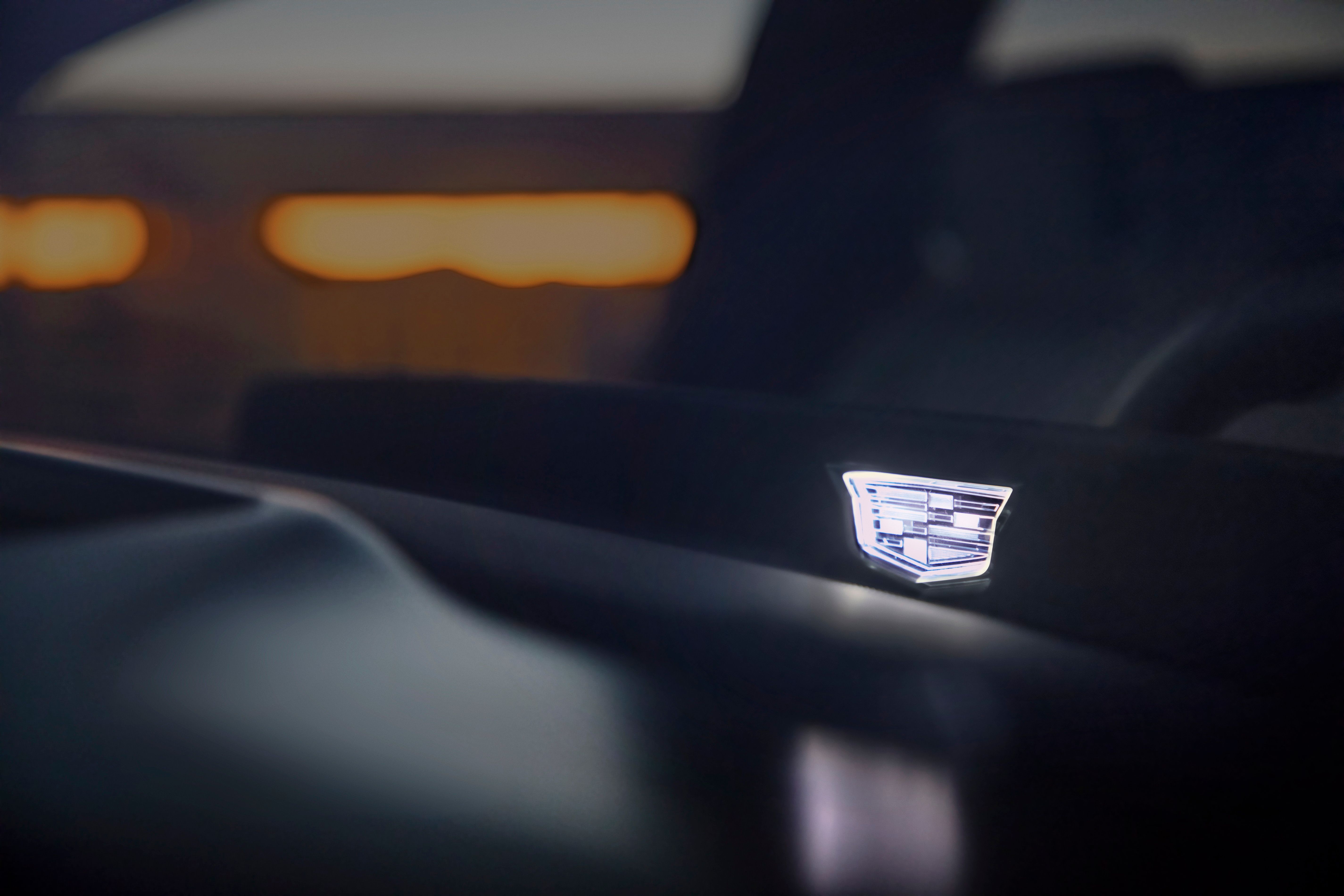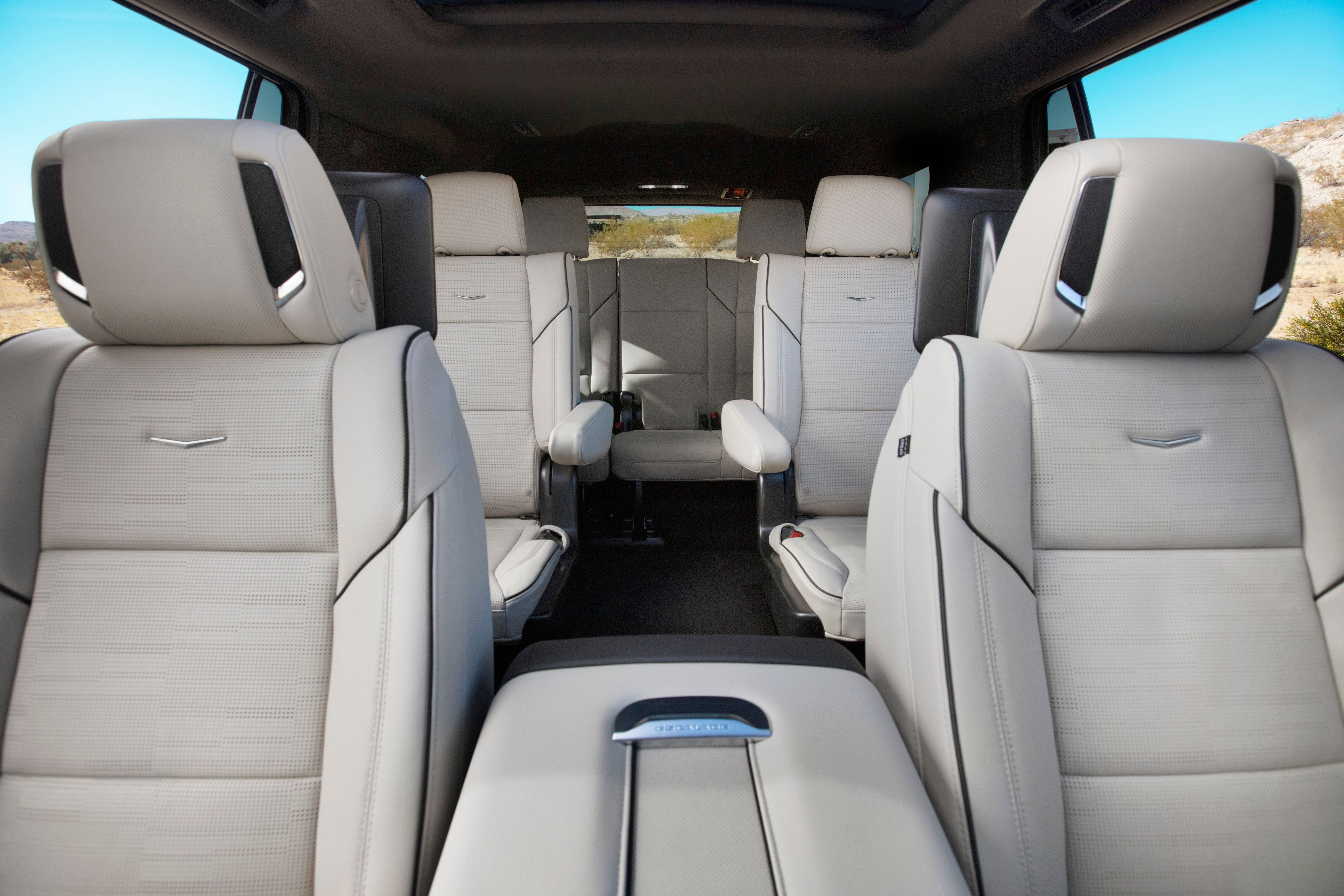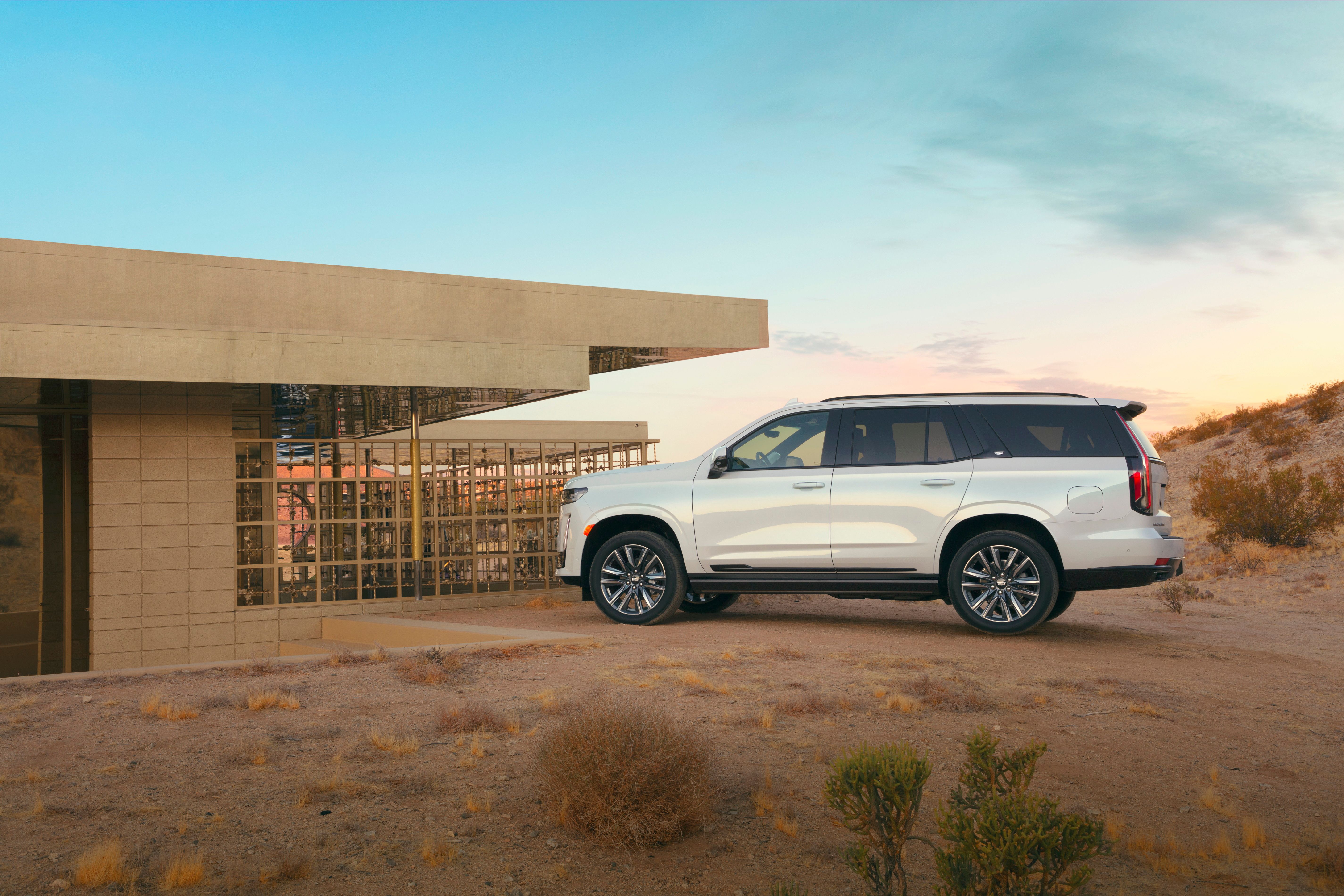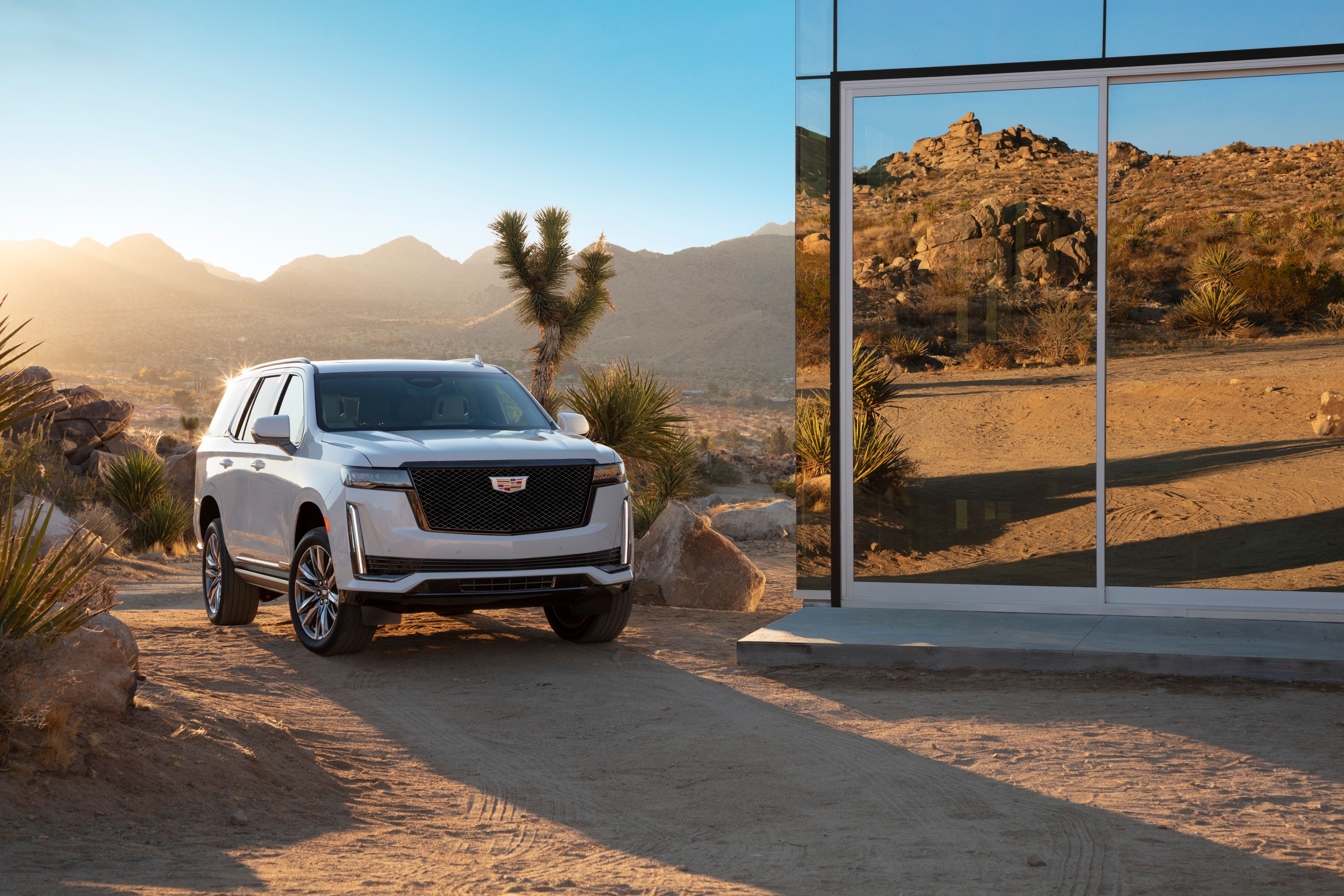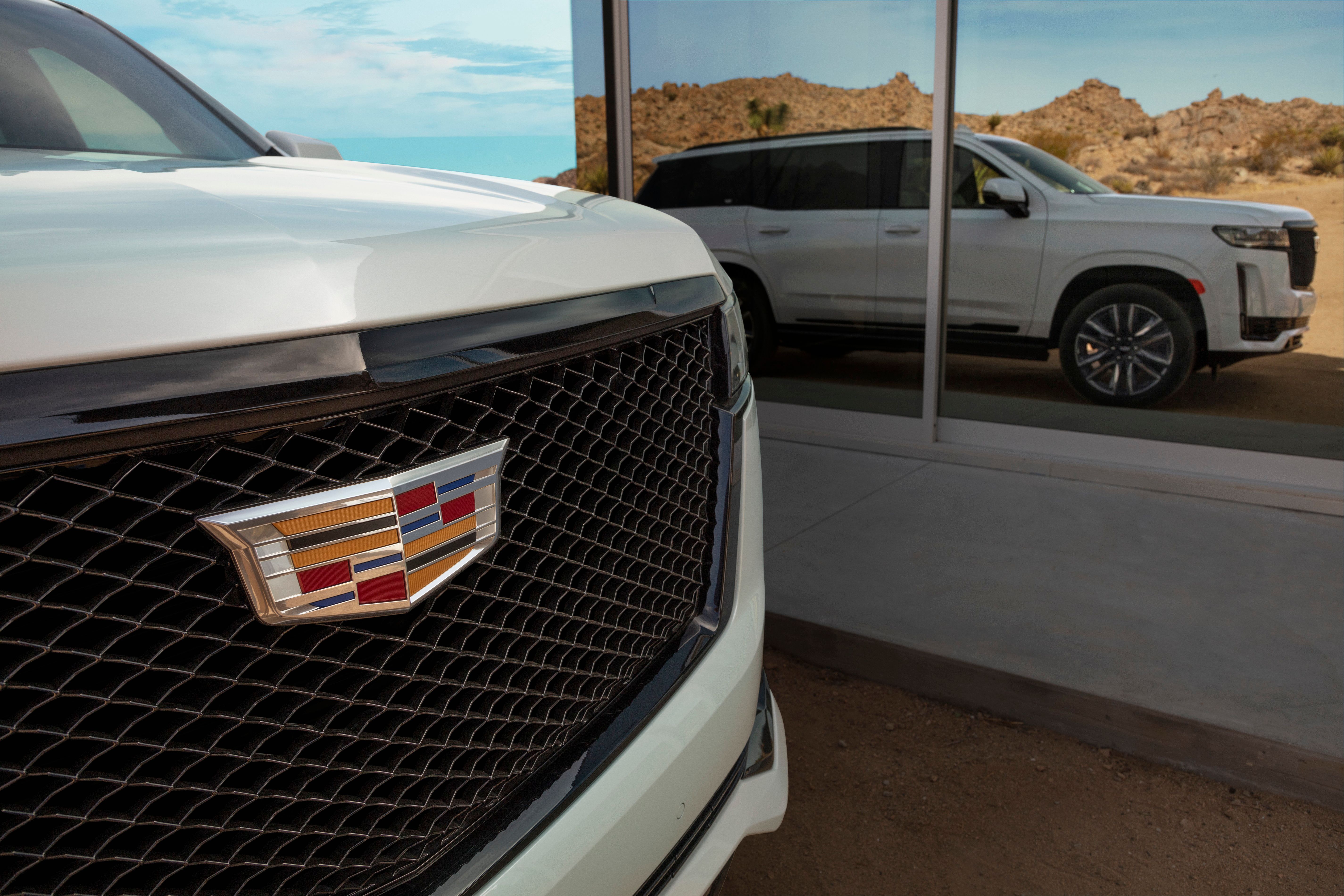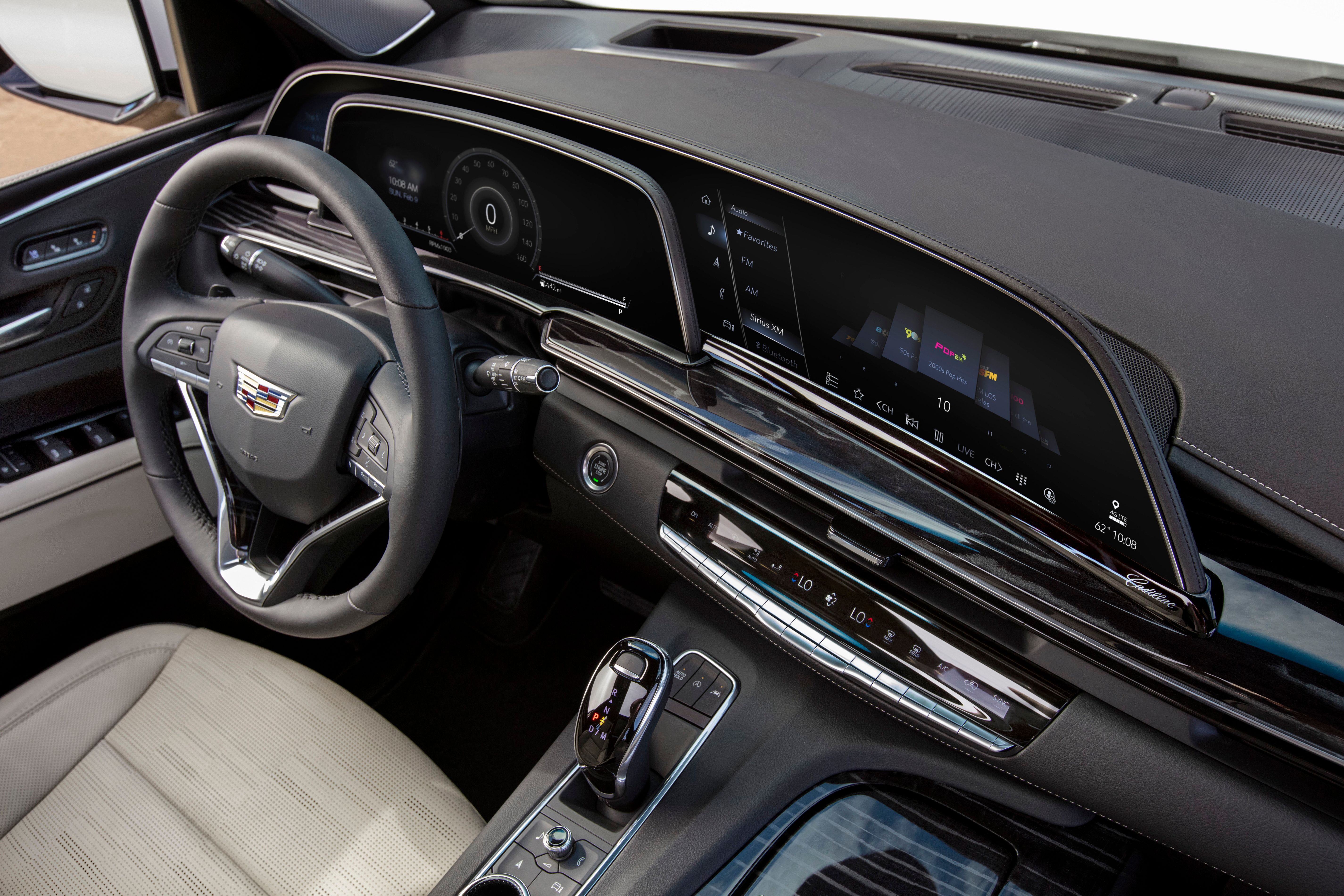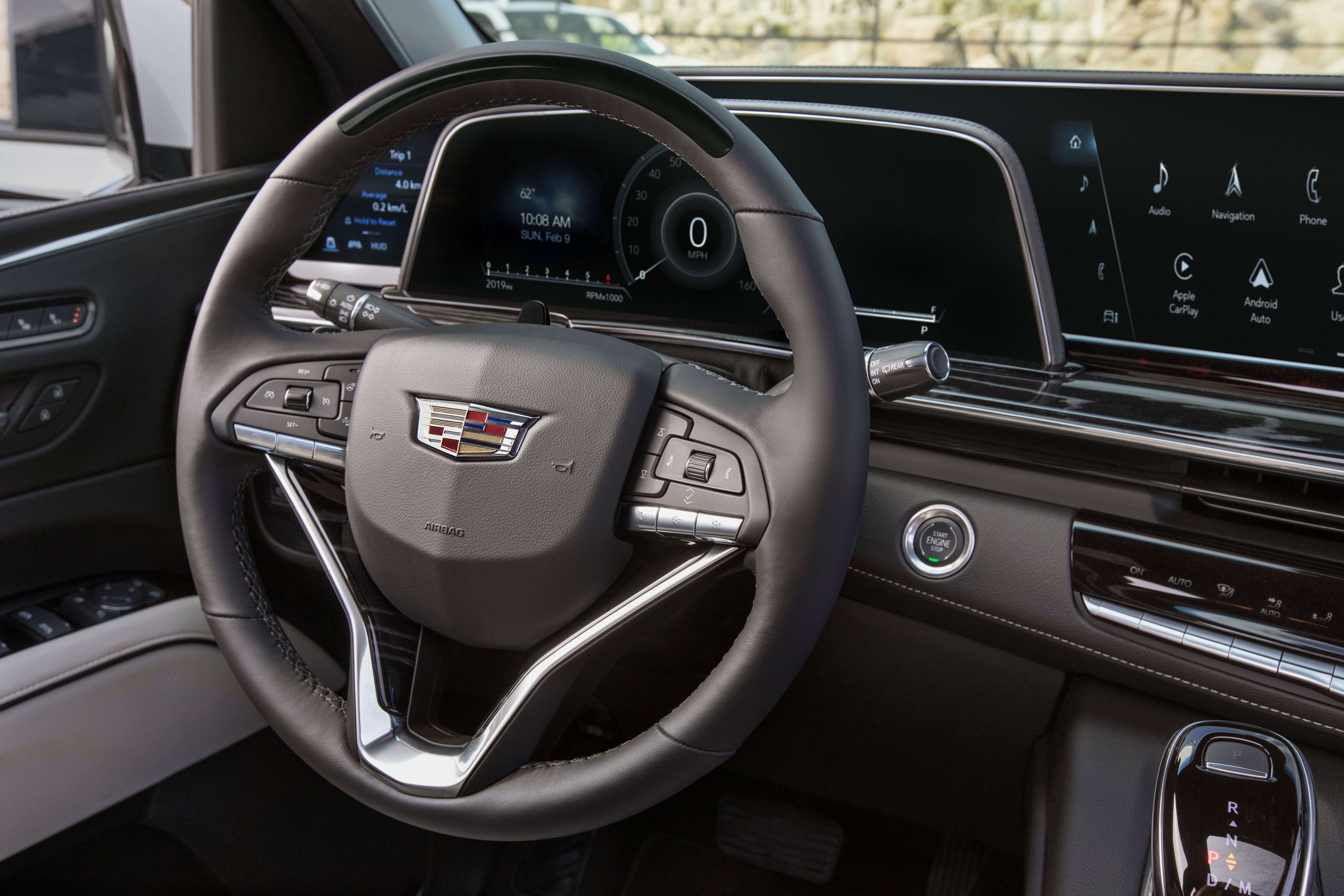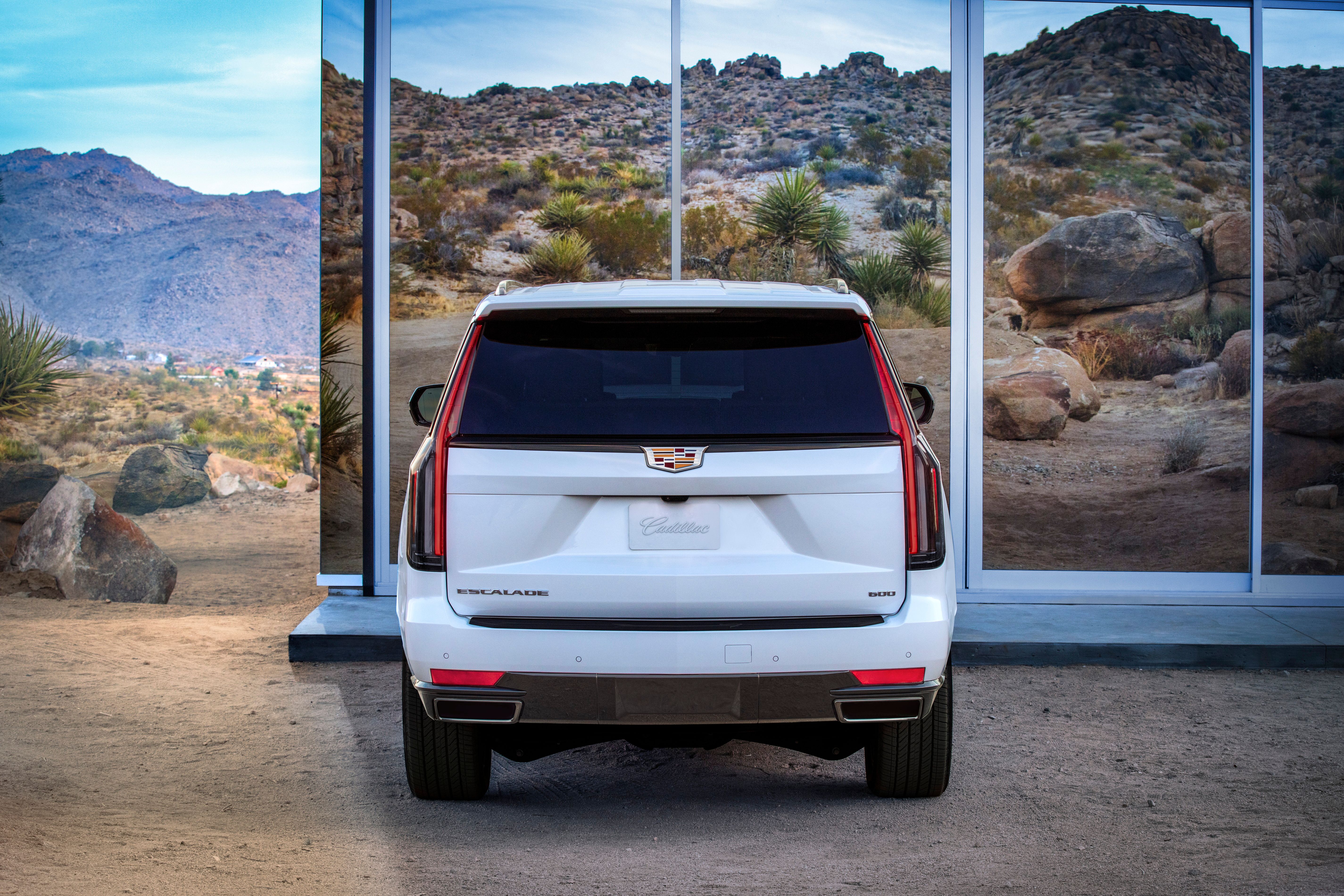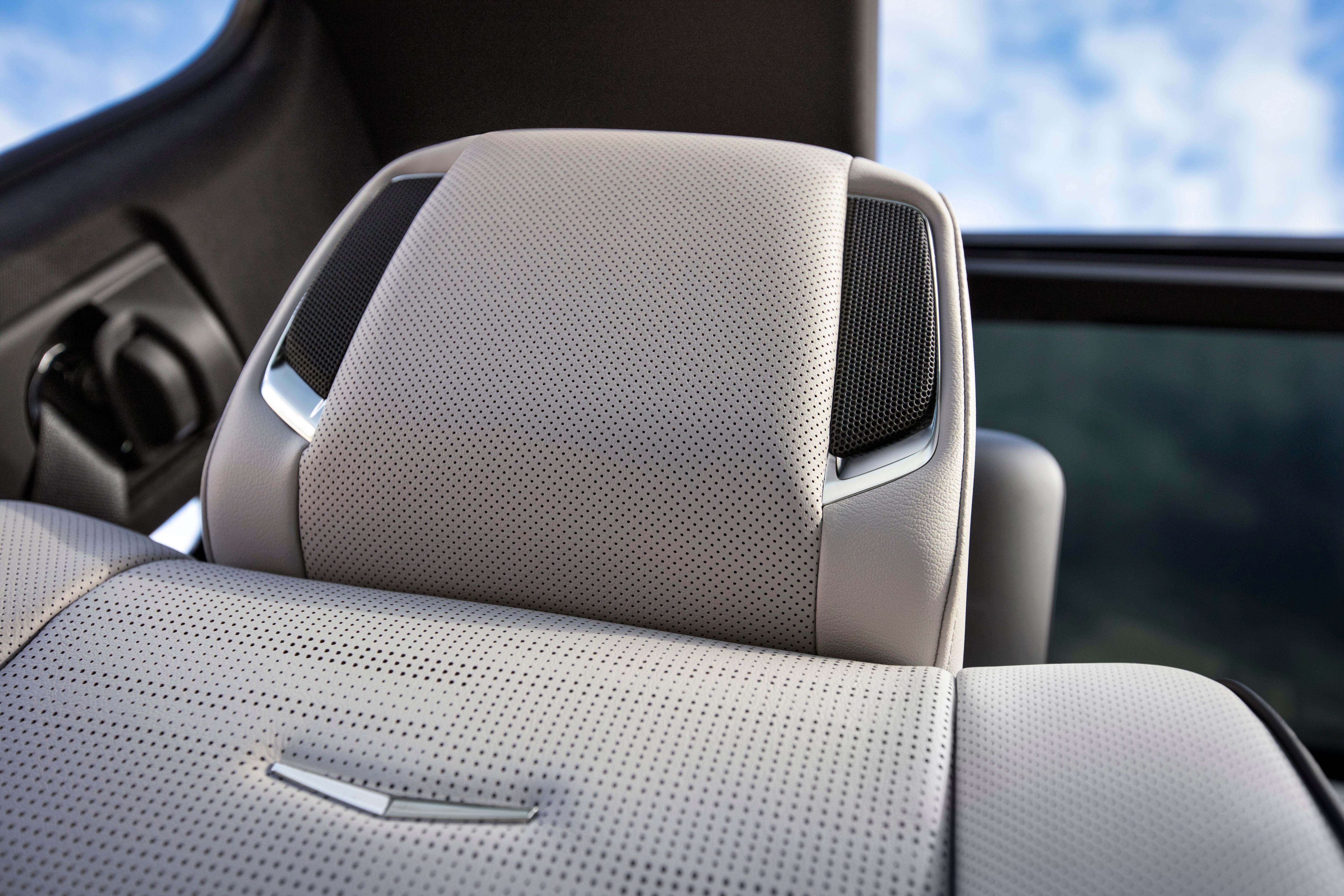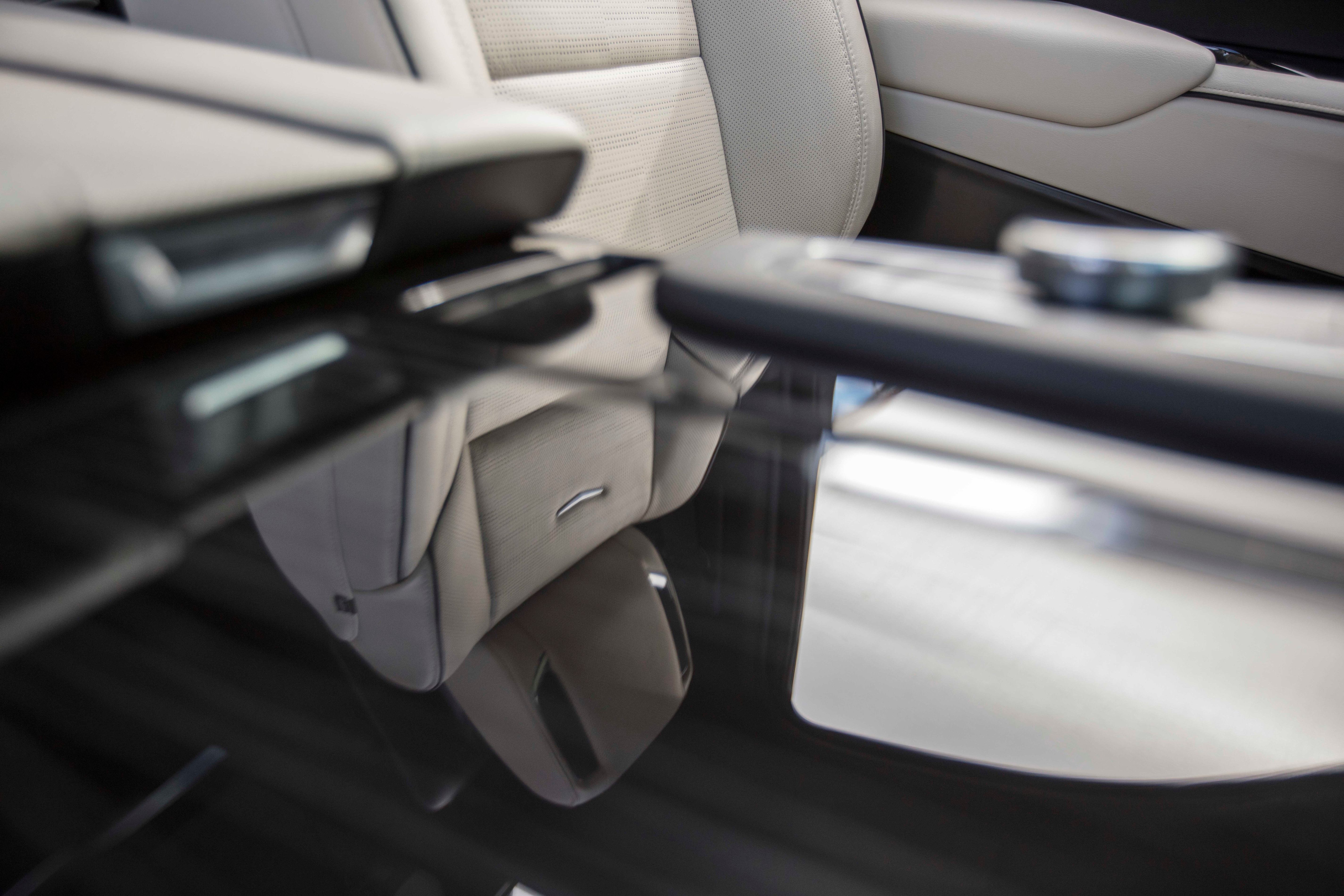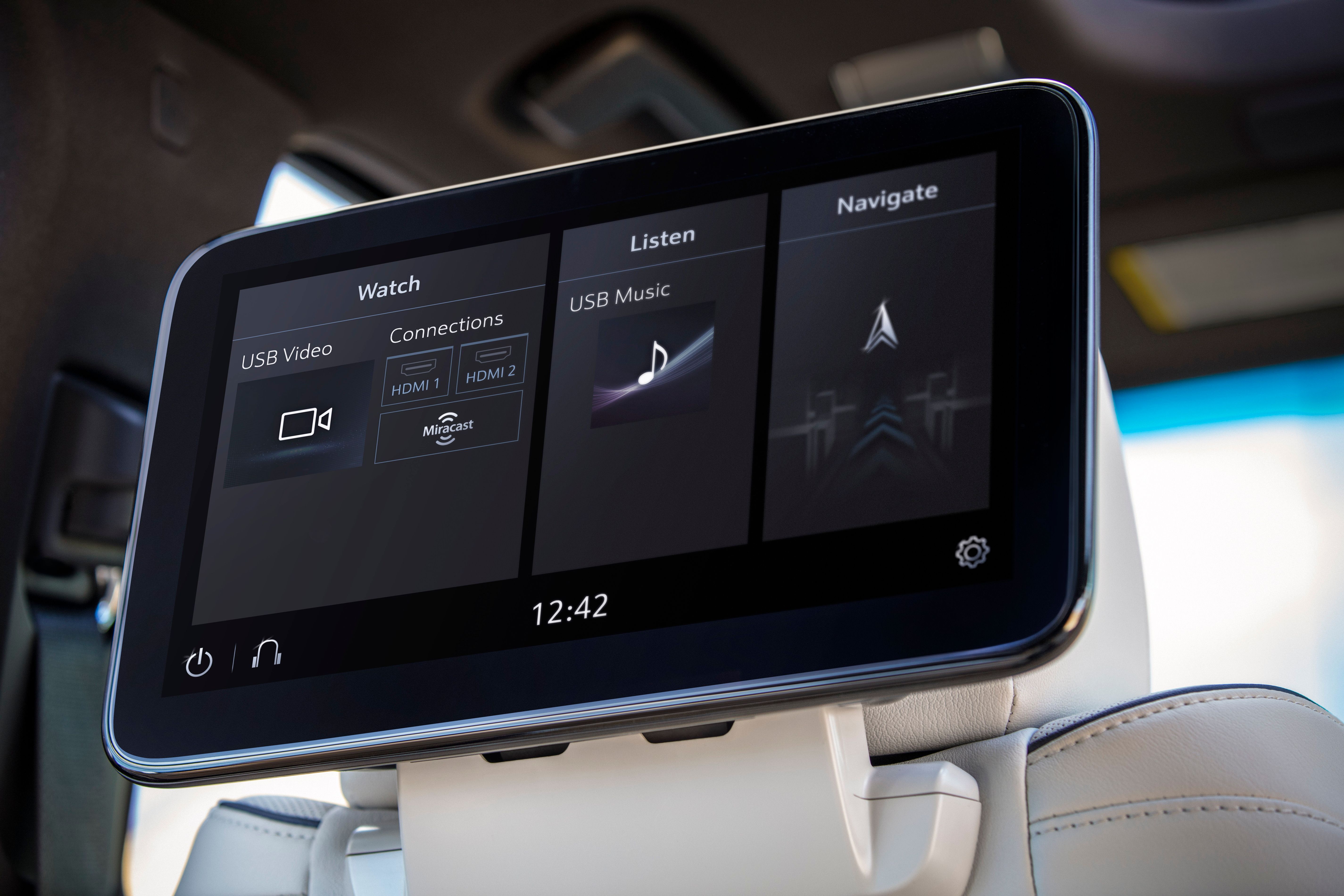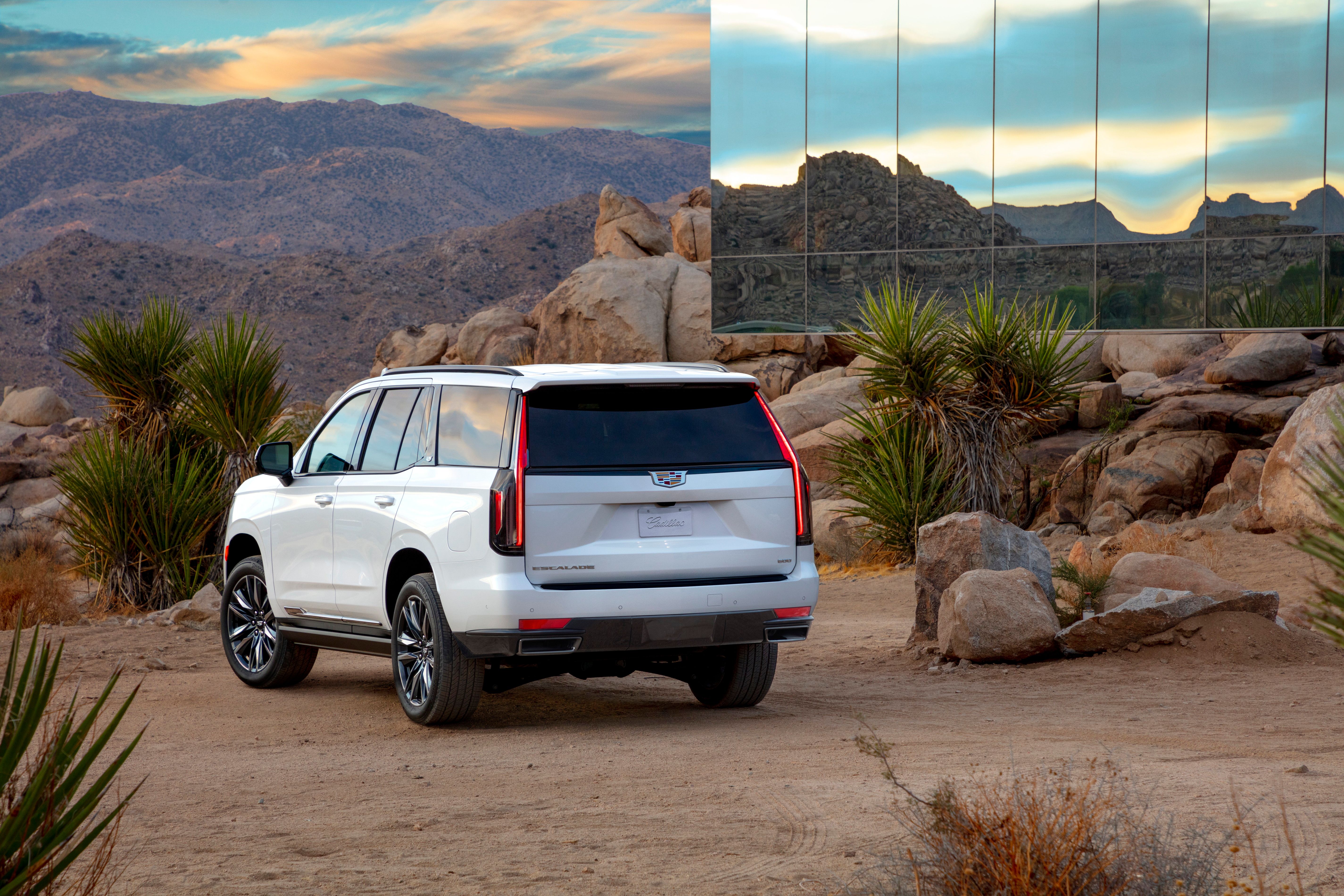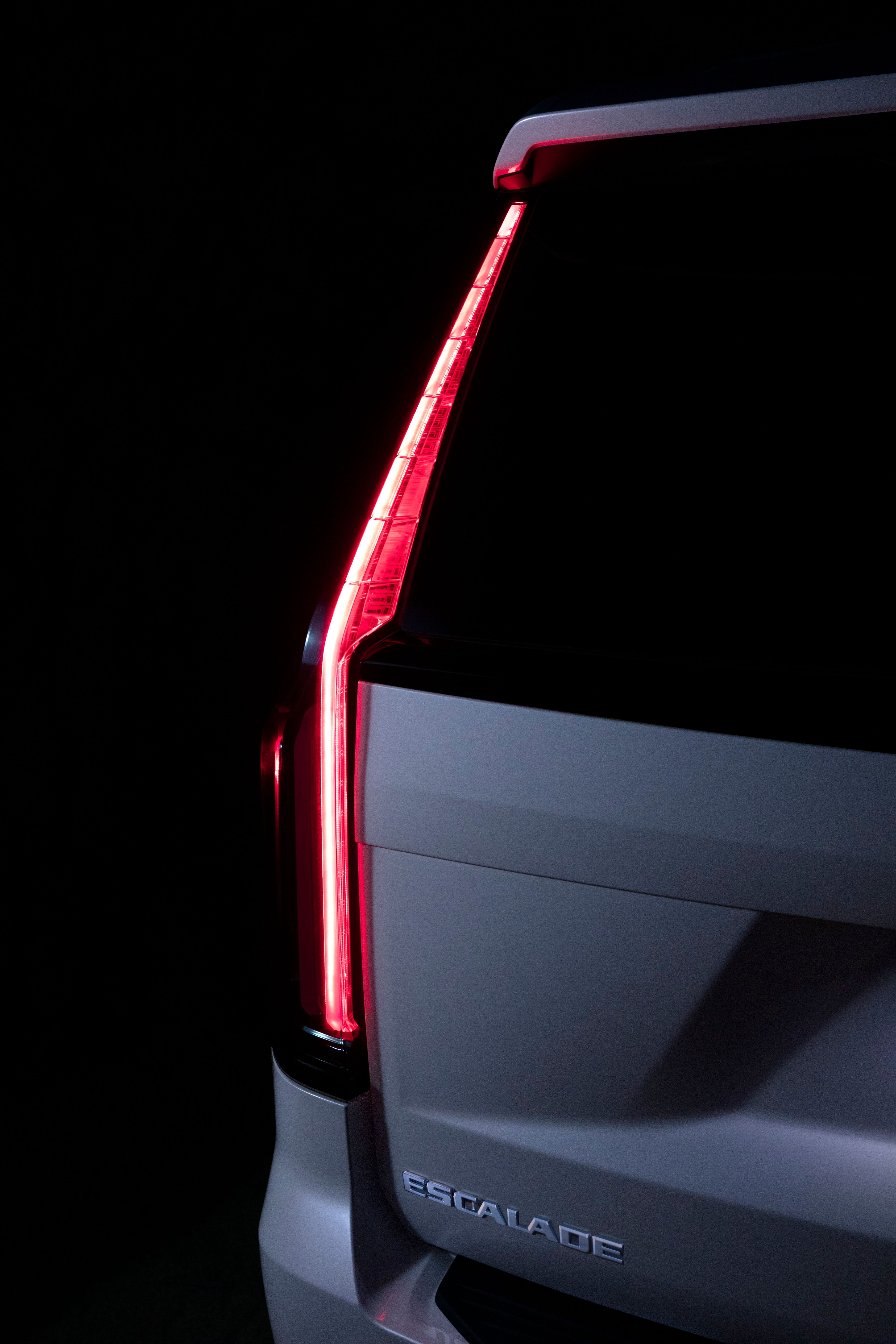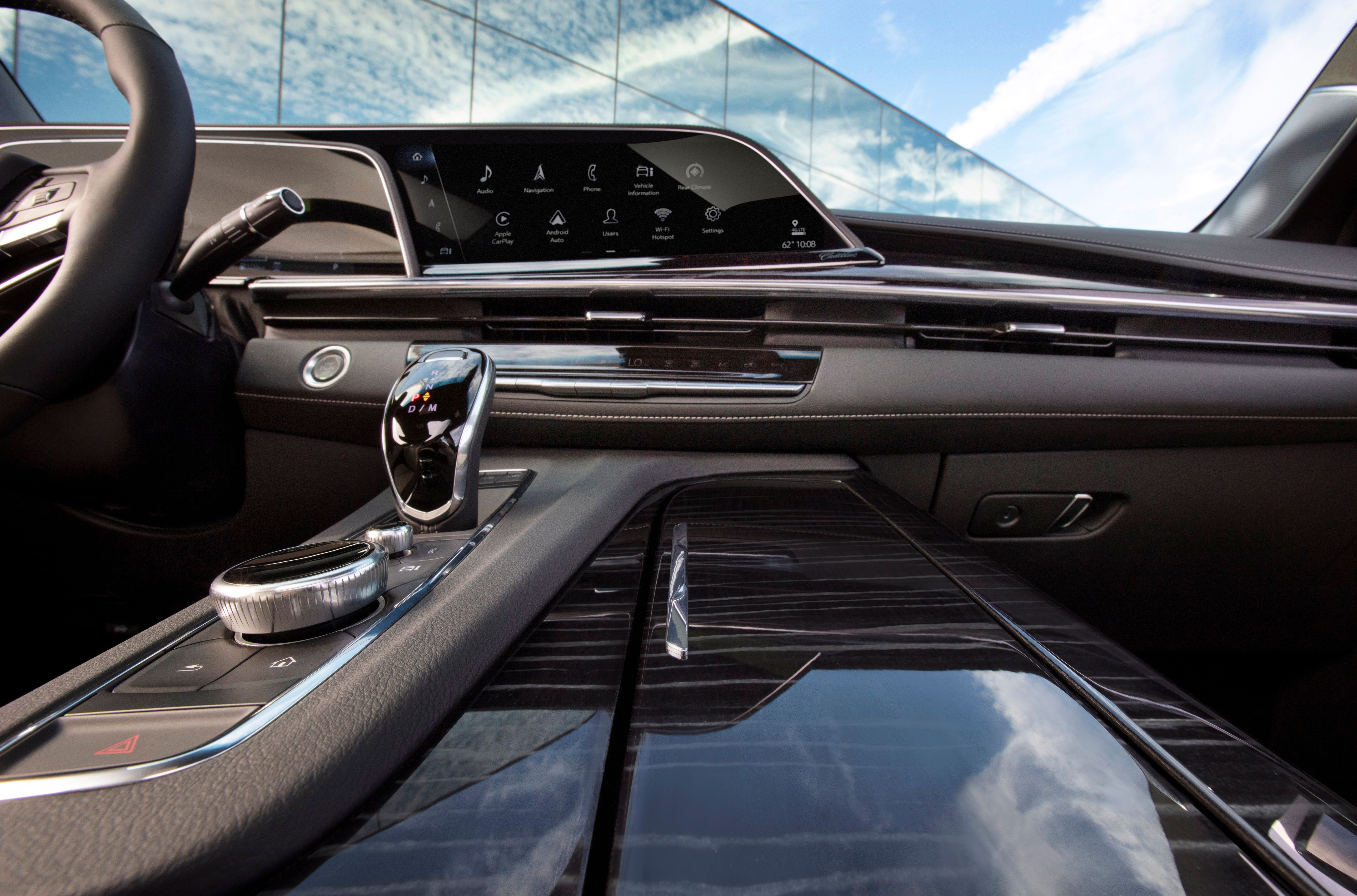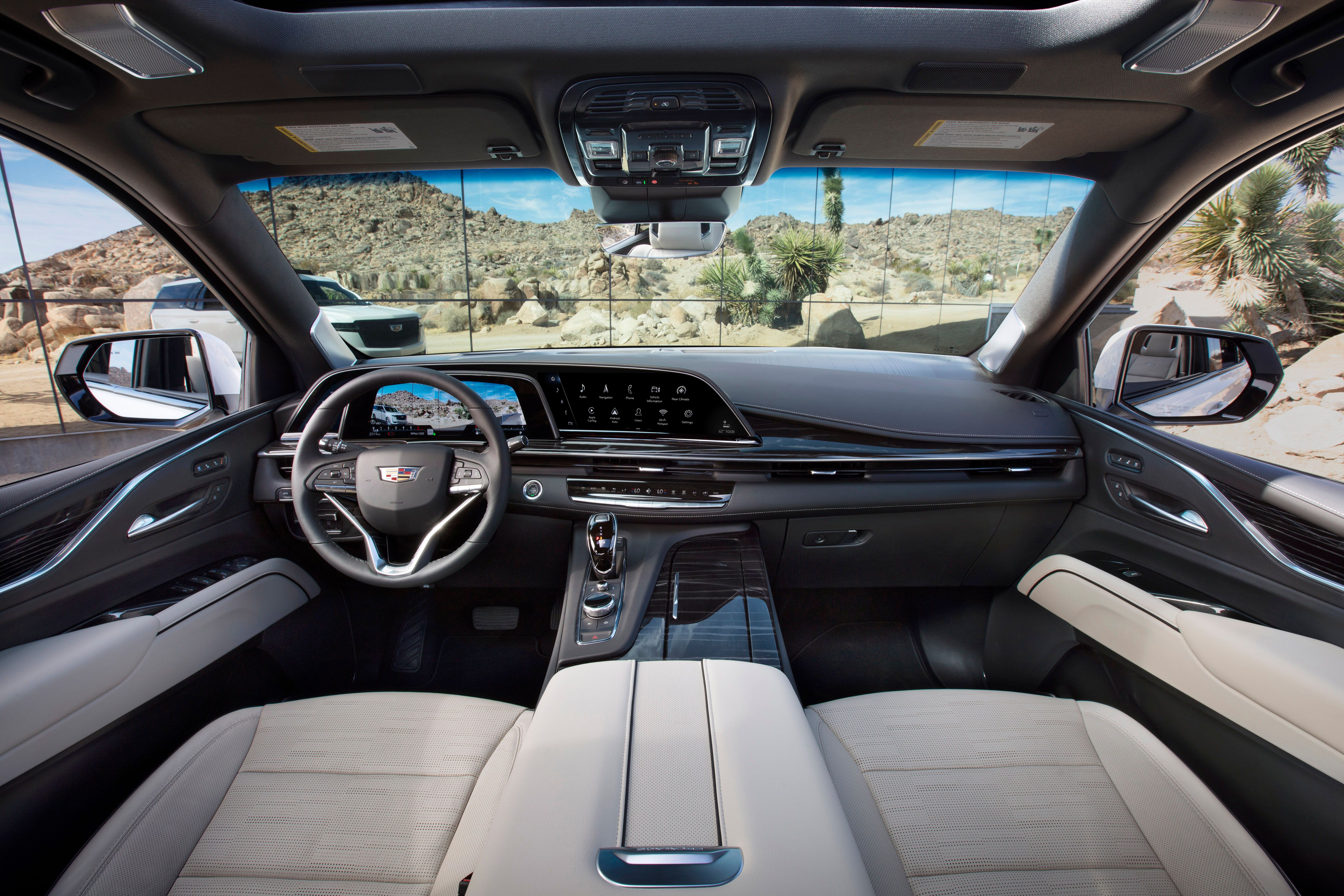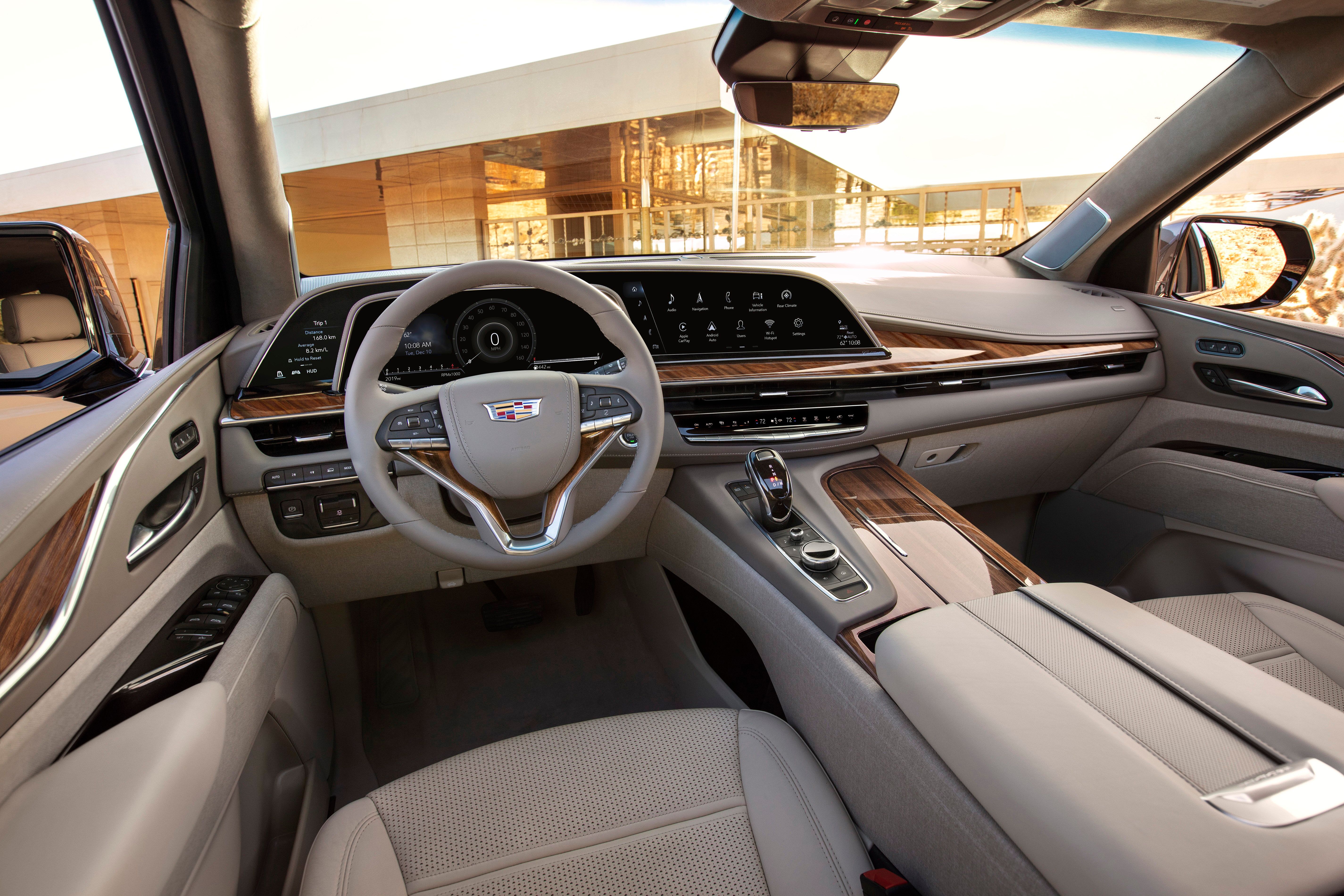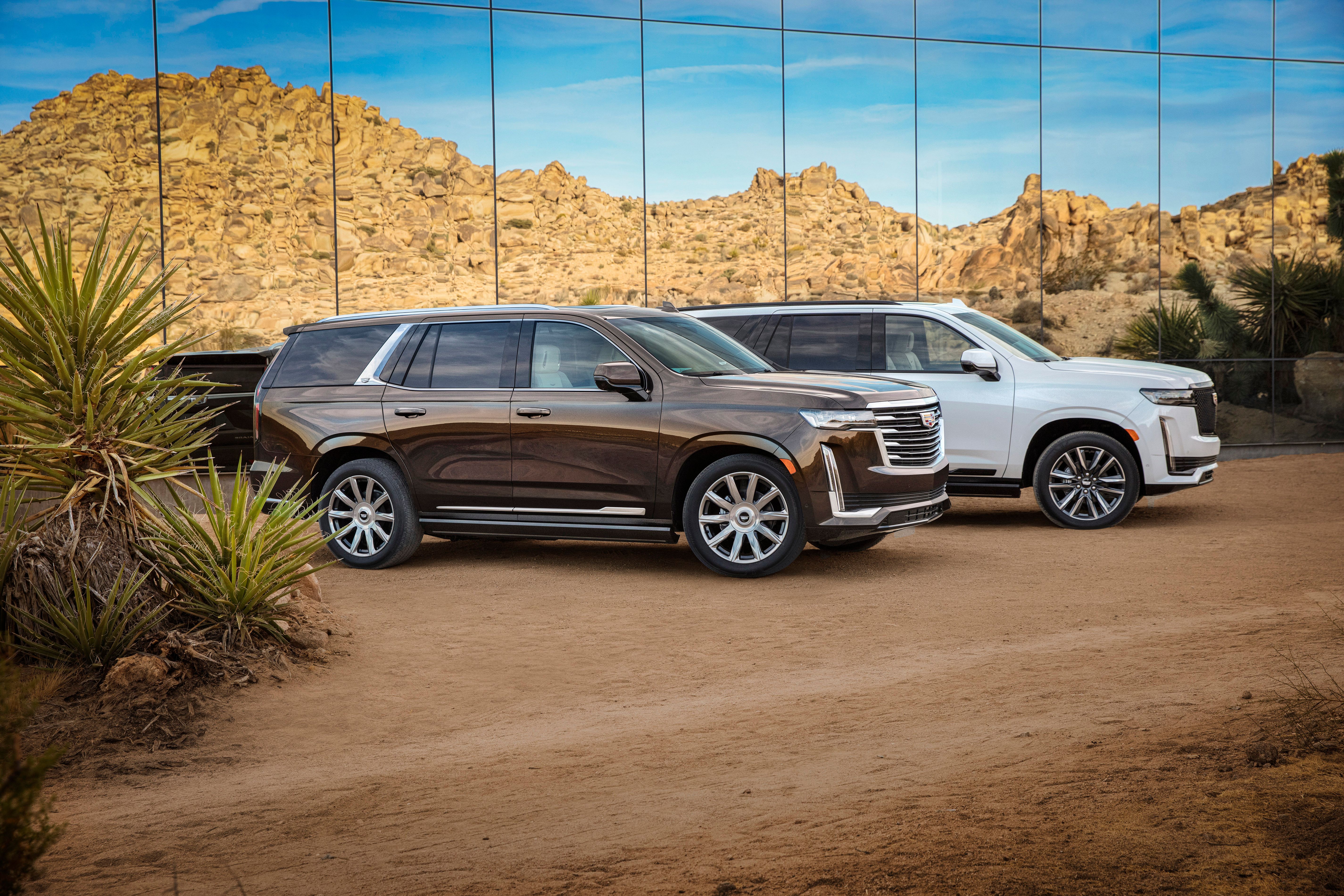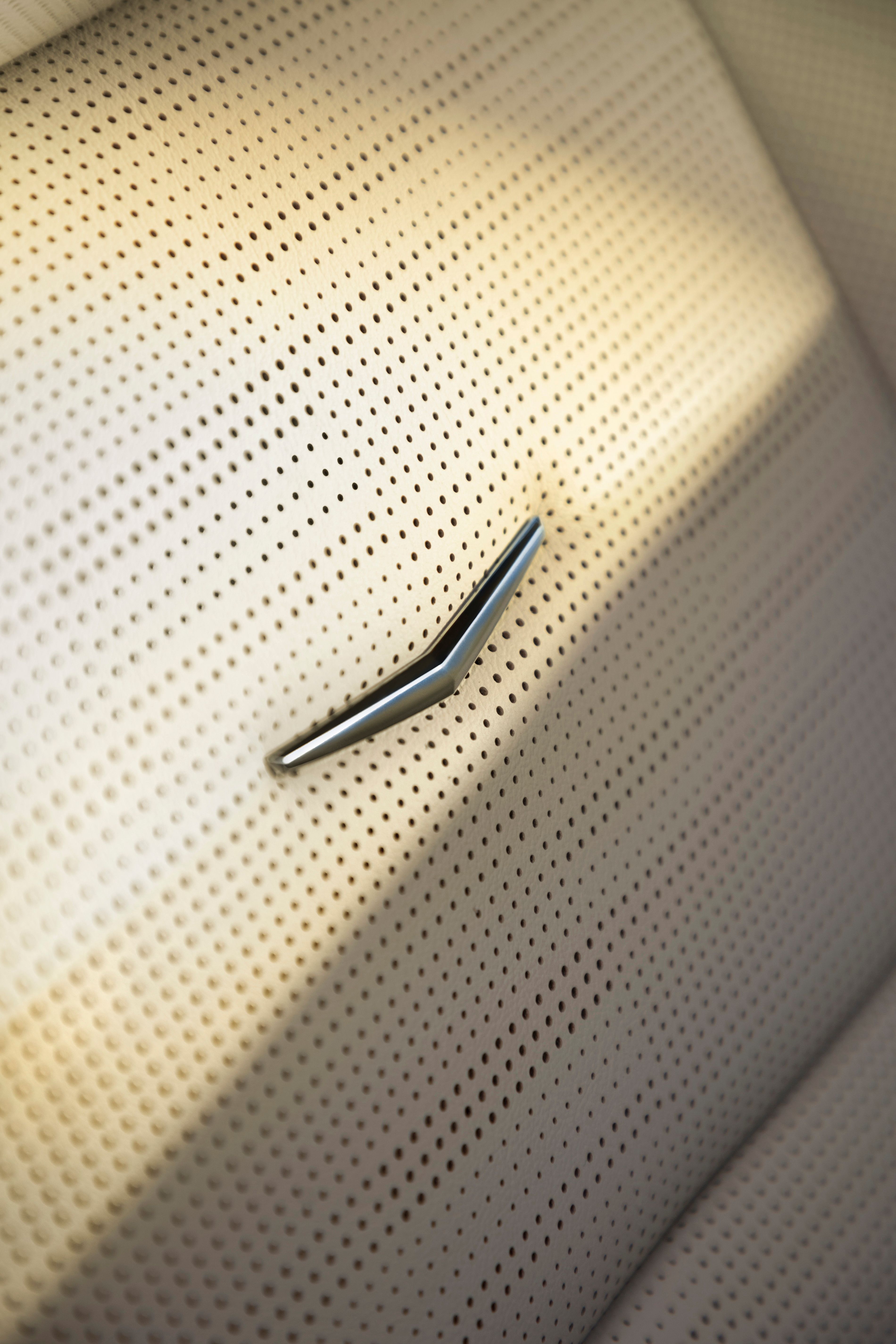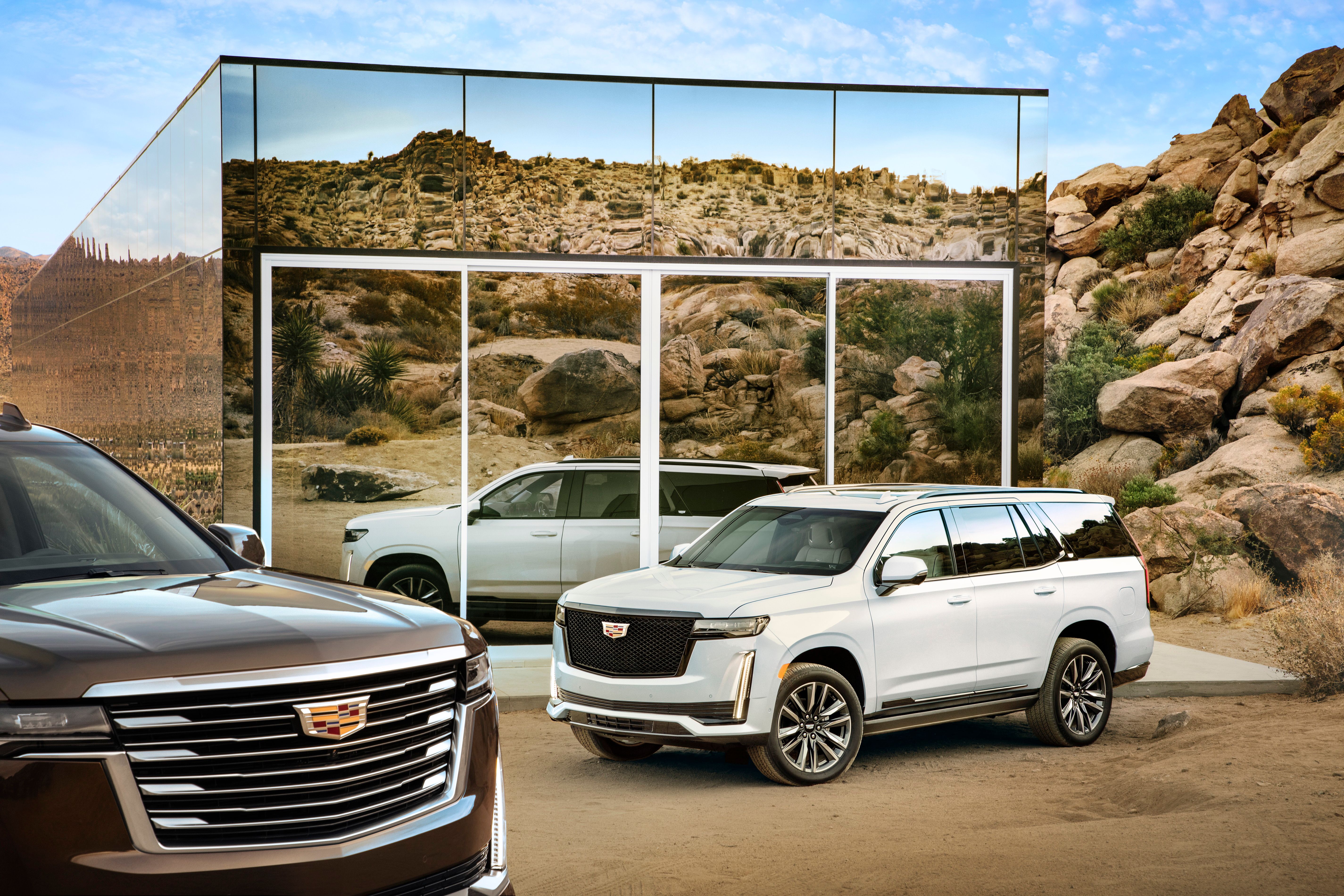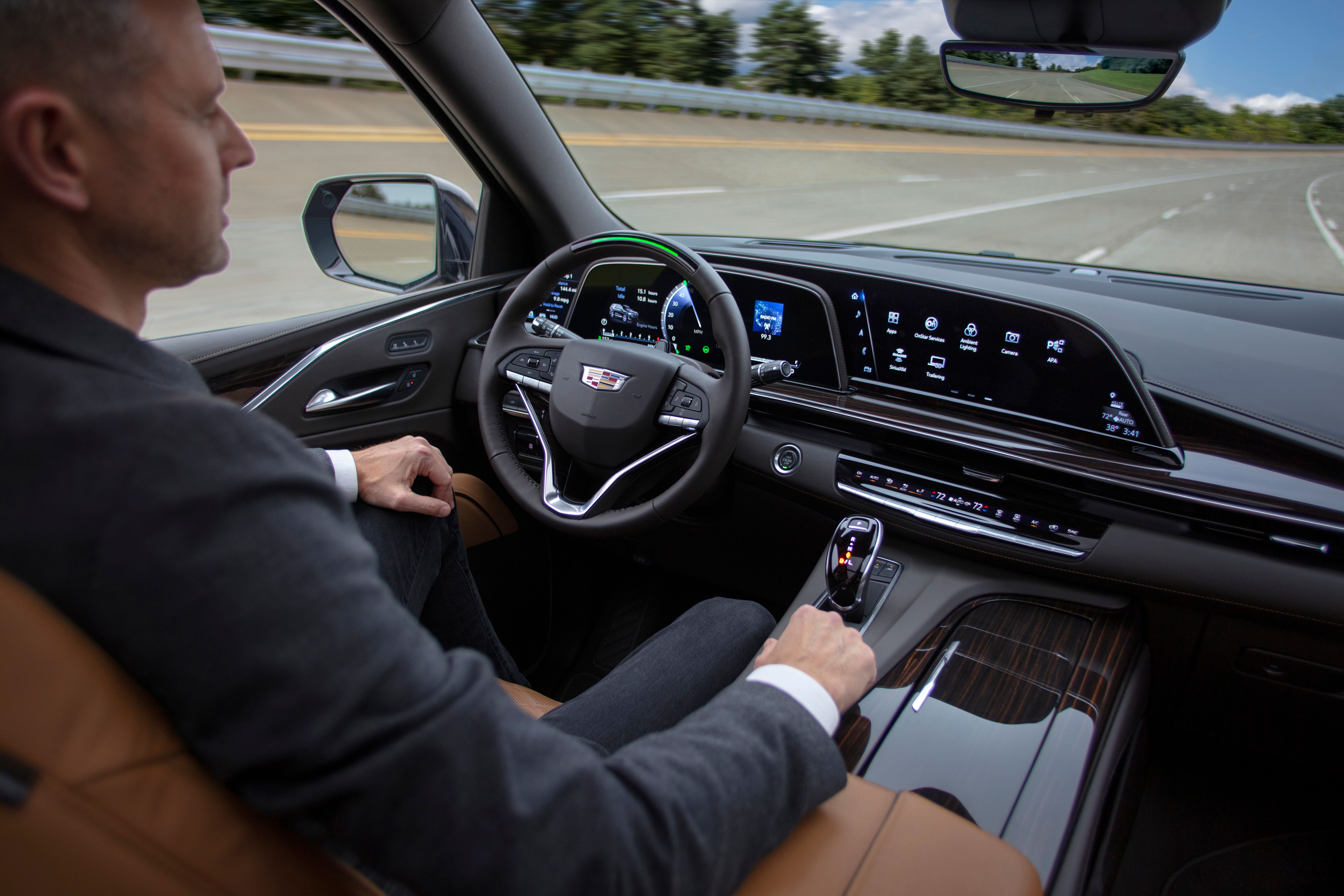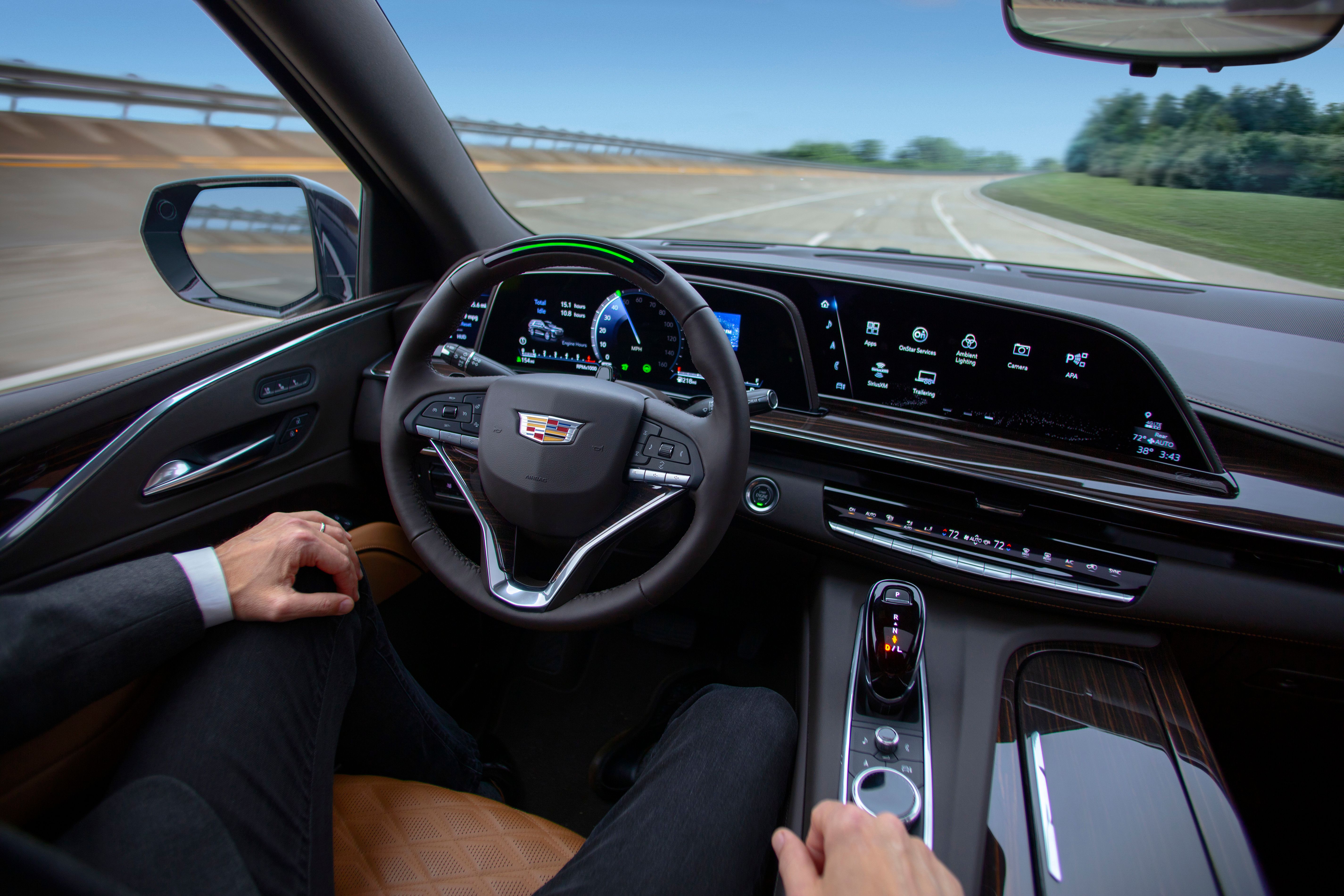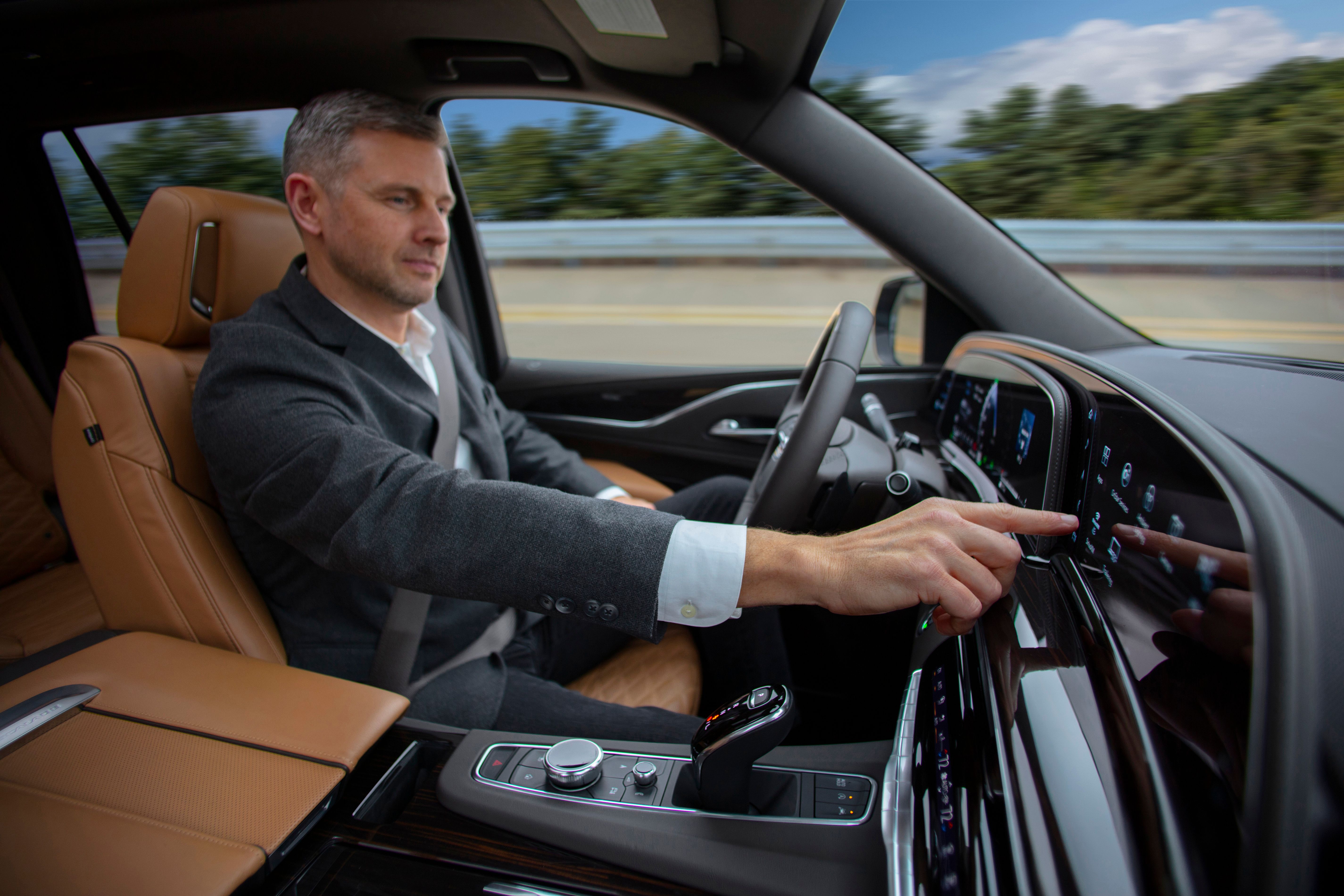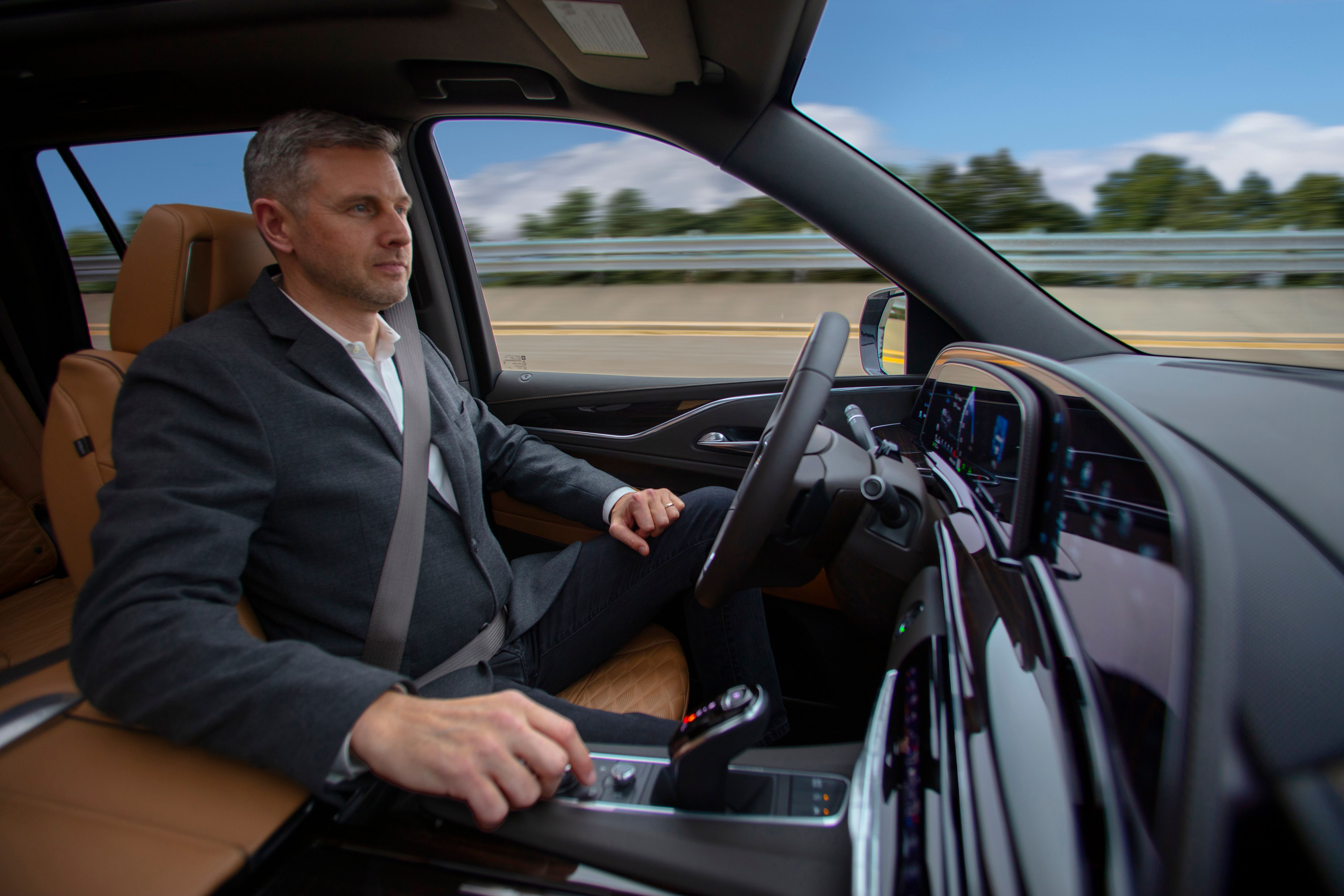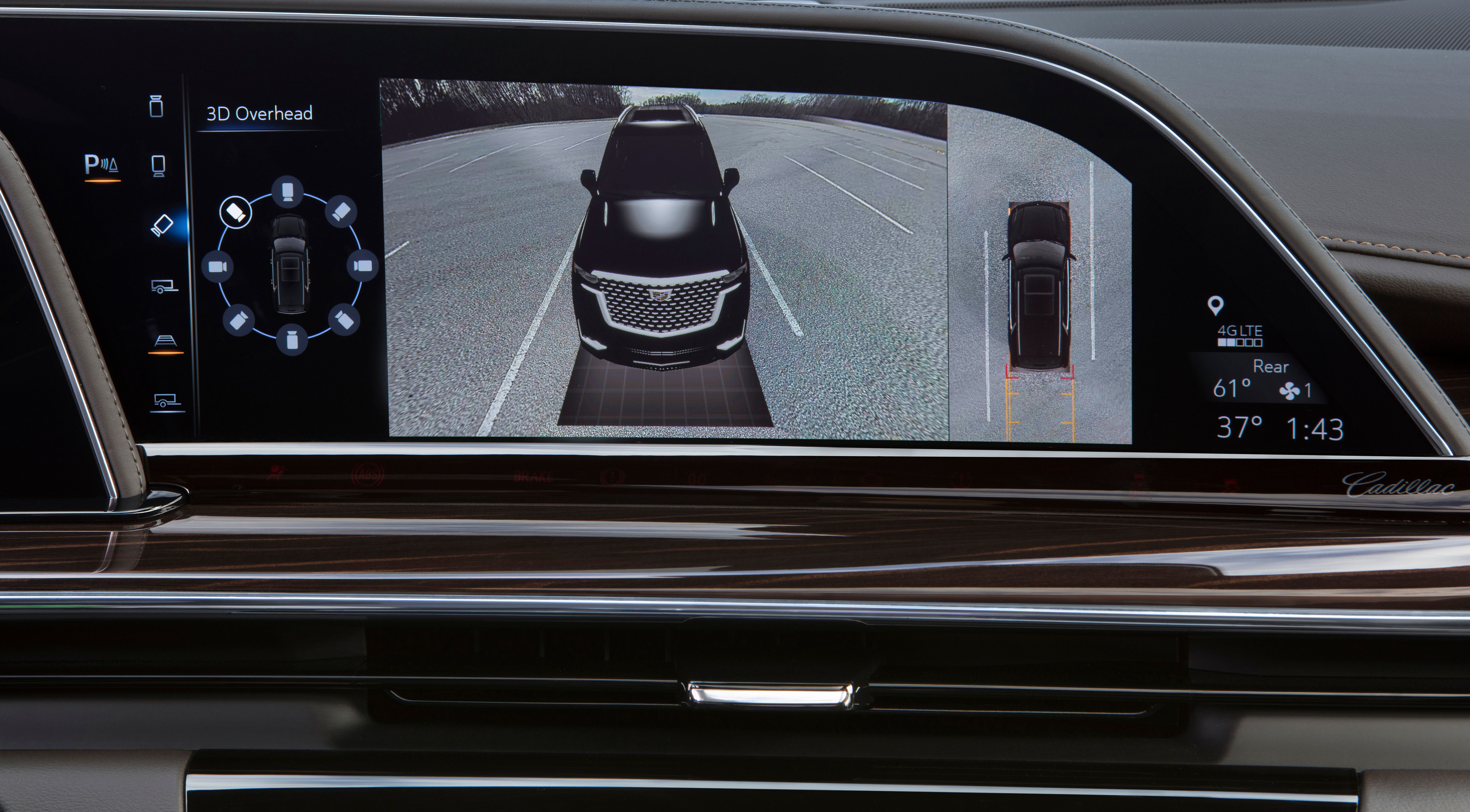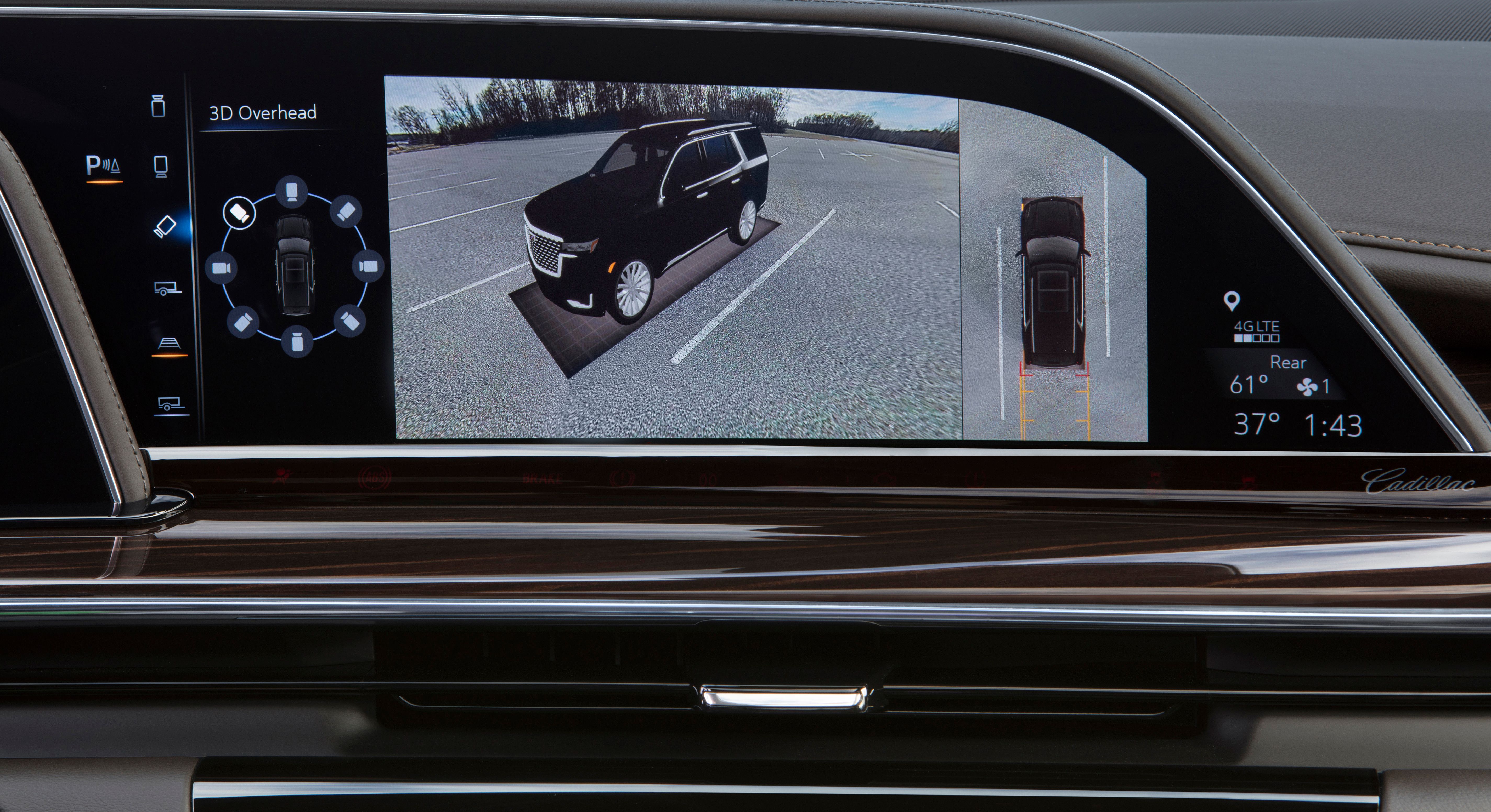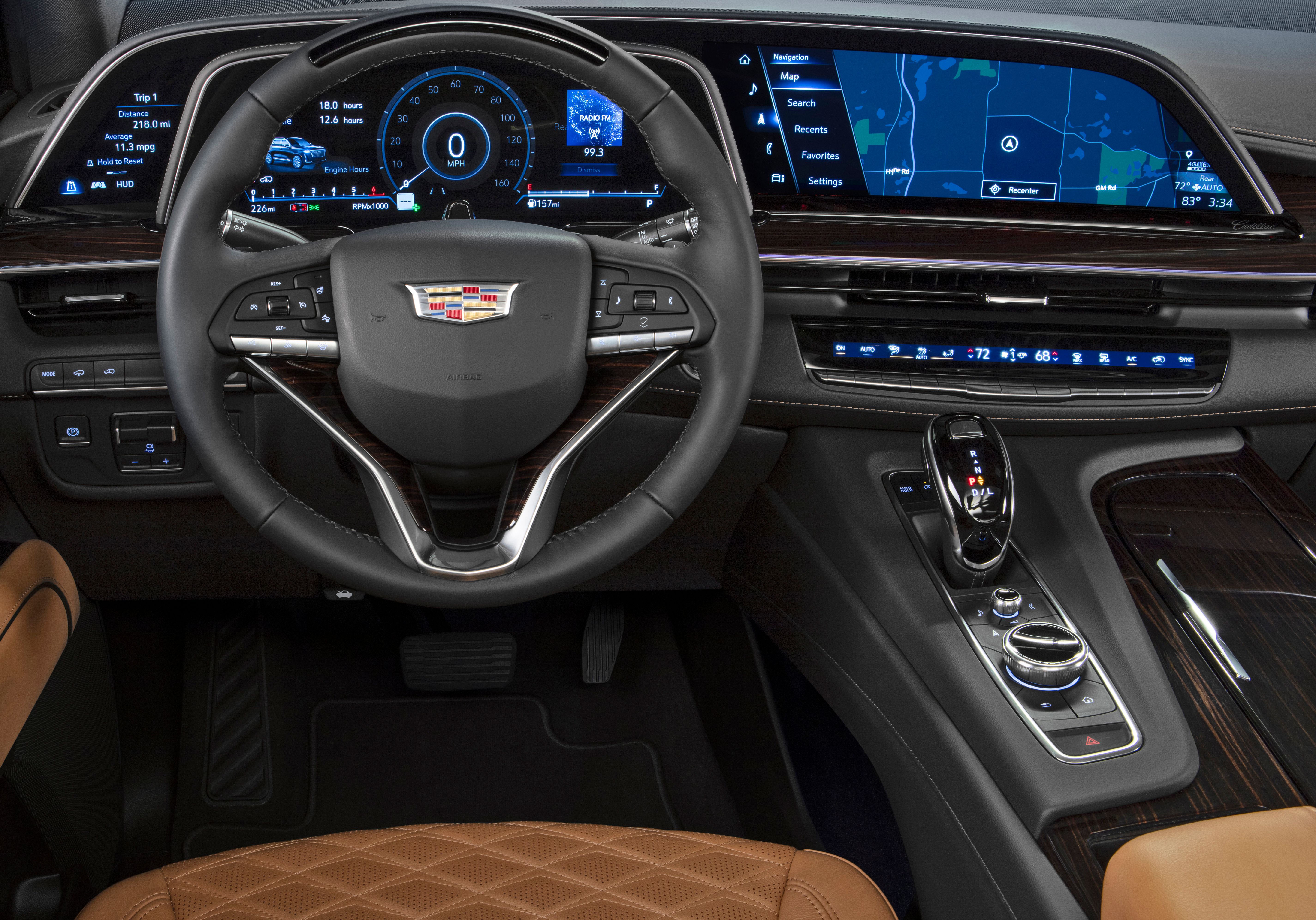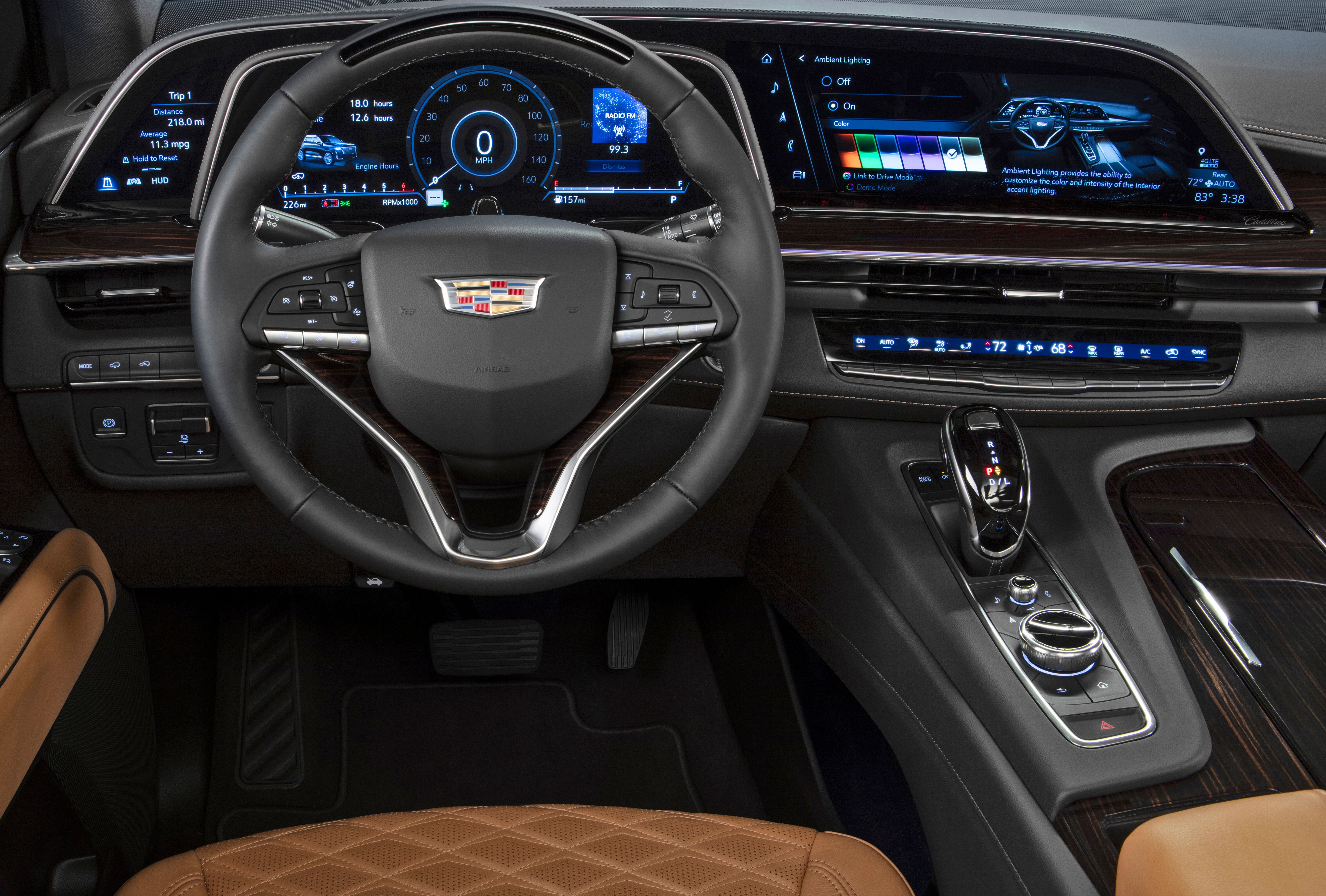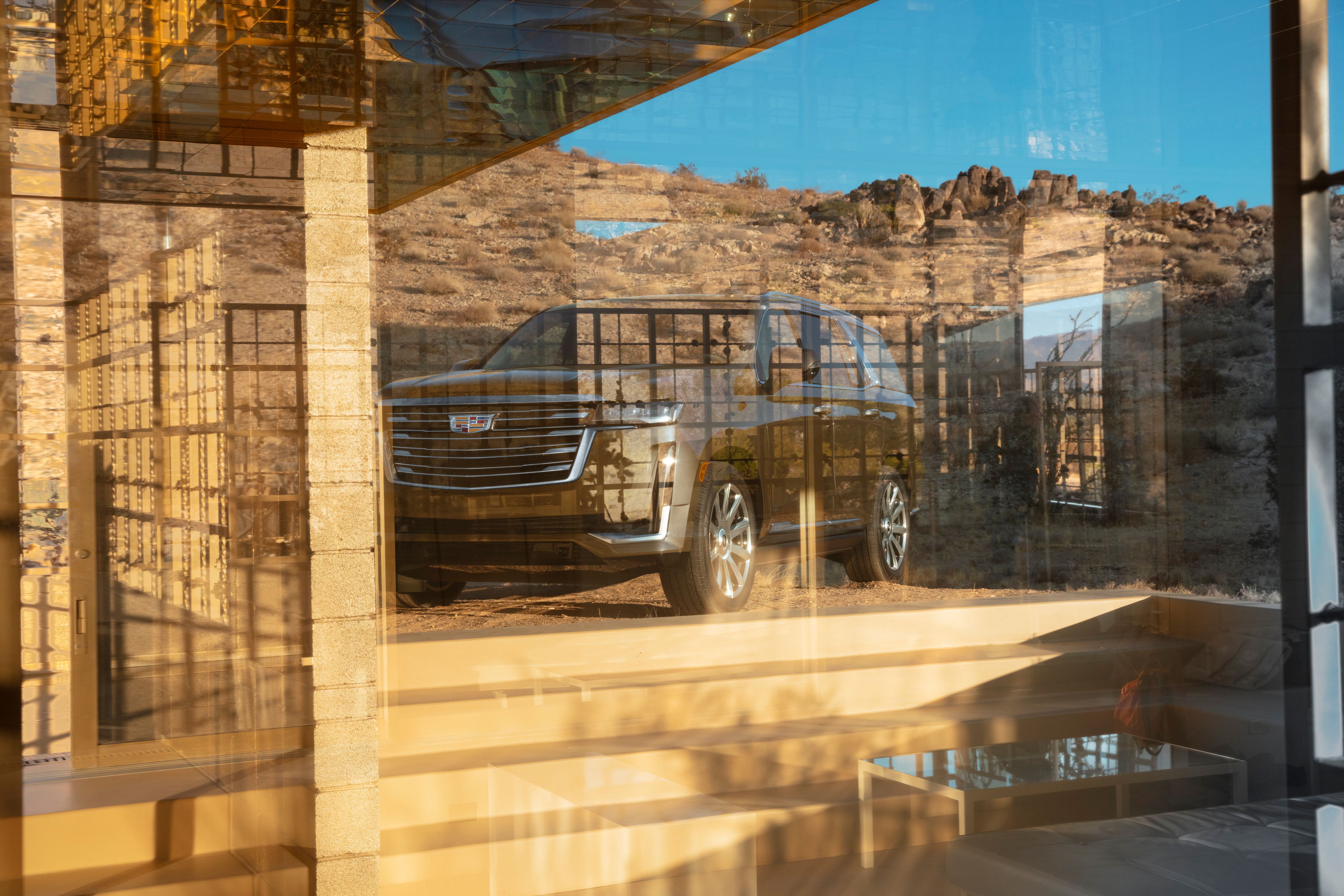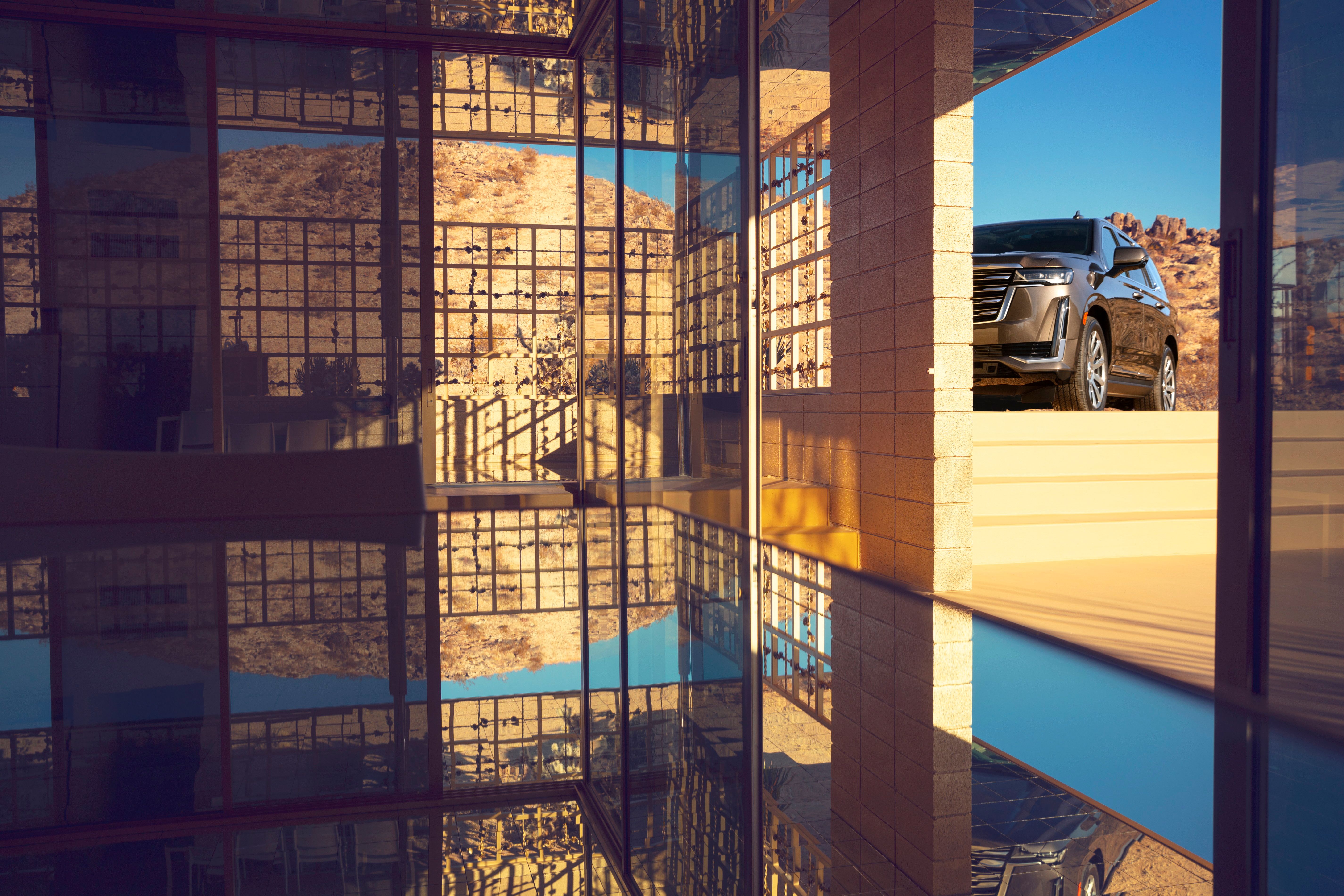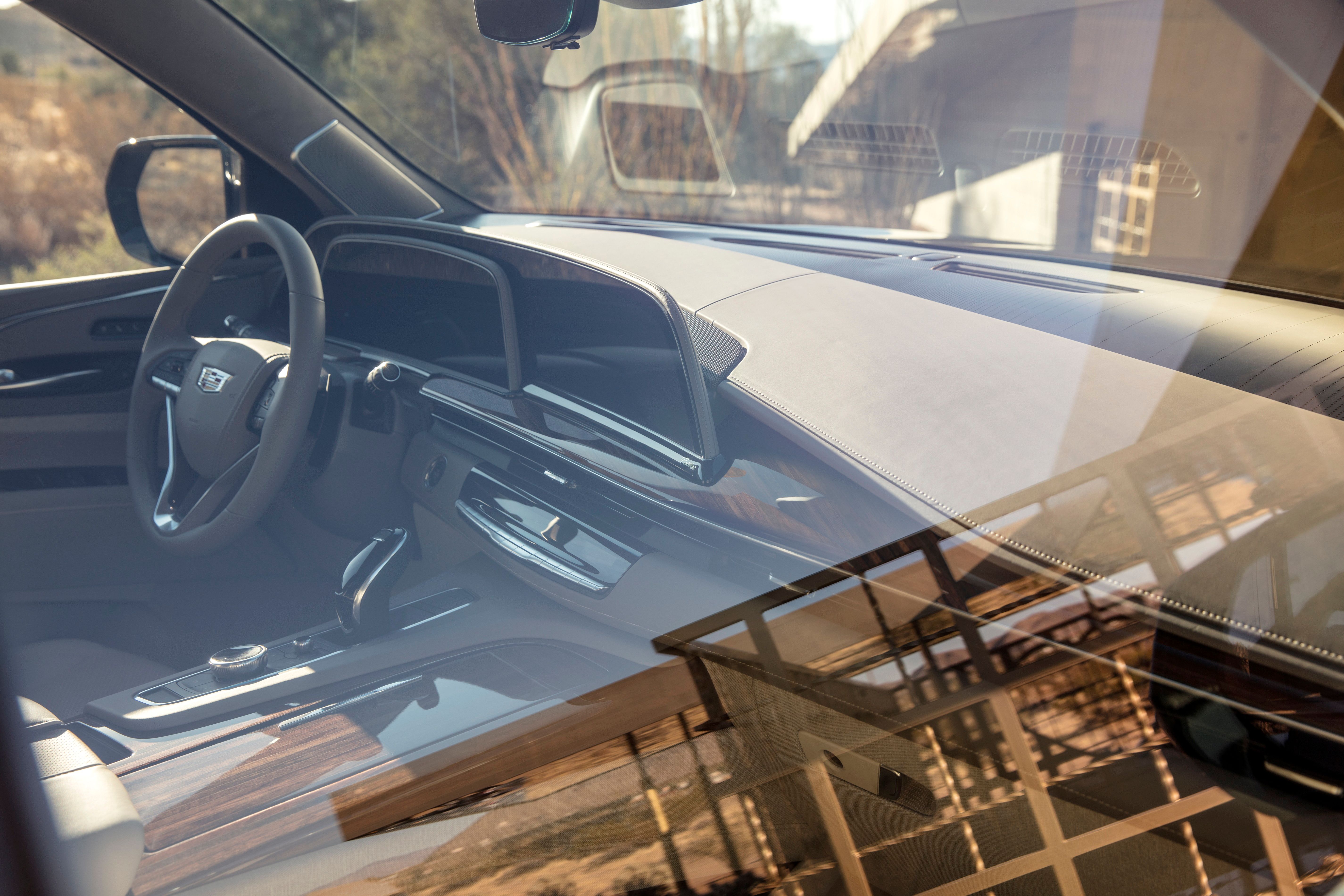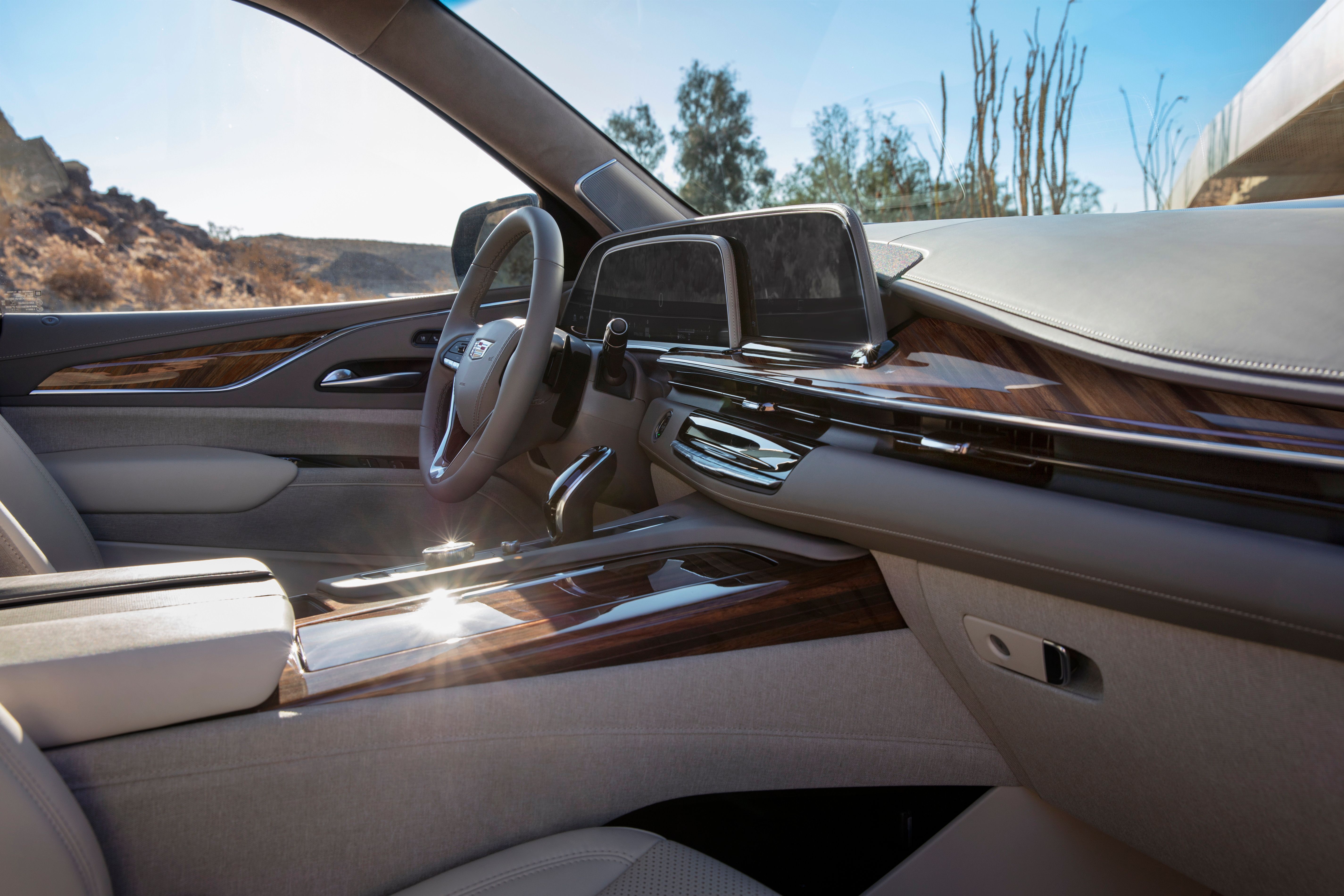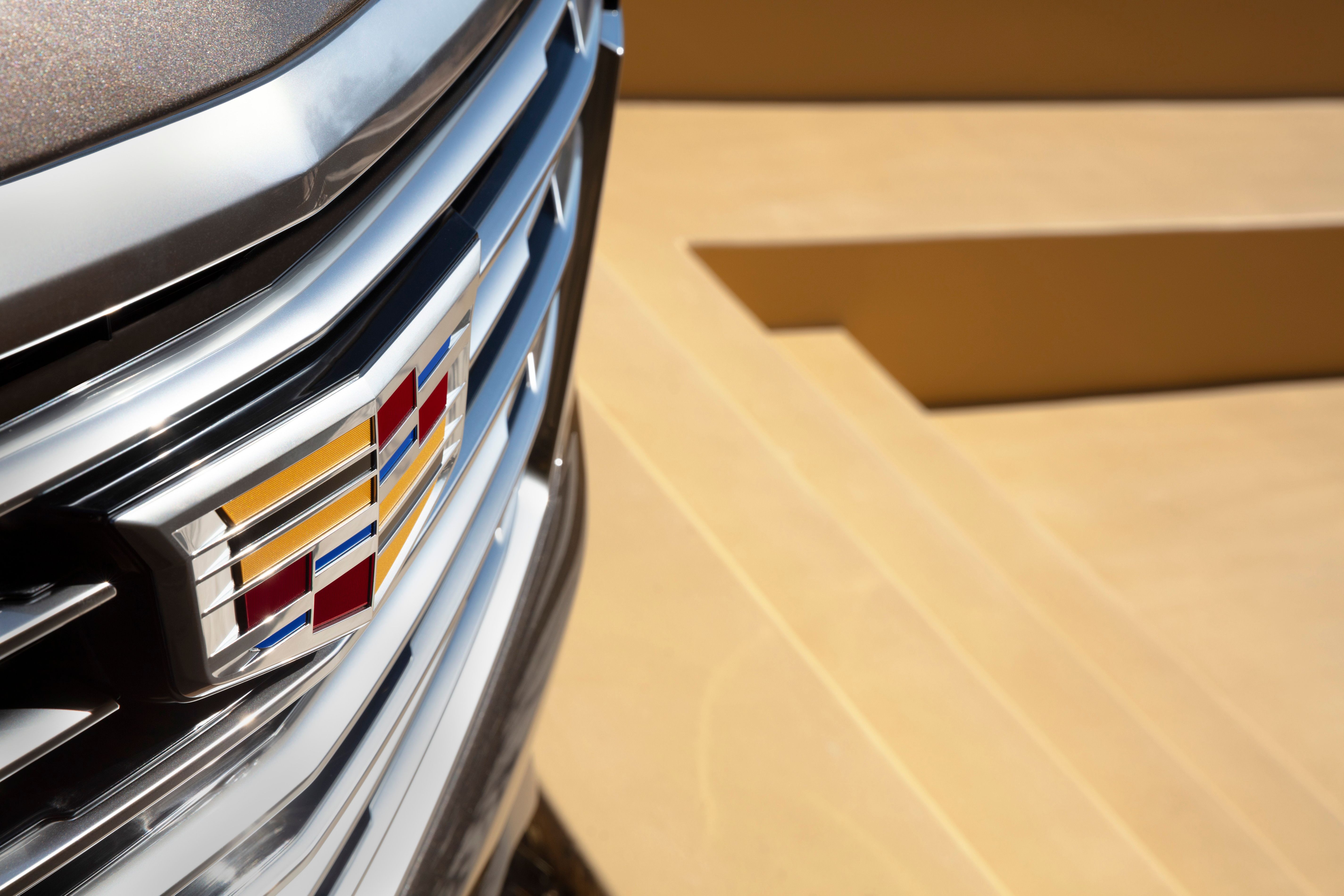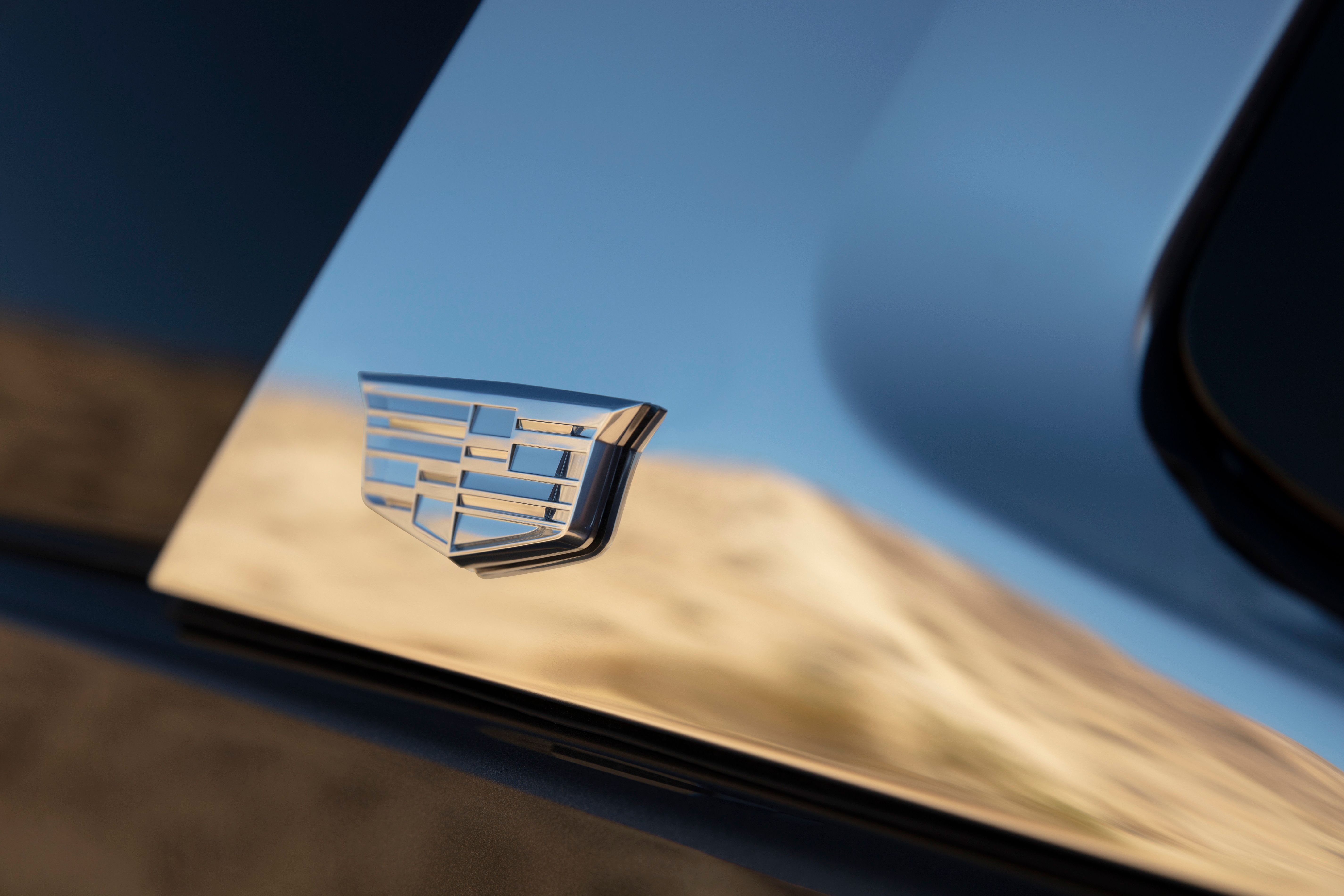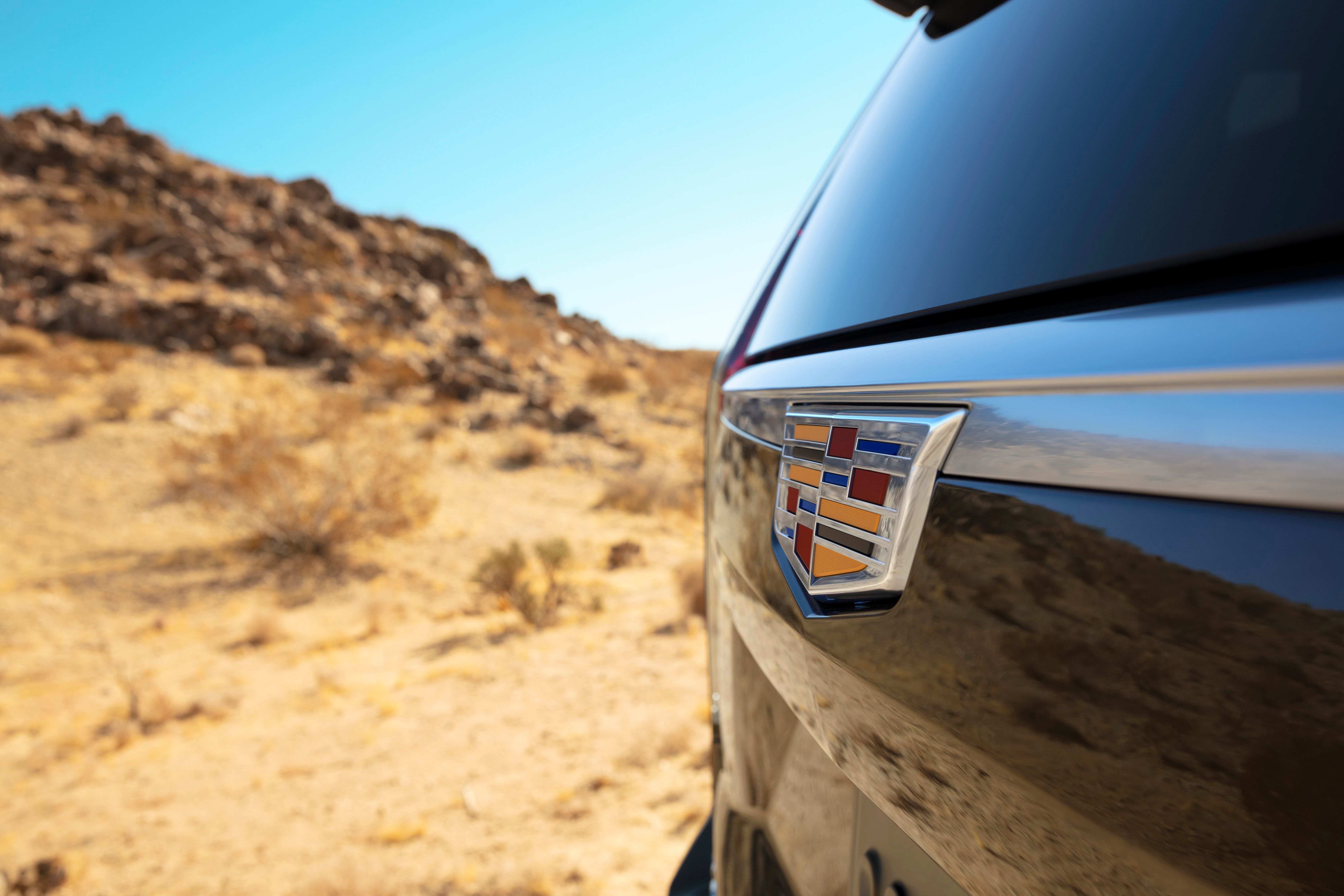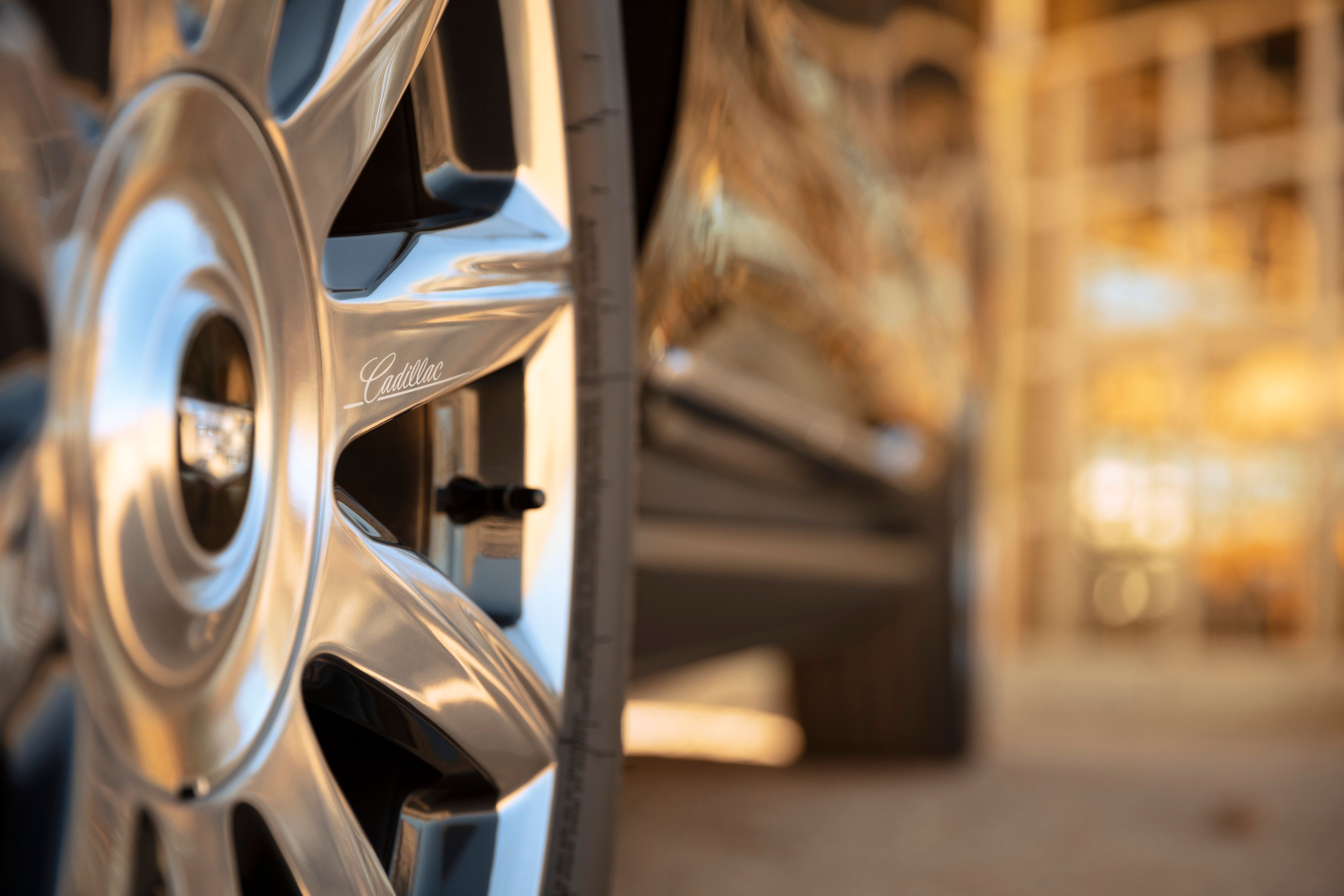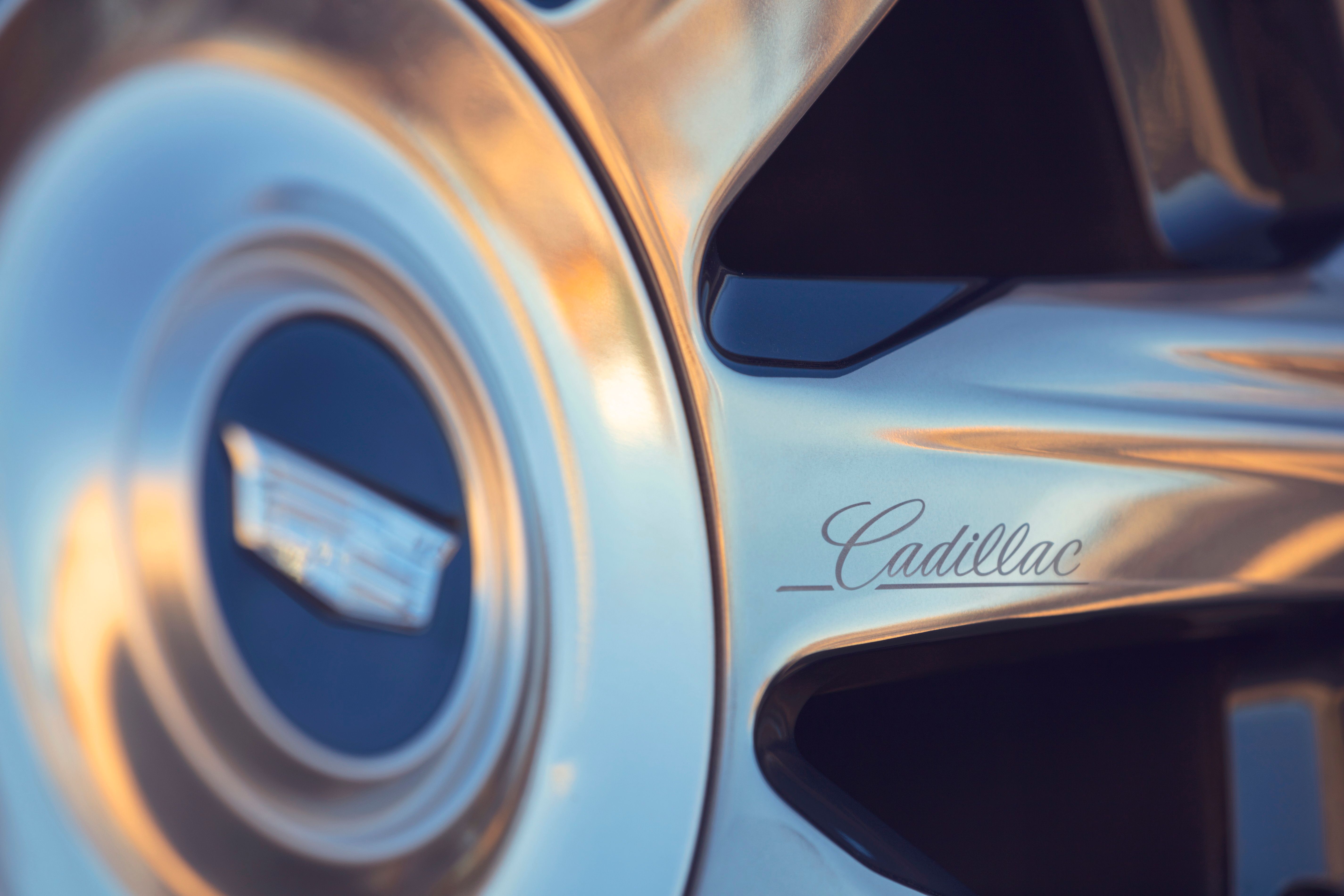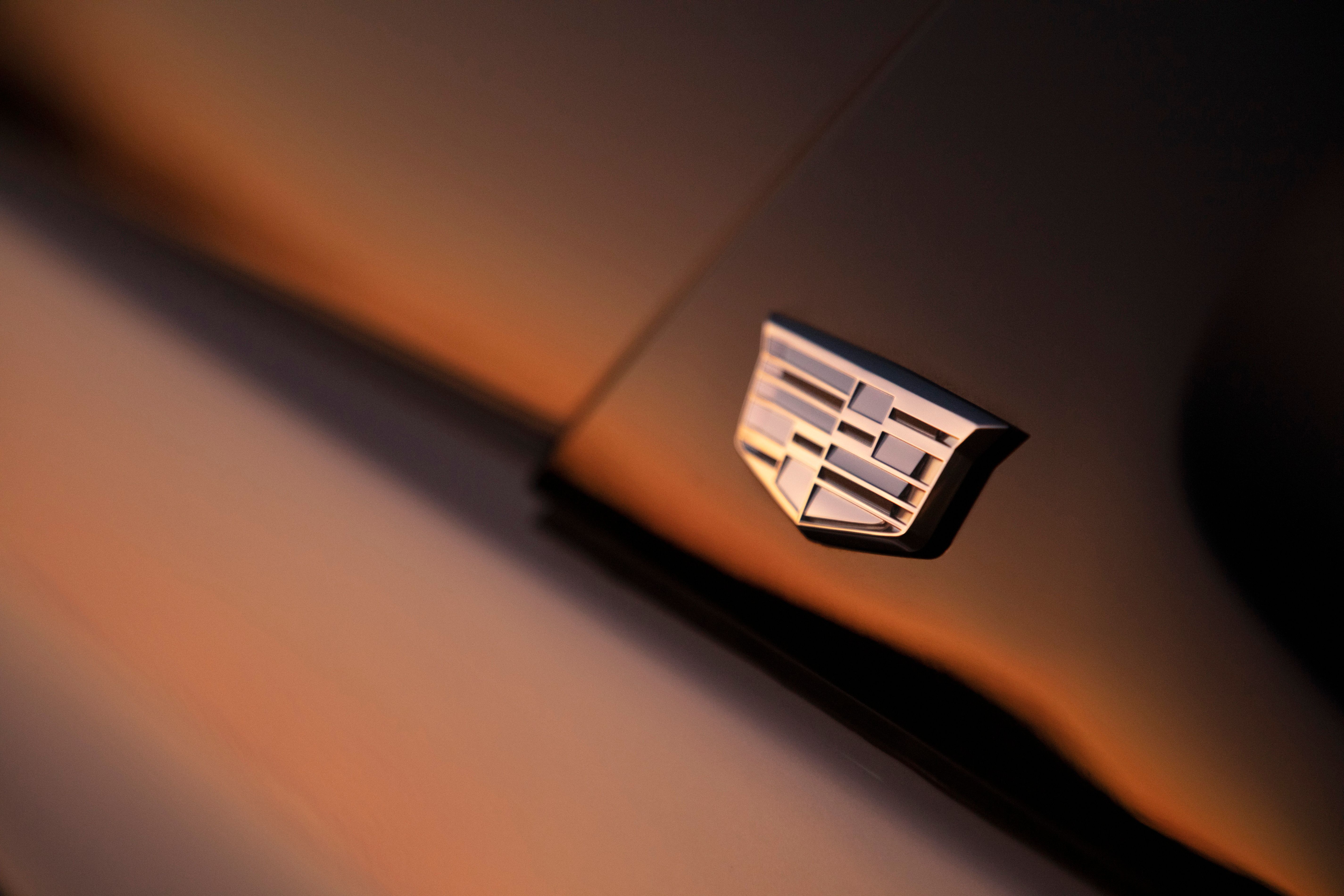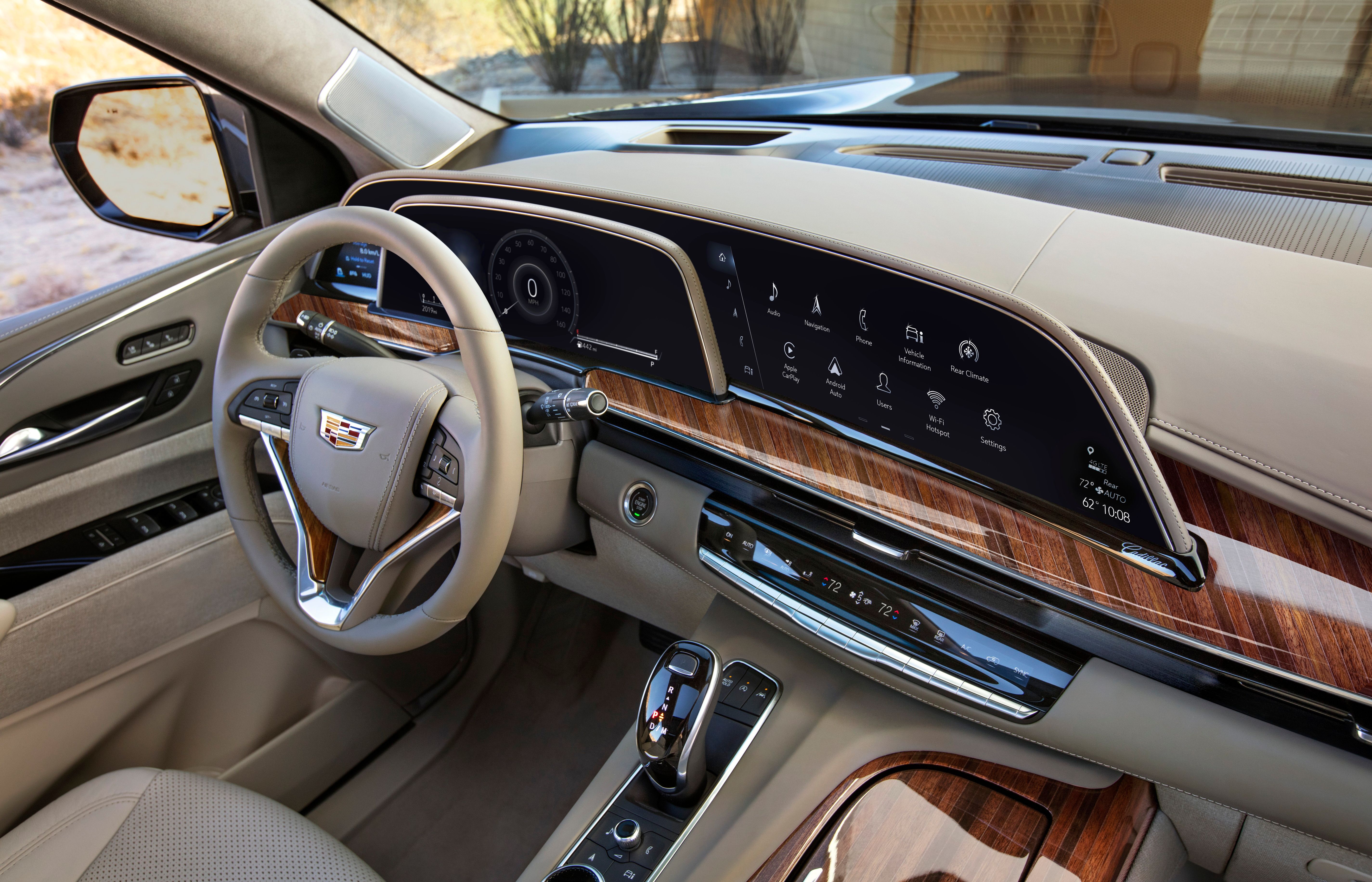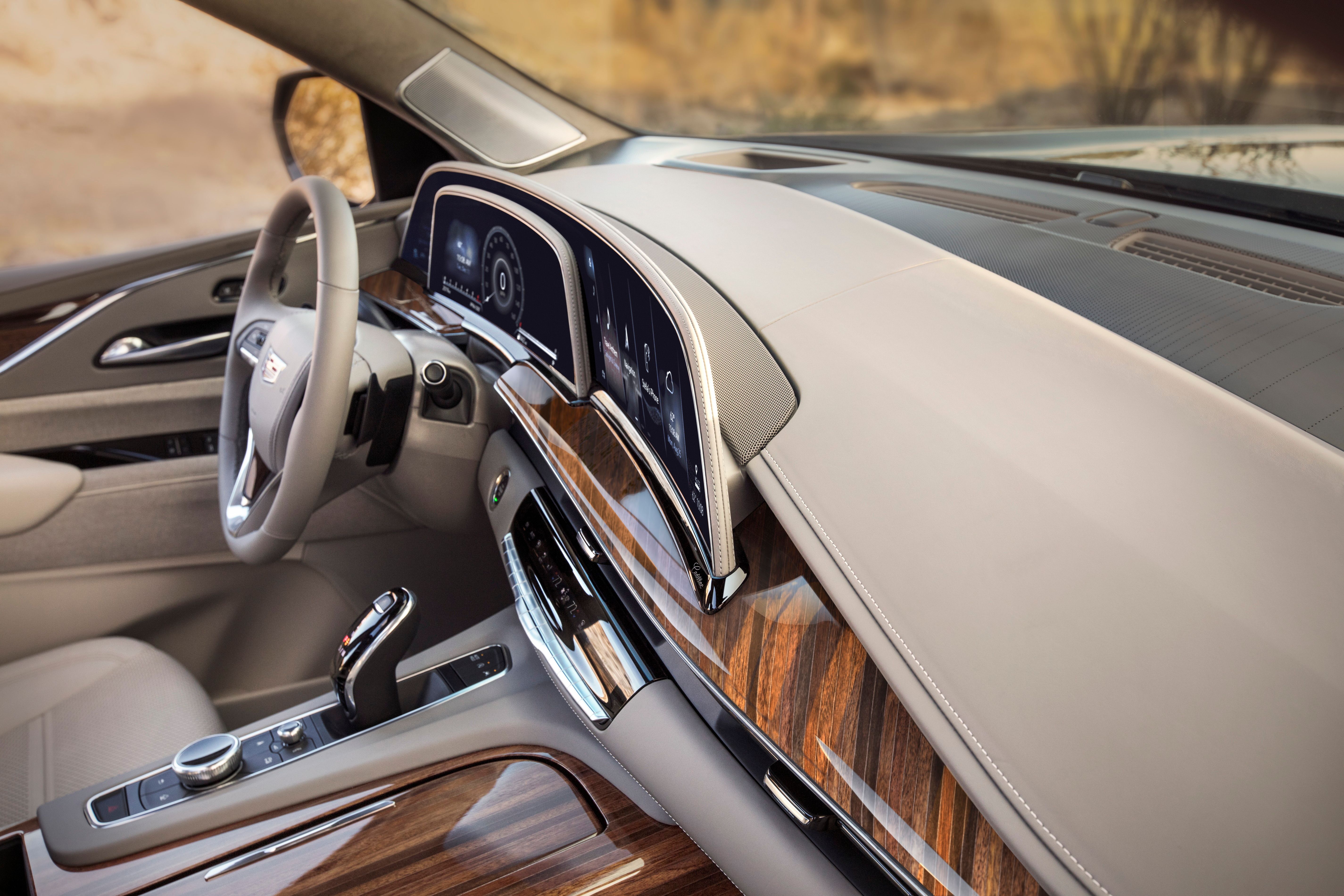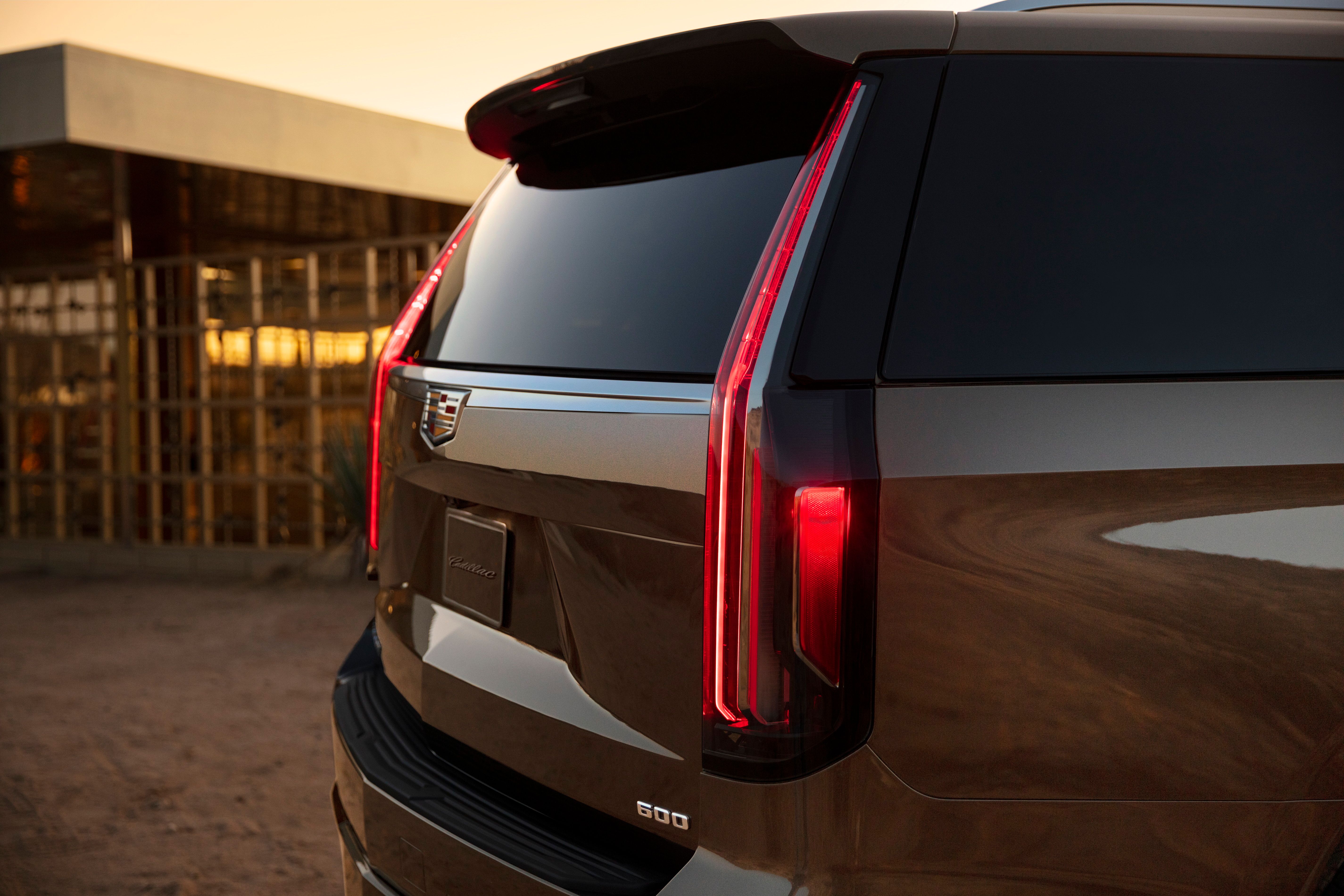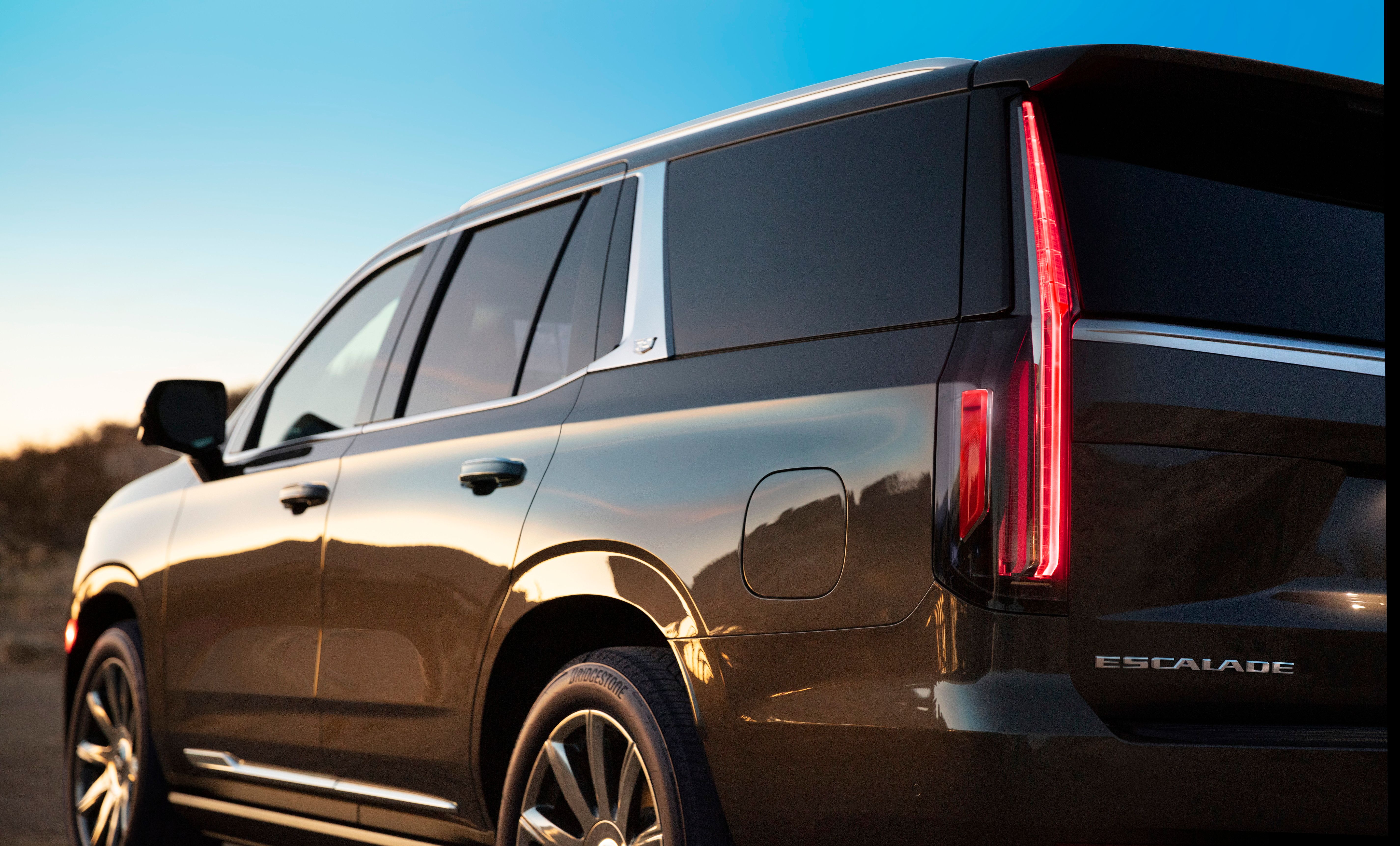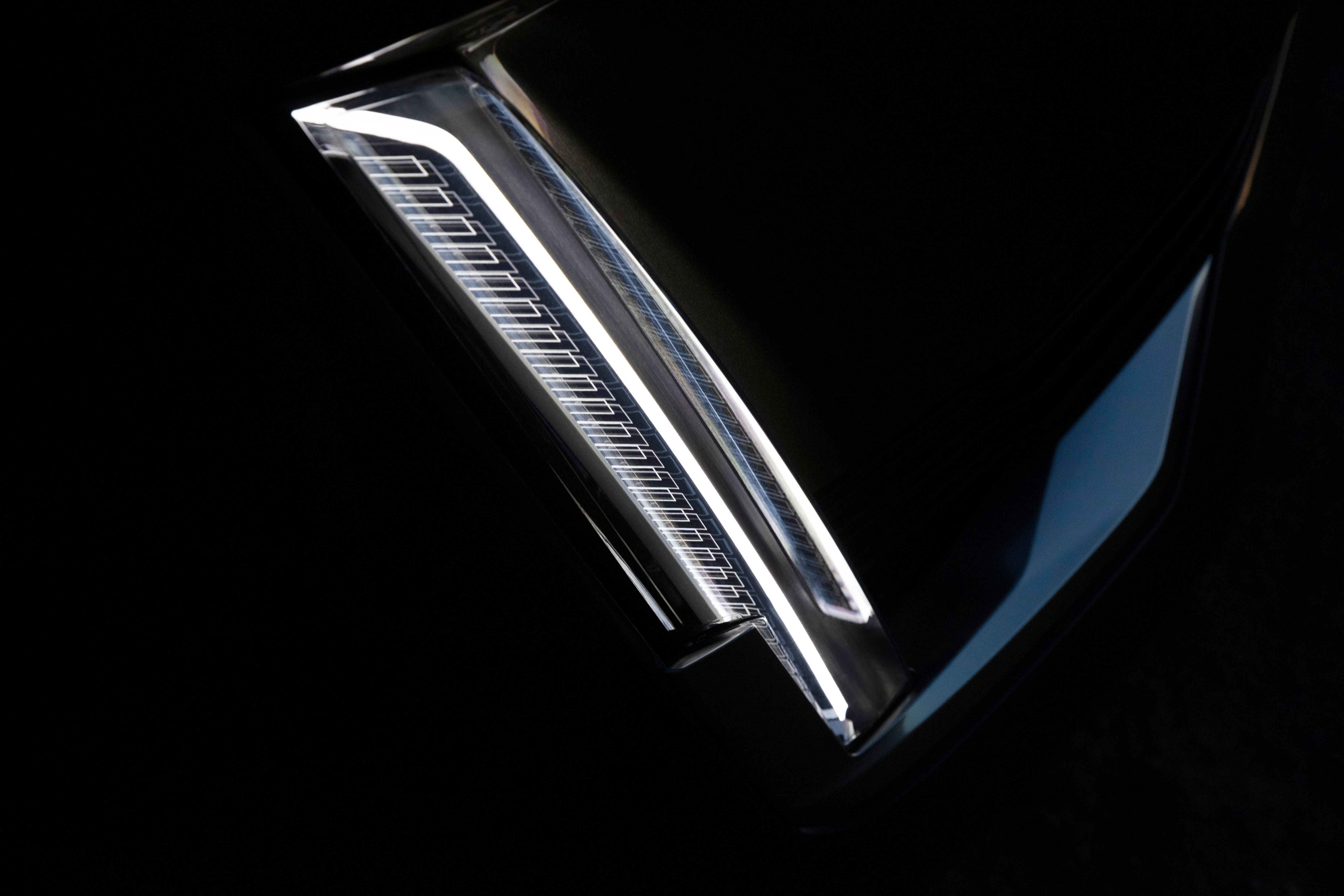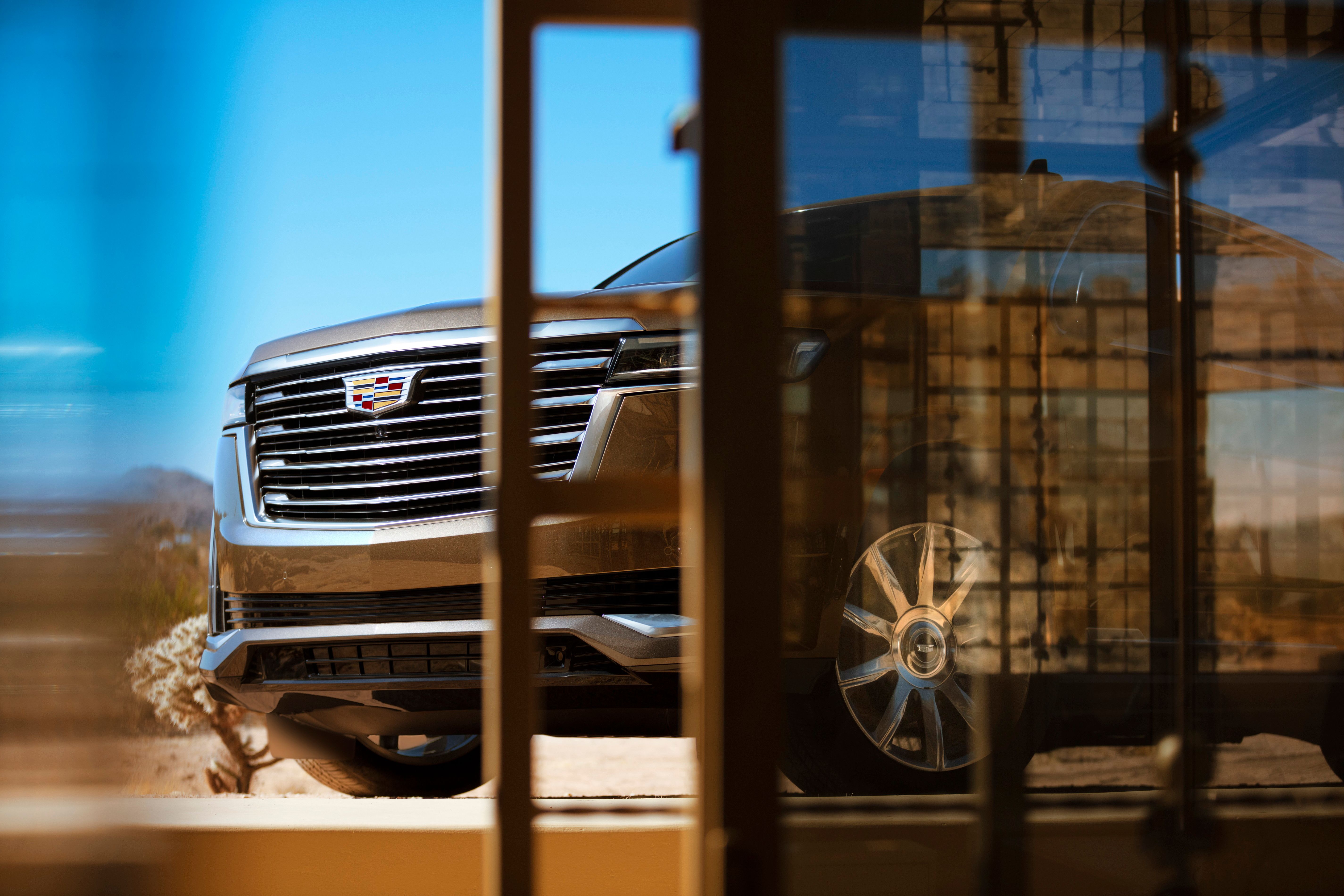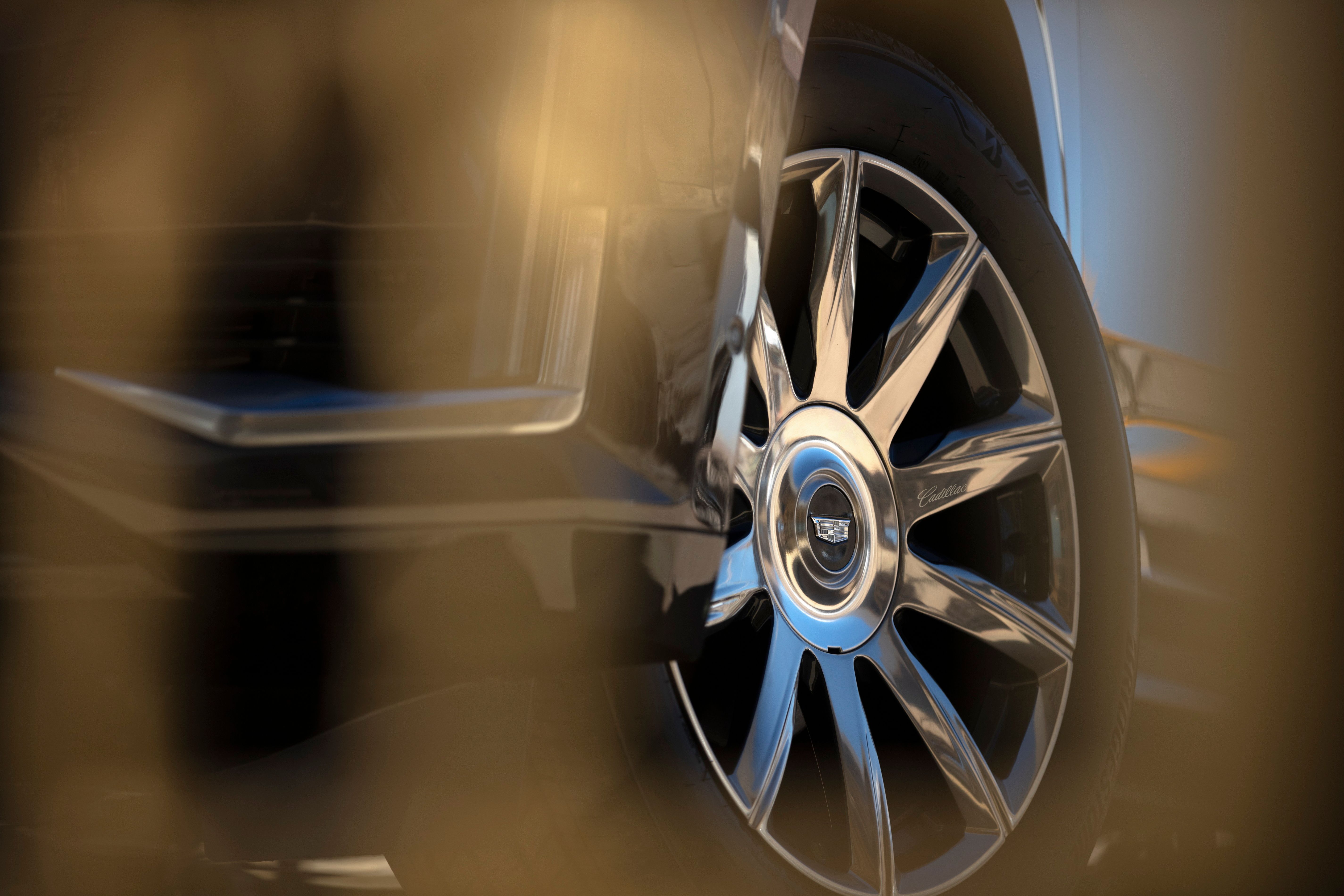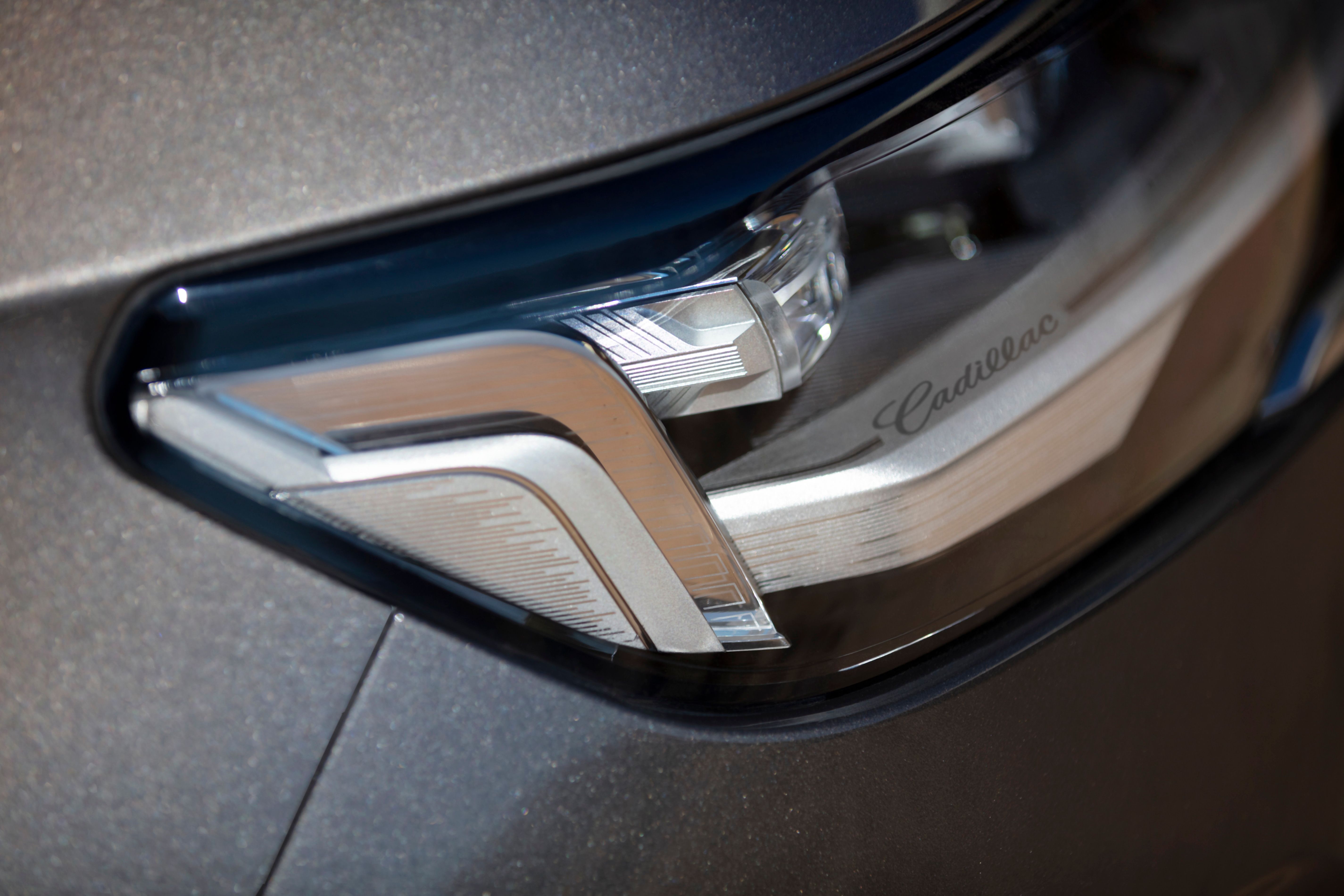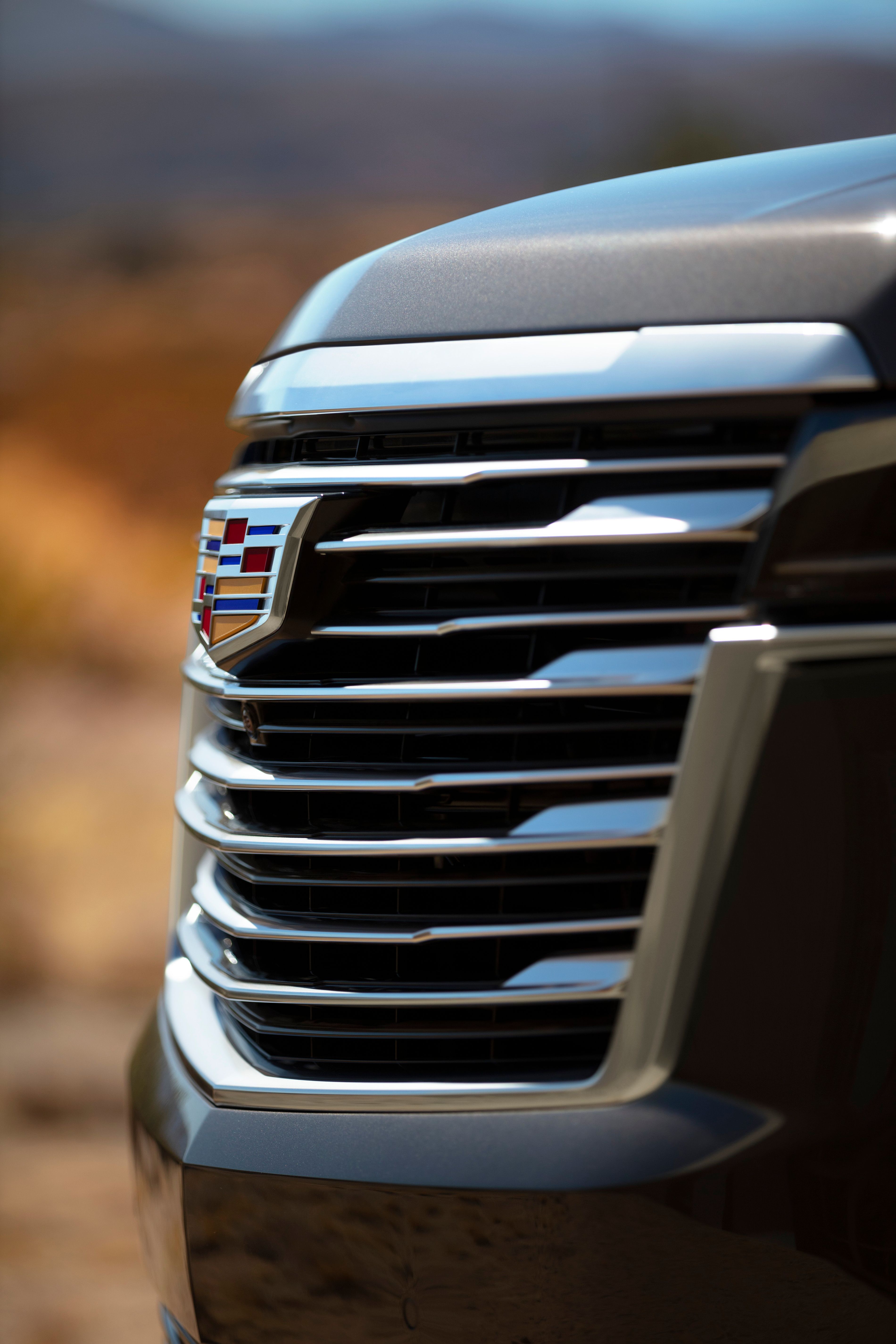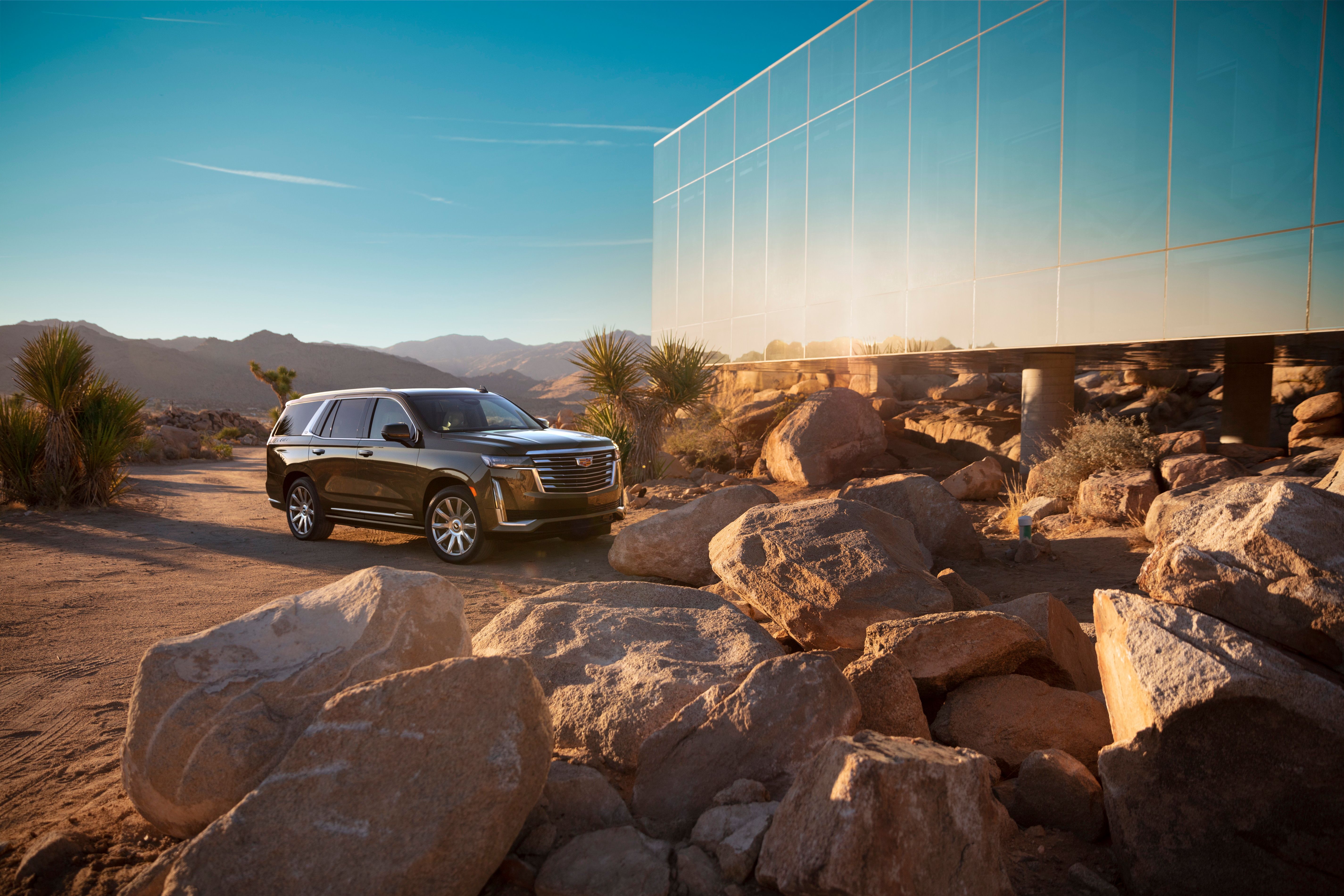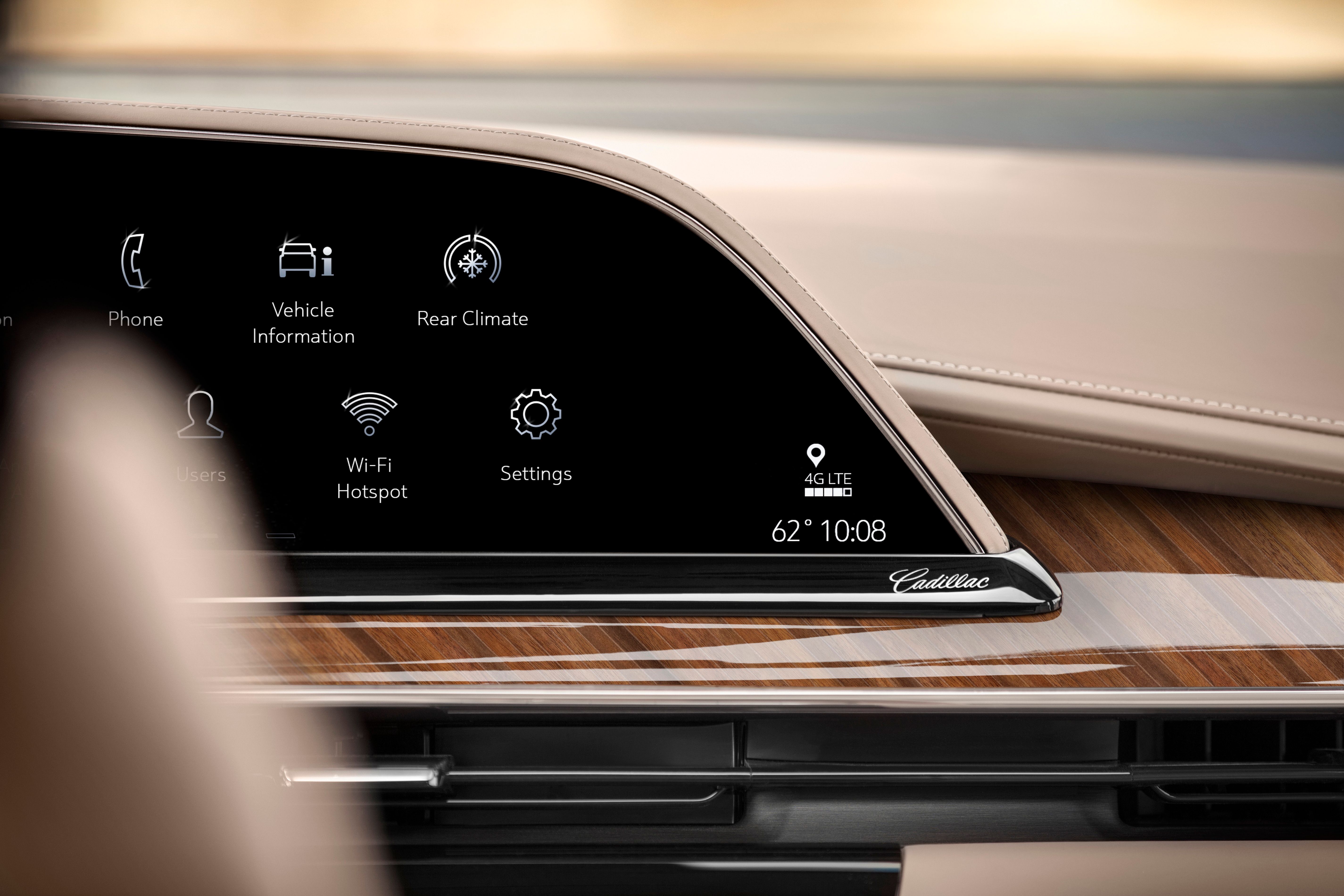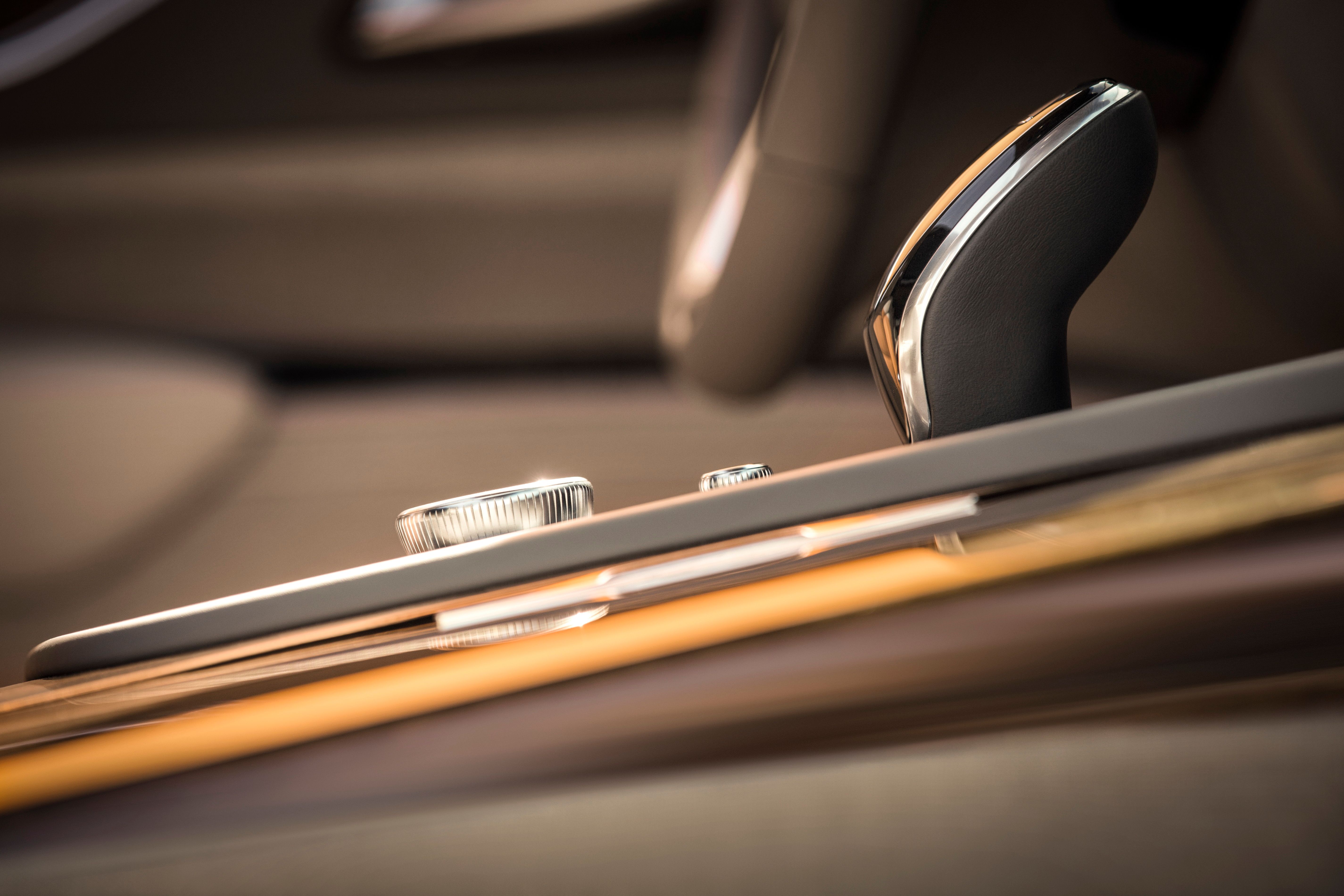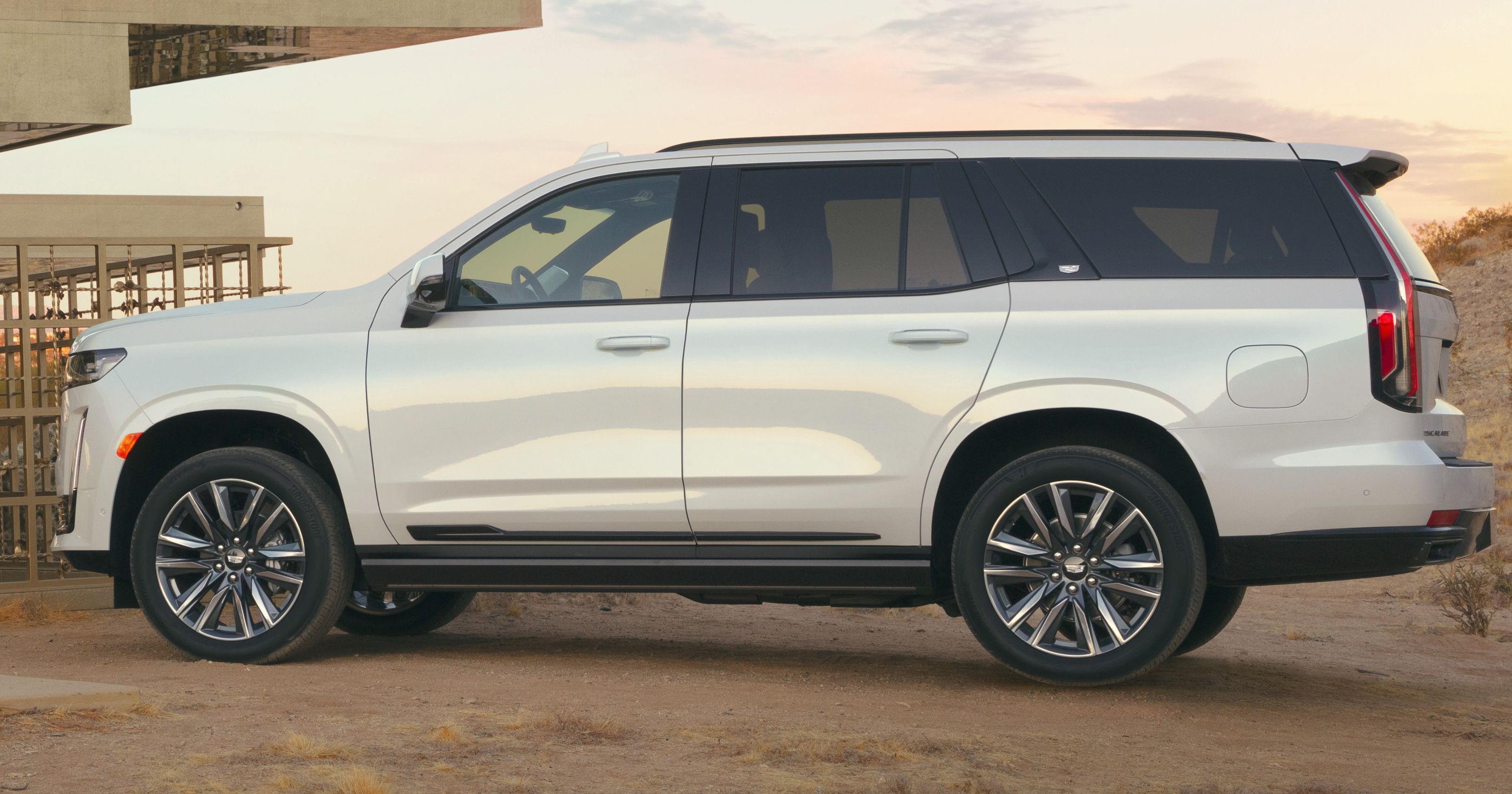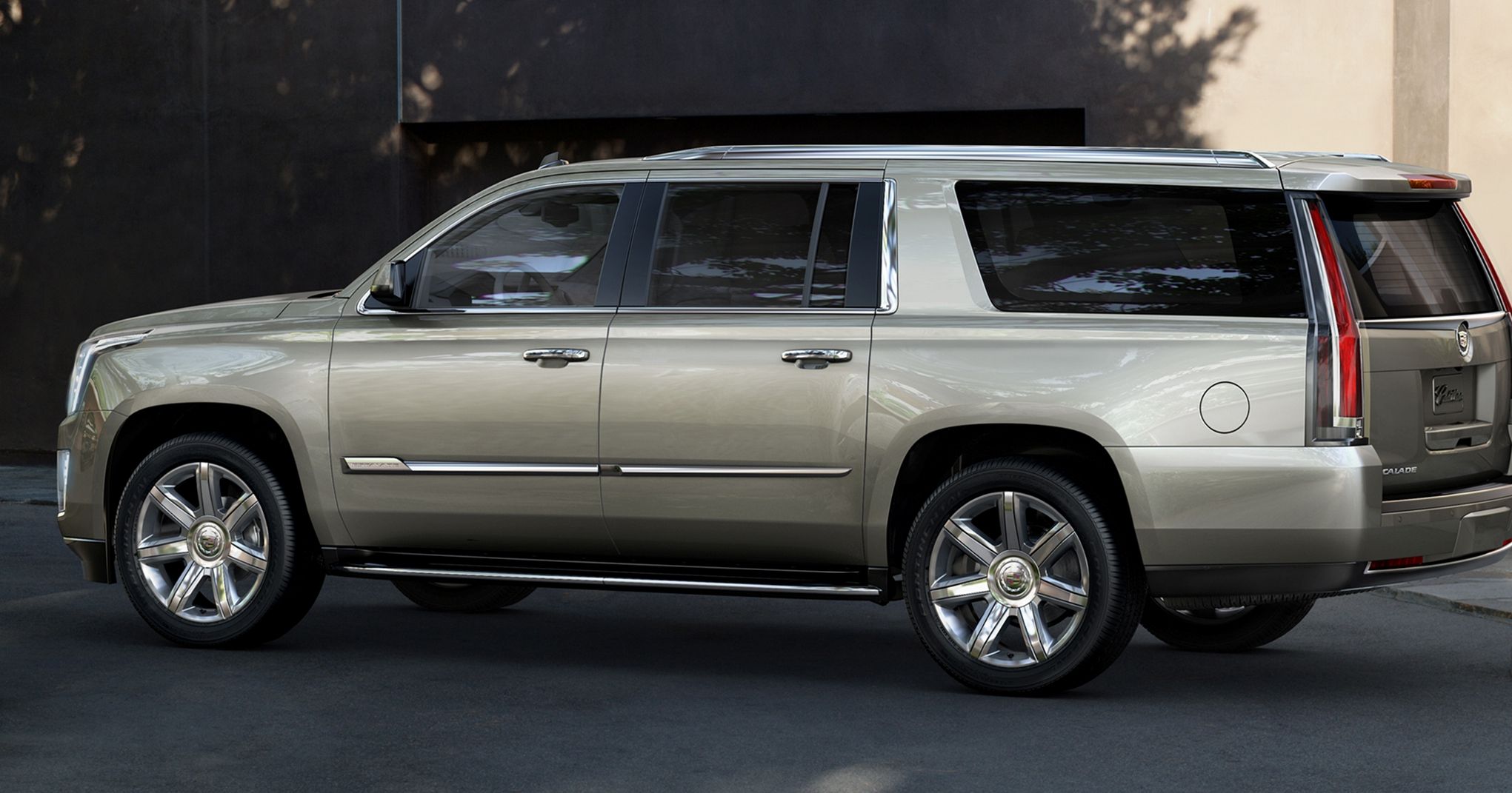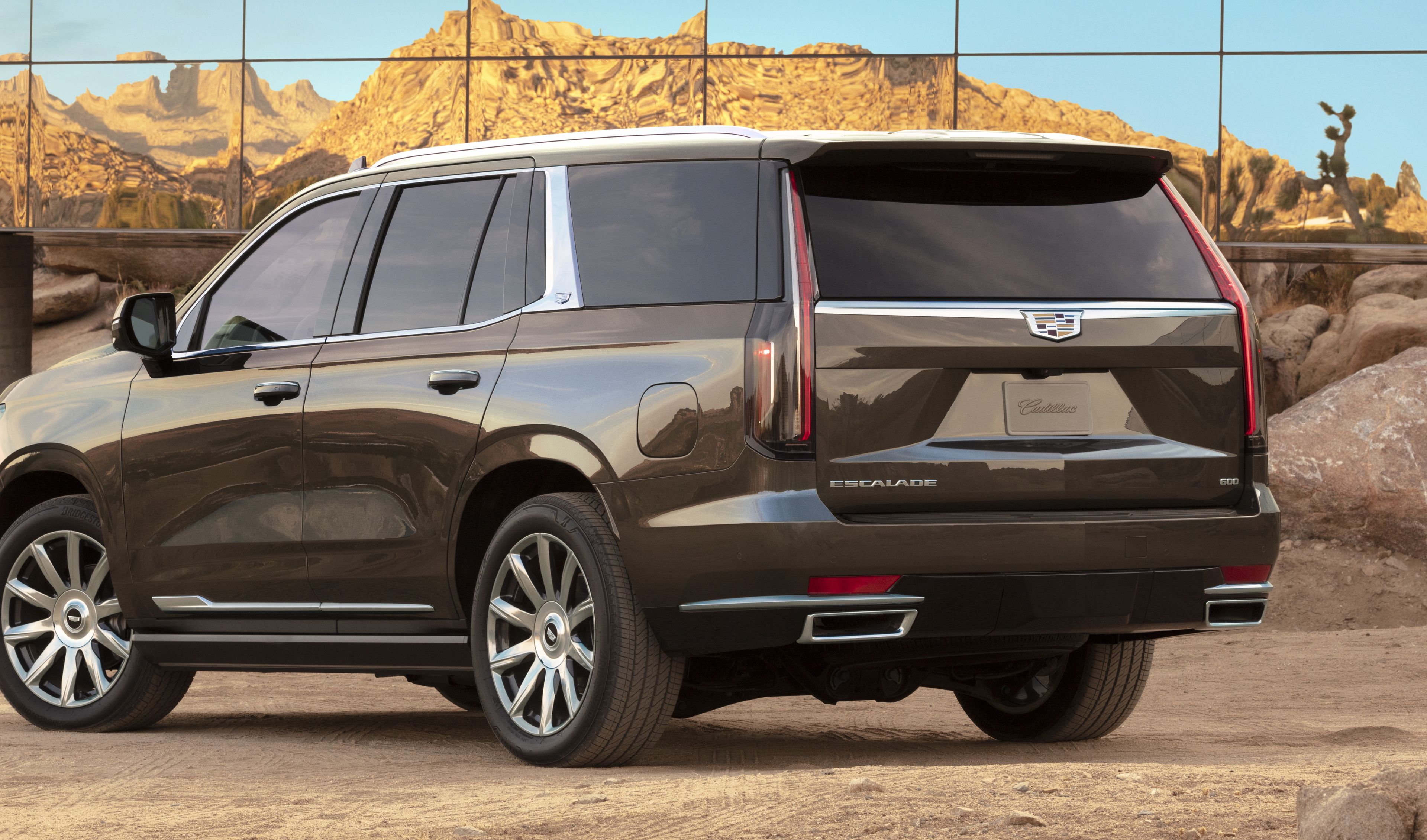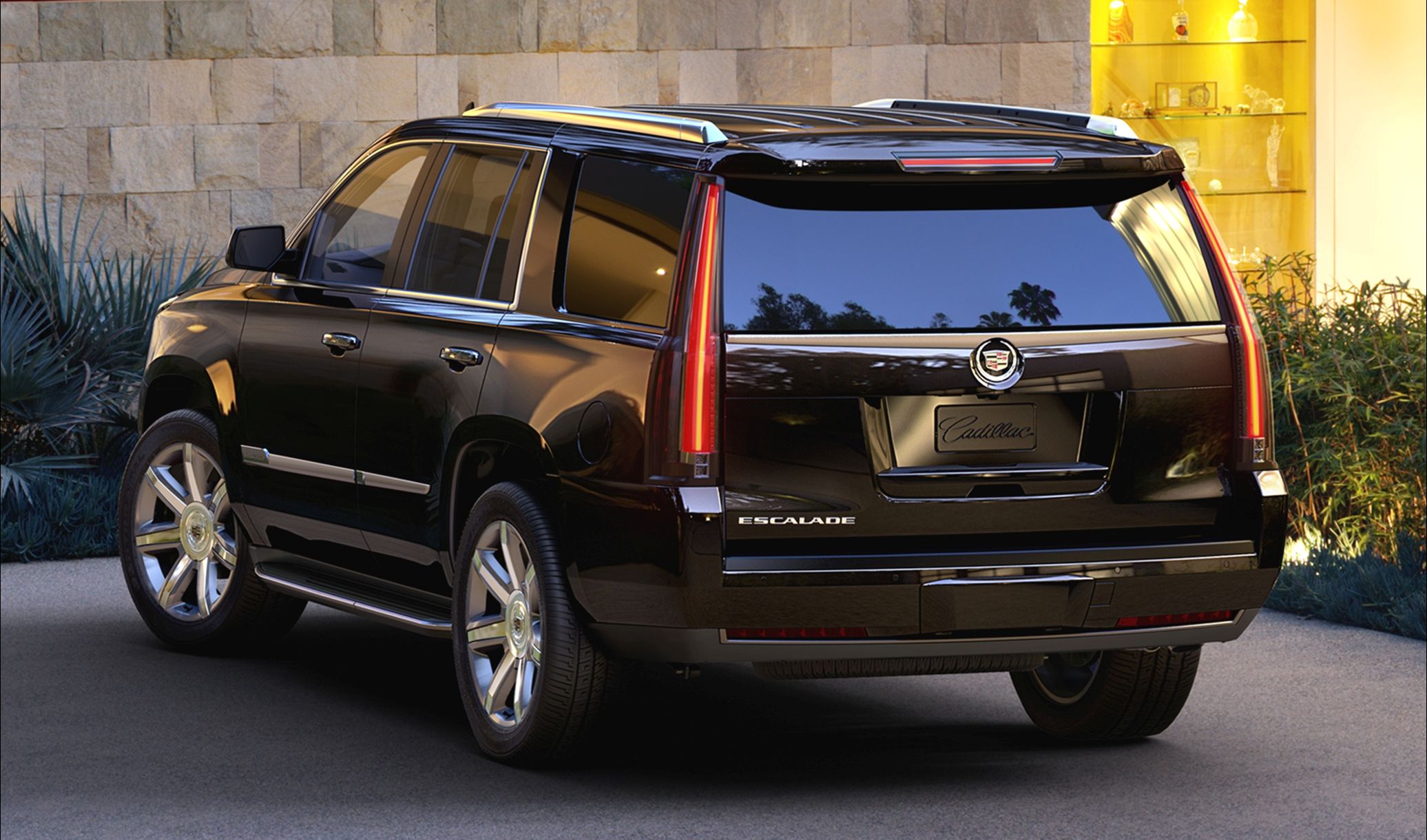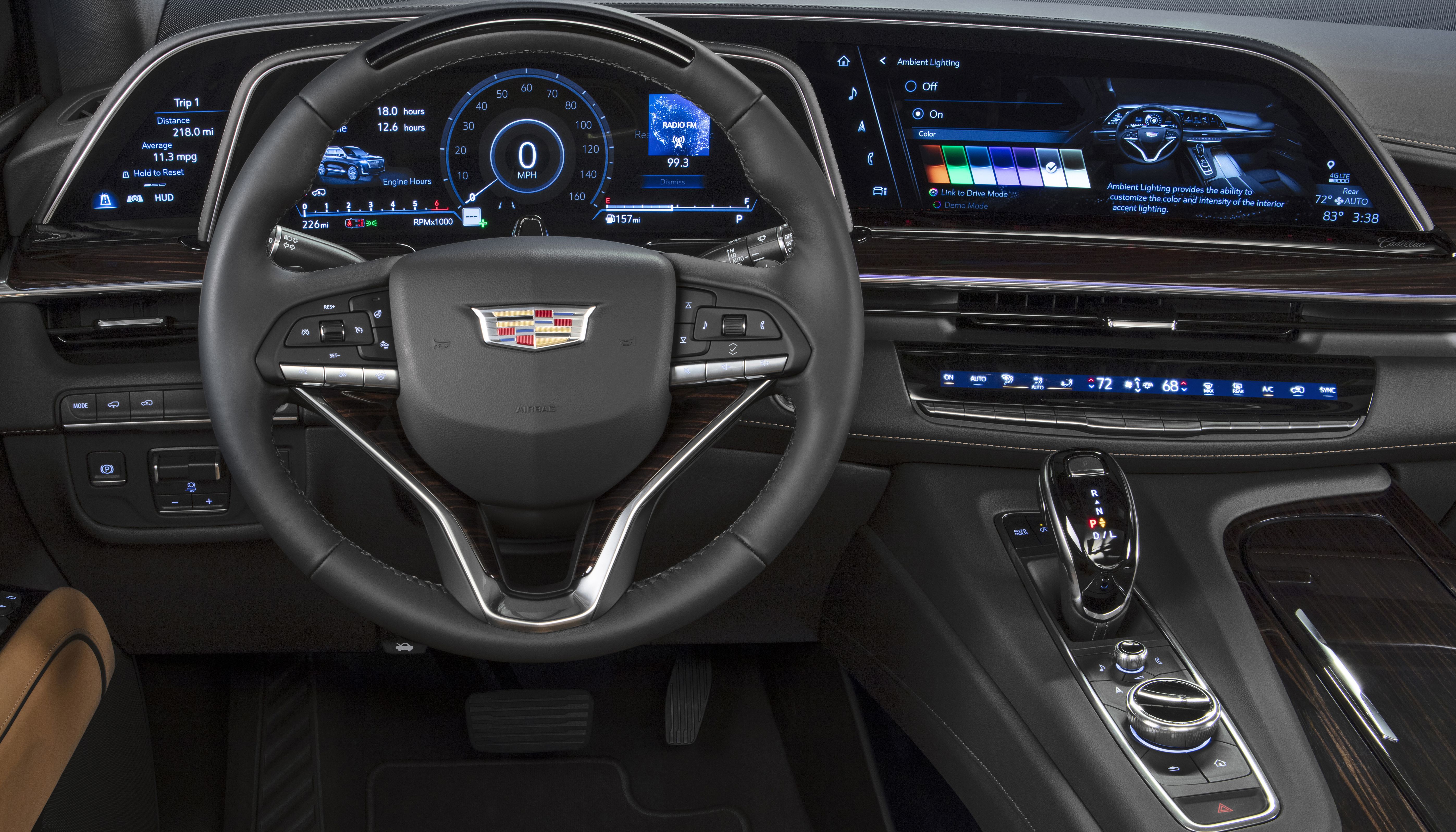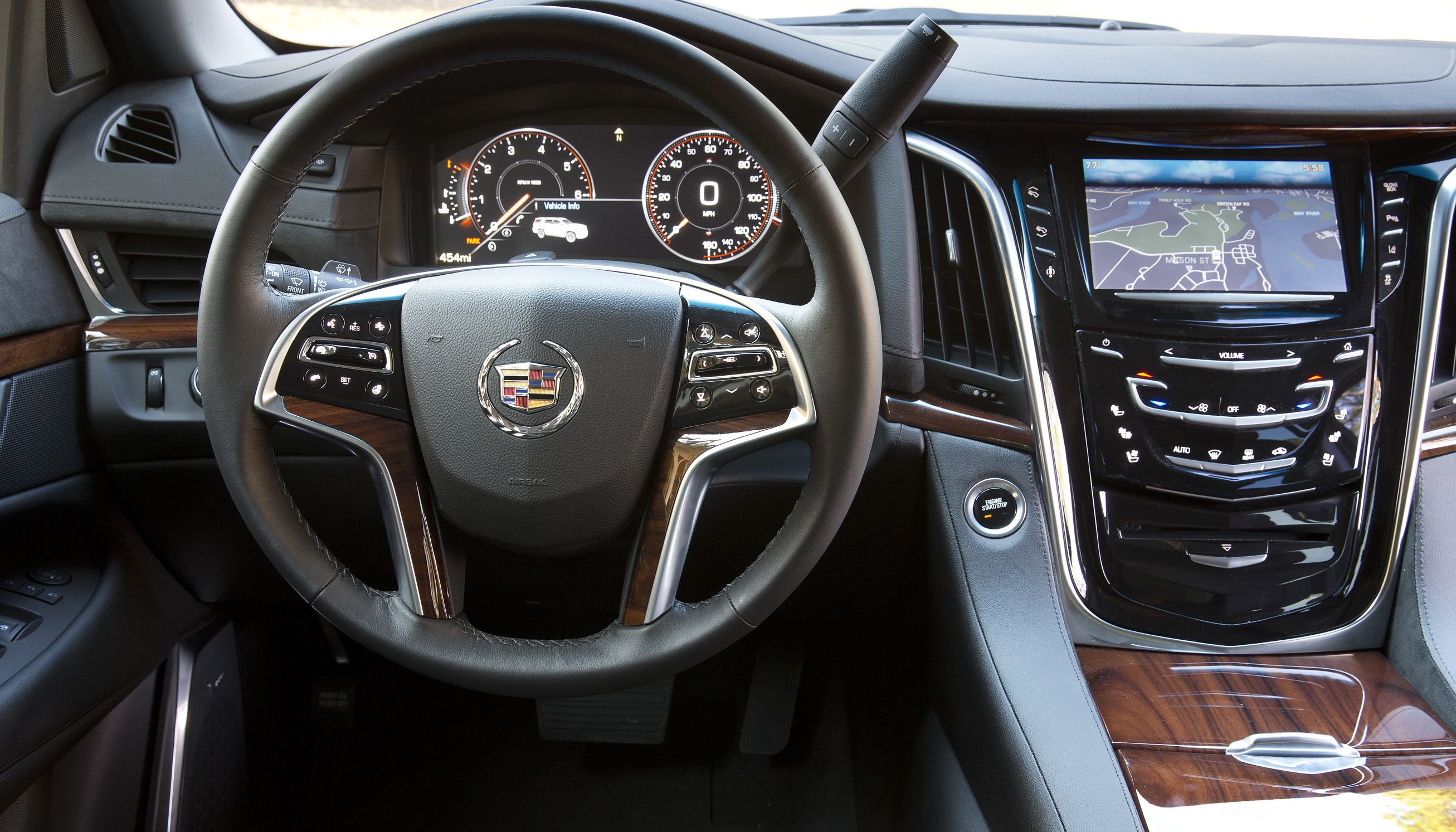The 2021 Cadillac Escalade is the fifth generation of the company's luxury SUV. Unveiled at the 2020 Chicago Auto Show, it replaces a fourth-generation SUV that's six years old. Just like its predecessor, the 2021 Escalade shares underpinnings with the Chevrolet Suburban and Tahoe. But unlike the old Escalade, it features an independent rear suspension, a first for the nameplate. It's also the first production vehicle ever to feature curved OLED displays for the instrument cluster and infotainment system. Power comes from a big-displacement V-8 engine mated to a 10-speed automatic transmission, but Cadillac also offers a new 3.0-liter diesel engine, a premiere for the nameplate. Let's find out more about that in the review below.
2021 Cadillac Escalade
- Make: Array
- Model: 2021 Cadillac Escalade
- Engine/Motor: V8
- Horsepower: 420 @ 5600
- Torque: 460 @ 4100
- [do not use] Vehicle Model: Array
<
Exterior
As expected, the Escalade's new exterior design is inspired by the Escala concept. And like other vehicles in the lineup, it now features much smaller headlamps with LED technology.
The main grille is a dramatic change compared to the old Escalade. It's slightly wider and taller and features four horizontal slats with shiny blades at the corners. Paired with the horizontal headlamps, the new grille makes the Escalade look wider. Down below, we can see a couple of new vents. There's a trapezoidal opening in the lower bumper and a wider, rectangular vent that stretches between the vertical daytime running lights. The engine hood is much more muscular than before, with heavier creases to the sides and fine detailing in the center.
|
|
ids=884105,884106 |
no_overlay=false |
before_label=2021 Cadillac Escalade |
after_label=2020 Cadillac Escalade> |
Surprisingly enough, the profile boasts significant changes. The first thing that catches the eye is the new beltline that's a bit more prominent and placed a couple of inches lower than on the old model. The lower glasshouse line is also different. While the old Escalade had the lower sections of the windows defined by a straight line, the old SUV features a higher third-row window.
Next up, we can see that the wheel arches are now perfectly round, a big change from the almost square arches of the outgoing Escalade.
Trim varies depending on which model you select. Go with the Sport version, and the grille and body trim is black. The Luxury and Premium Luxury versions feature brighter Galvano trim for that classy American look.
|
|
ids=884825,884826 |
no_overlay=false |
before_label=2021 Cadillac Escalade |
after_label=2020 Cadillac Escalade> |
The rear end of the new Escalade is just as body as the old model. Cadillac also kept the vertical taillights that run from the top of the rear bumper to the bottom of the tailgate spoiler. Of course, the lights were redesigned and are now a bit wider and sport a new LED layout. Other changes include a thinner chrome trim below the rear window, a redesigned trapezoidal license place recess, and a cleaner bumper. The latter incorporates rectangular exhaust pipes to the corners.
|
|
ids=884827,884828 |
no_overlay=false |
before_label=2021 Cadillac Escalade |
after_label=2020 Cadillac Escalade> |
As far as dimensions go, the new Escalade is a tad bigger than its predecessor. Specifically, the standard-wheelbase model is 211 inches long, 8.5 inches longer than the old model. The extended wheelbase version, known as the ESV, comes in at 226.9 inches, 2.6 inches longer than its predecessor. The new Escalade is 81 inches wide, only half-inch more than the previous model. The redesigned SUV is a bit higher at 76.6 inches, 2.2 inches more than the outgoing model. Cadillac added a few inches to the wheelbase too. At 120.9 inches long, the wheelbase of the standard model is 4.9 inches longer than the old SUV. The ESV model's wheelbase measures 134.1 inches, 4.1 more than the old model.
2021 Cadillac Escalade vs 2020 Escalade exterior dimensions
|
Wheelbase(in / mm): |
120.9 / 3071 |
134.1 / 3407 |
116 / 2946 |
130 / 3302 |
|
|---|---|---|---|---|---|
|
Overall Length(in / mm): |
211 / 5382 |
226.9 / 5766 |
203.9 / 5179 |
224.3 / 5697 |
|
|
Overall Width(in / mm): |
81.0 / 2059 |
81.1 / 2059 |
80.5 / 2045 |
80.5 / 2045 |
|
|
Overall Height(in / mm): |
76.6 / 1948 |
76.4 / 1942 |
74.4 / 1890 |
74 / 1880 |
|
|
Front Track (in / mm): |
68.5 /1737 (front) |
68.5 / 1737 (front) |
68.7 / 1745 (front) |
68.7 / 1745 (front) |
|
|
Read Track (in / mm): |
68.3 / 1730 (rear) |
68.3 / 1730 (rear) |
68.7 / 1745 (rear) |
68.7 / 1745 (rear) |
Interior
Just like the exterior, the interior of the new Escalade is influenced by the Escala concept. Although Cadillac retained the organic feel of the old model, it made radical changes to the layout. And like most premium automakers out there, it ditched the vertical A/C vents for horizontal outlets placed in a straight line in the center of the dashboard. But by far, the biggest highlight here three-piece display that stretches from the driver-side A-pillar to the center of the dash. But the big news here isn't the size of the displays, but the fact that they feature curved OLED technology. Introduced in the Escala concept, this technology makes its industry debut in the Escalade.
Why is this important? Well, OLED displays are paper-thin, so they also require smaller cases, which helps save space. They also have twice the pixel density of a 4K TV, which results in a higher quality image, perfect blacks, and a larger color range. The Escalade's new screen layout includes three displays. There's a 7.2-inch touch control center to the left, a 14.2-inch instrument cluster in the center, and a 16.9-inch infotainment display to the right. The instrument cluster and the infotainment screen are larger than most offerings on the premium market, so this is a big plus for Cadillac.
|
|
ids=884830,884831 |
no_overlay=false |
before_label=2021 Cadillac Escalade |
after_label=2020 Cadillac Escalade> |
The design is now more ergonomic, as most of the buttons and knobs of the center stack have disappeared. There is a rotary dial control behind the gear lever to control the infotainment system without touching the screen. The materials are better, too, with leather and custom-woven fabric all over the place. The aluminum trim looks good, while the glossy wood on the dash and the center console feels authentic. The stainless steel speaker grilles are also a nice touch. The model shown here features Gideon Whisper Beige leather, but you can choose from eight color and trim choices, as well as between perforated or quilted leather for the seats.
Also optional is the Rear Camera Mirror, a technology that streams the rear-facing camera view on the mirror screen. To be honest, I'm a bit surprised that this feature isn't included as standard given the luxurious status of the Escalade. Night Vision, also an option, uses infrared technology to enhance visibility and detect pedestrians and large animals in the dark.
Another industry-first feature is the high-end audio system from AKG. This company, known for its high-quality microphones and headphones, designed its first audio system for automobiles, and it's exclusive to the Escalade. A 19-speaker system is standard on the SUV, but you can opt for a fancier, 36-speaker system from the same brand.
The new Cadillac isn't just a massive appliance on wheels; it also offers more passenger comfort than before. Thanks to the new platform and the longer wheelbase, there's 40 percent more third-row legroom at 34.9 inches.
There's more room behind the second row too. Now rated at 63 cubic feet, the Escalade can swallow an extra 11.4 cubic feet. Fold the second row as well, and capacity jumps to 109.1 cubic feet, 15.1 more than the old model. The total trunk capacity of the ESV model also increased from 120.9 to 126.6 cubic feet.
How does it compare to its rivals? Well, the Escalade is finally roomier than the Lincoln Navigator. Ford's luxury SUV takes up to 20.9 cubic feet of luggage behind the third row, so the Caddy wins by 4.6 cubic feet. The two SUVs are very similar behind the second row, with 63.3 cubic feet for the Navigator, only 0.3 more. When it comes to total capacity, the Navigator falls behind by 6.1 cubic feet at 103 cubic feet.
The BMW X7 is no match for the new Escalade, as it loses all comparisons by a notable margin. Space behind the third row is 11.5 cubic feet, 14 below the Escalade, while cargo room behind the second row is 26.5 cubic feet, 36.5 below the American SUV. The X7 swallows only 74.9 cubic feet behind the first row, while the Escalade benefits from an extra 34.2 cubic feet.
Drivetrain
As expected, the Cadillac Escalade continues with a naturally aspirated, 6.2-liter V-8 engine. This mill is similar to the old one, but Cadillac made some important changes. There's a new variable valve timing system, a stop/start system, and Dynamic Fuel Management. The latter replaces Active Fuel Management, and it's supposed to improve fuel economy even more. While the former alternates between V-4 and V-8 modes to save fuel, the latter can alternate between any of 17 different firing orders based on how many and which cylinders are actually firing.
So what's the catch here then? Well, the new T1 platform makes all the difference. Introduced in Chevy Silverado and then transferred to the Suburban and Tahoe, these underpinnings come with an independent rear suspension with coil springs instead of the ancient live rear axle with leaf springs. This means that each rear wheel handles road conditions separately, which improves ride quality and steering responsiveness. So even though it's not more powerful, the new Escalade is more agile. Still, some extra power would have been nice as customers usually expect more oomph from new-generation models. It would have set the Escalade apart from the Chevy and GMC SUVs as well.
But there is some interesting news in this department. For the first time ever, Cadillac is offering a diesel engine for the Escalade.
Both engines mate to 10-speed automatic transmissions with electronic shift control.
The revised V-8 keeps the Escalade above the Lincoln Navigator in terms of output. Lincoln ditched the V-8 for the current-generation SUV, opting to use a 3.5-liter V-6 EcoBoost instead. The turbocharged mill cranks out 380 horsepower, 40 horses less, but matches Cadillac's V-8 on torque at 460 pound-feet.
Compared to the X7, the Escalade fares better only when pitted against the entry-level xDrive40i. This SUV comes with a 3.0-liter inline-six rated at 335 horsepower and 332 pound-feet of torque. BMW offers a V-8 in the xDrive50i, which generates 456 horsepower and 479 pound-feet. That's 36 horses and 19 pound-feet more than the Caddy. The X7 M50i blows past the Escalade with a 4.4-liter V-8 that cranks out 523 horsepower and 553 pound-feet of twist.
Like all Cadillacs out there, the Escalade is equipped with Magnetic Ride Control. This system includes sensors that "read" the road and modify the damping rate of the shocks almost instantly. This reduces vertical body motion, body rolls, and vibrations. A new Air Ride Adaptive Suspension is also available. Combined with Magnetic Ride Control, the Air Suspension delivers automatic load-leveling and ride-height adjustments continuously at all four wheels. The system automatically lowers the suspension on the highway and raise the body for additional ground clearance when driving off-road.
Everything goes through an electronic limited-slip differential that offers precise traction and power engagement for the rear wheels. This feature is optional, though, so it will cost you extra.
Semi-Autonomous Driving
Like most premium vehicles, the new Cadillac Escalade is semi-autonomous. The system responsible for the Escalade's ability to drive on its own in certain scenarios is the Super Cruise, which Cadillac initially introduced on the CT4 and CT4 sedans. This is an enhanced version of the Super Cruise, now with automated lane change functionality.
If you're not looking ahead through the windscreen, the system will emit visual and audible alerts to make you focus on the road again. If you don't respond, Super Cruise will slow down and even bring the Escalade to a complete stop.
One cool feature that comes with Super Cruise is Lane Change on Demand, which enables you to change a lane by simply tapping the turn signal. Super Cruise will look for an opening in the respective lane and will change the lane when it's safe to do so. It will even display messages on the instrument cluster to let you know it's "looking for an opening" or "changing lanes." If Super Cruise decides it cannot perform the operation, it will notify you that it must be completed manually.
Pricing
The redesign will increase the SUV’s pricing by a bit, especially since it comes with a lot of new technology and a new design. The outgoing Escalade starts from $67,490, but that's because Cadillac offers a $9,000 discount. The full price is $75,195 for the base model and $95,295 for the range-topping Platinum version. Expect the redesigned Escalade to start from around $78,000 and go as high as $98,000. The longer wheelbase ESV will add a premium of $3,000 to $4,000. The new-generation Escalade will go on sale in the third quarter of 2020, so official pricing will be announced this spring.
Competition
Lincoln Navigator
The Navigator was completely redesigned for the 2018 model year, gaining a new exterior and the updated platform from the Ford F-150 pickup truck. Lincoln dropped the split grille in favor of a more massive unit, which makes the SUV more imposing now. However, more organic design cues also give the hauler a more elegant look, especially when compared to the Escalade. Inside the cabin, the Navigator has been upgraded in every way, from finer materials to a fresh layout with massive displays for the infotainment system and instrument cluster. The SUV is also fitted with a heads-up display, USB ports, Apple CarPlay, Android Auto, 4G LTE wi-fi, and 10-inch screens for rear-seat passengers. The Navigator carries over with the 3.5-liter EcoBoost V-6 that Lincoln introduced in 2015, but the twin-turbo unit was updated to deliver 450 horsepower and 510 pound-feet of torque. That's an extra 30 horses and 50 pound-feet over the new Escalade. A new 10-speed automatic replaced the old six-speed gearbox. The Navigator is a bit more affordable, retailing from $75,825. Opt for the range-topping Black Label model, and the sticker jumps to $96,770.
Read our full review of the 2018 Lincoln Navigator.
BMW X7
The latest addition to BMW's SUV lineup, the X7 is also larger than the X5, which turns it into a solid rival for the Escalade. Launched for the 2018 model year and built in the United States, the X7 might be a bloated X5 for the most part, but it stands out thanks to a much larger grille, slim headlamps, and a more utilitarian look overall. The SUV is obviously fitted with all of BMW's driving assist technology. However, it's not as luxurious as a Cadillac unless you go for the more expensive trims. Unlike the Escalade, the X7 is available with three different engines. The base xDrive40i model features a 3.0-liter inline-six unit rated at 335 horsepower and 332 pound-feet of torque. While this model isn't as powerful as the Escalade, the xDrive50i is. Motivated by a 4.4-liter V-8, this version comes with 456 horsepower and 479 pound-feet of twist on tap. If you want to go wild, BMW offers the X7 M50i. Also powered by a 4.4-liter V-8, it hits the ground with 523 horsepower and 553 pound-feet of torque. Pricing for the X7 starts from $73,900 for the base model, while the M50i version comes in at $99,600 before options.
Read our full review of the 2020 BMW X7
Conclusion
It goes without saying that the Escalade needed some serious upgrades in order to remain relevant against the Lincoln Navigator, while the arrival of the BMW X7 made things even more complicated. Cadillac is already struggling in other segments against the Germans, and the X7 just added another market to the company's list of problems. But it seems that General Motors didn't lose its head and allowed Cadillac to take things up a notch with the Escalade. The SUV looks better on the outside, it boasts a better fit and finish on the inside, and it comes with loads of new technology. It features the largest and most advanced infotainment display on the market (the same goes for the instrument cluster) and offers notably more cargo room. Sure, the "new" V-8 is actually the old engine with upgrades that don't improve power, but Cadillac promises better efficiency. What's more, a new diesel joined the lineup and turns the Escalade into the only SUV in this niche available with an oil burner in the United States.
Further reading
Read our full review on the 2018 Cadillac Escalade.
Read more Cadillac news.

